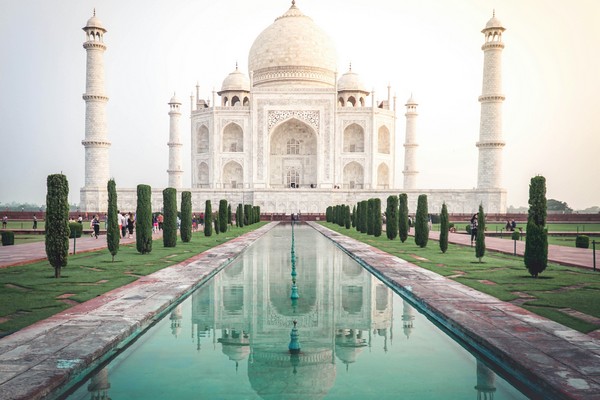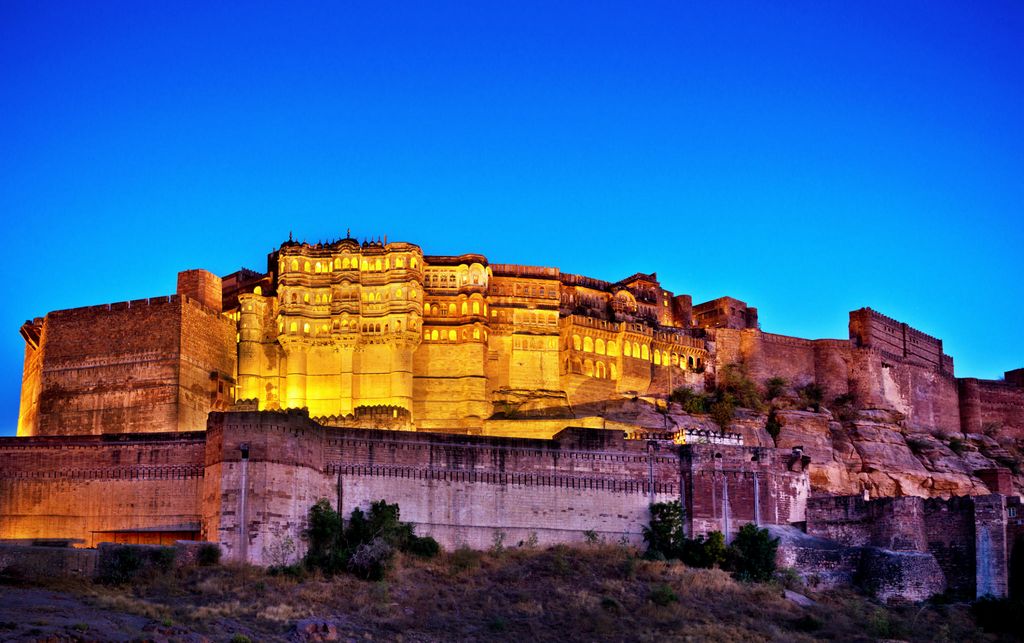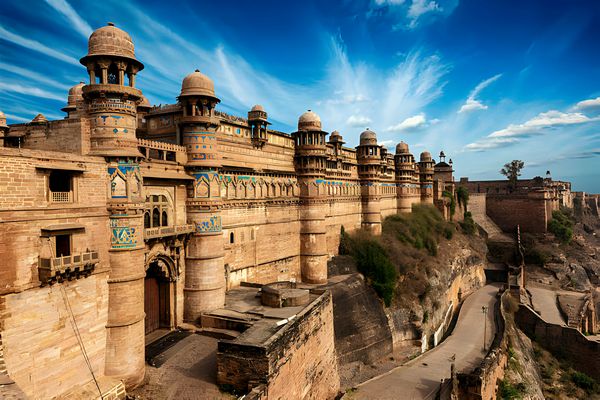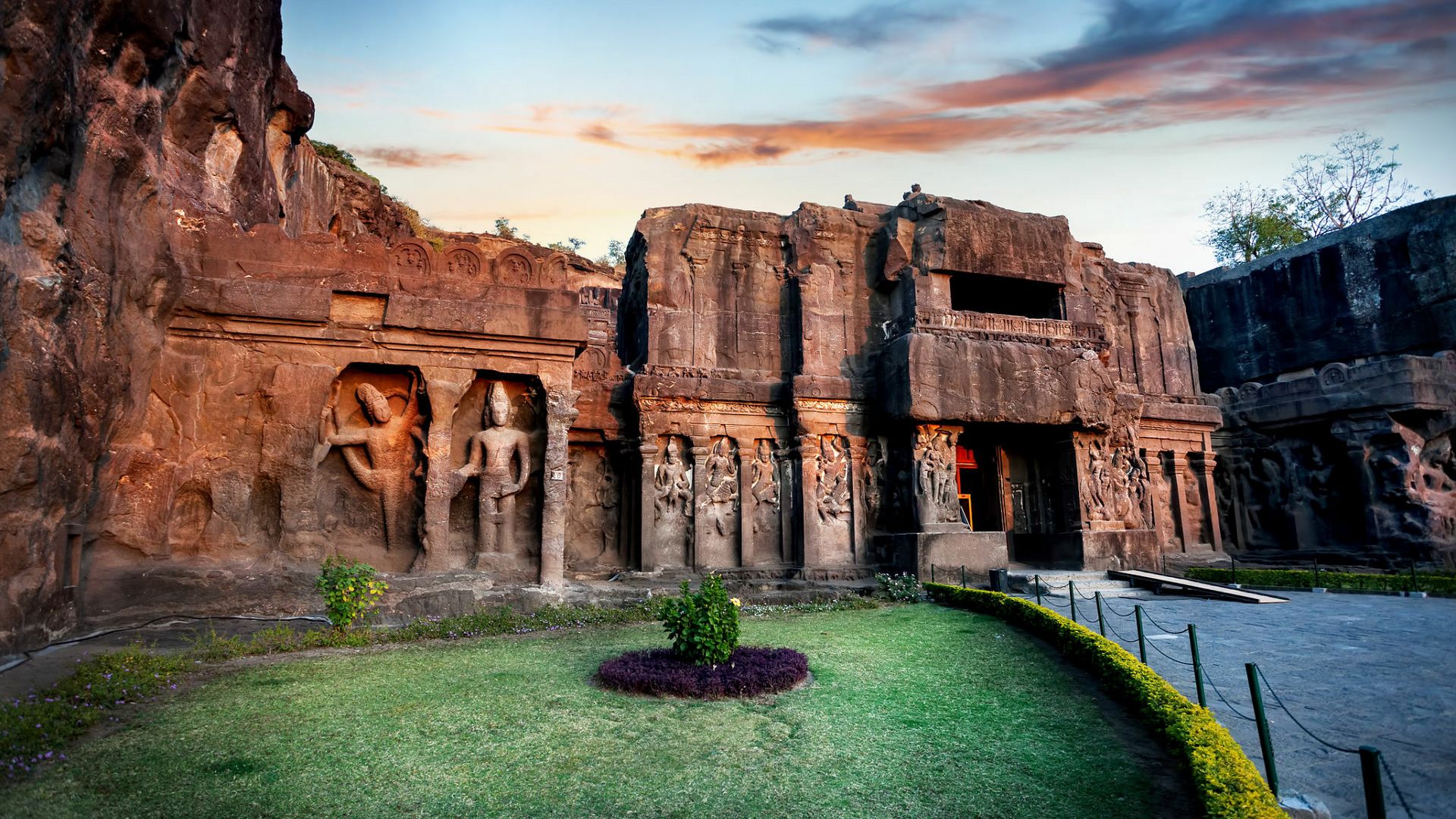
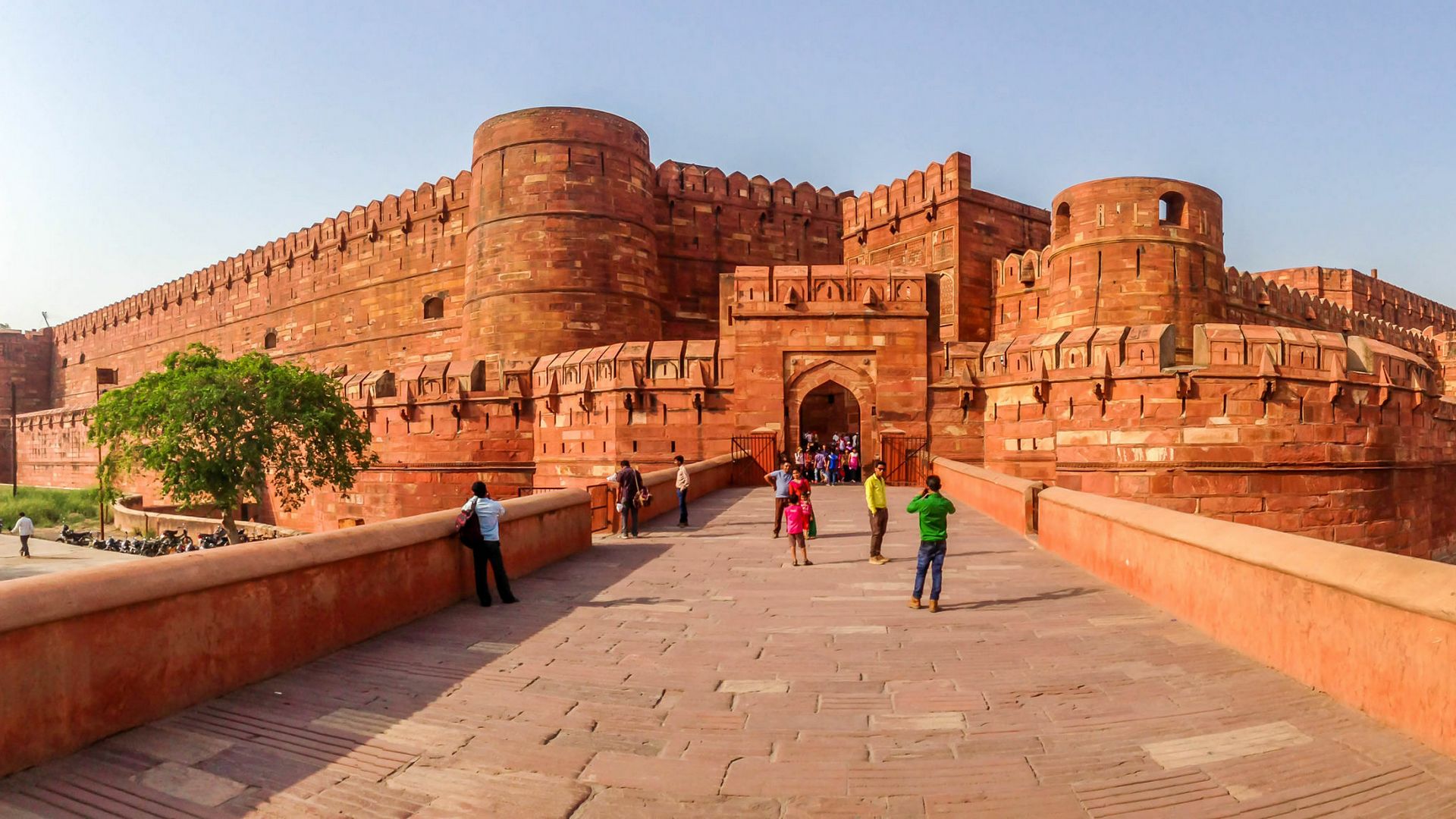
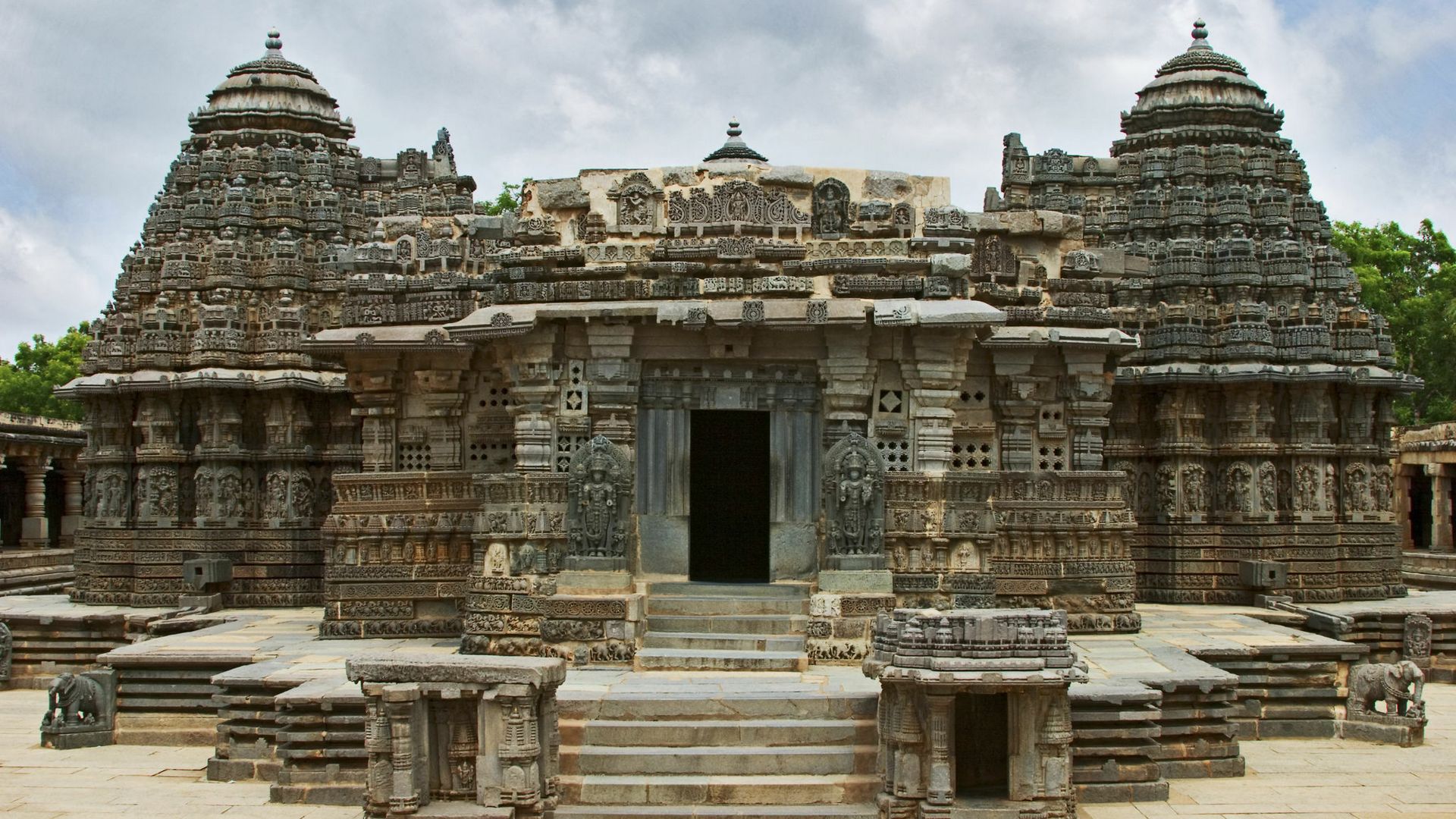
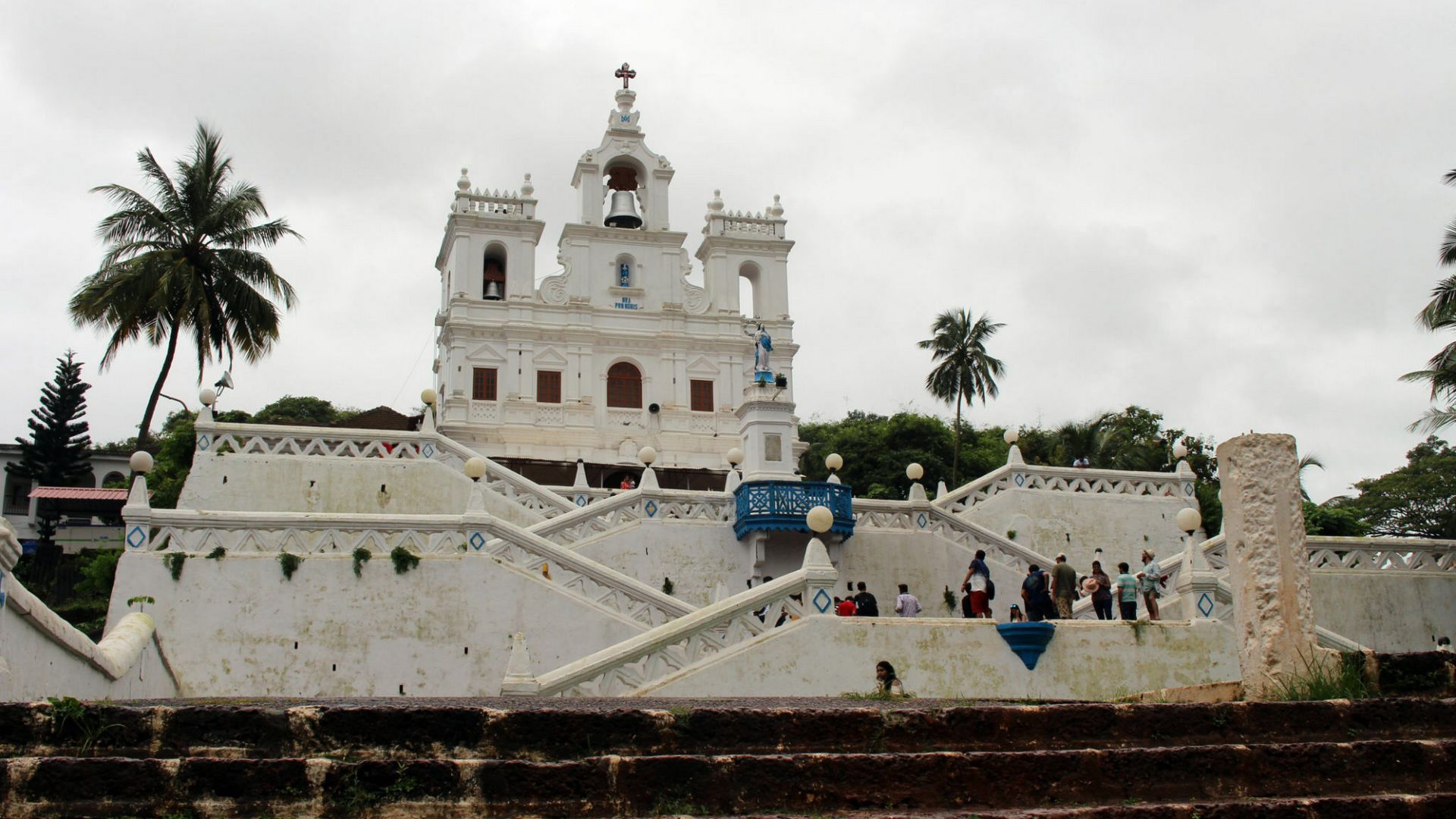
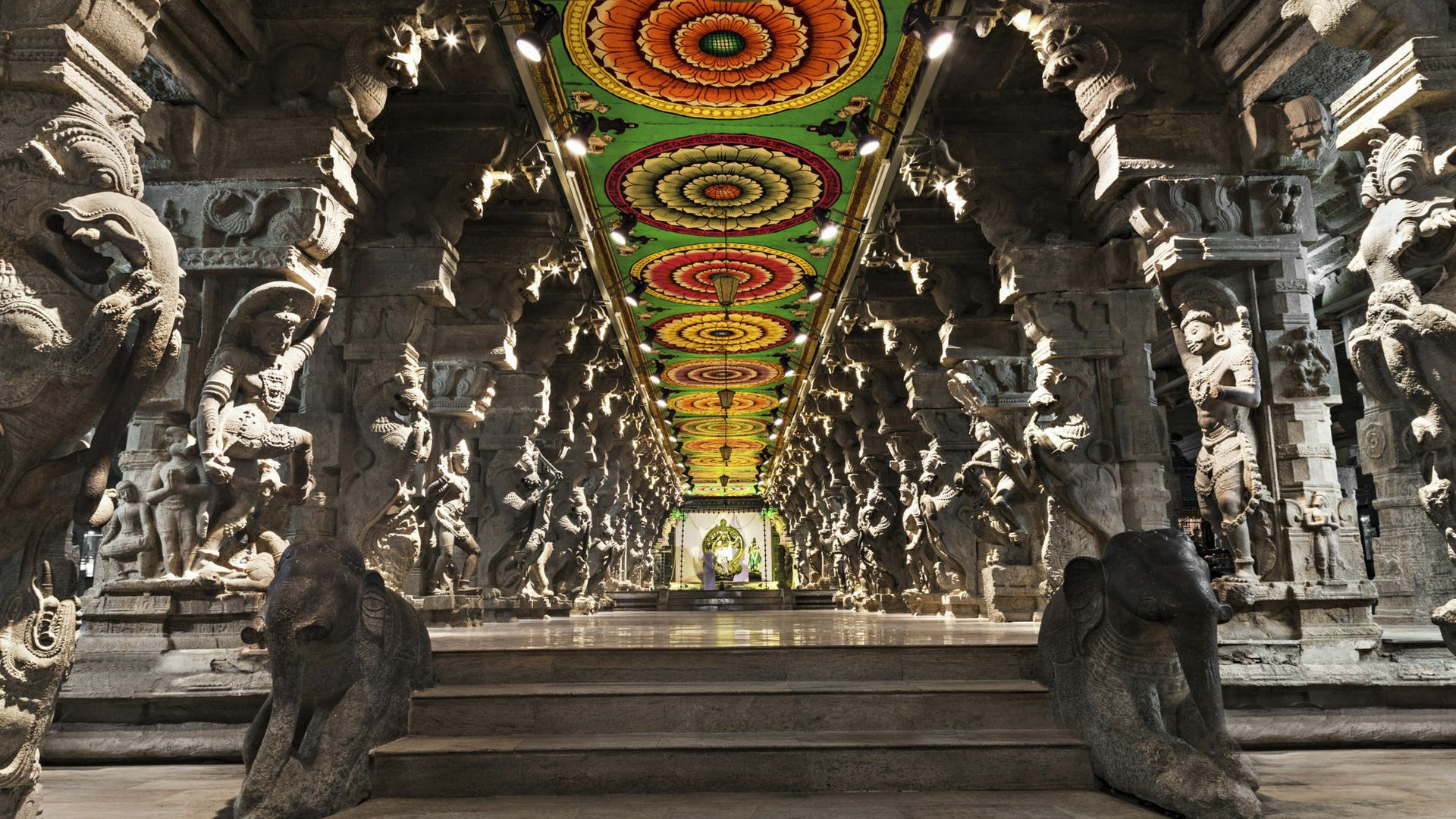
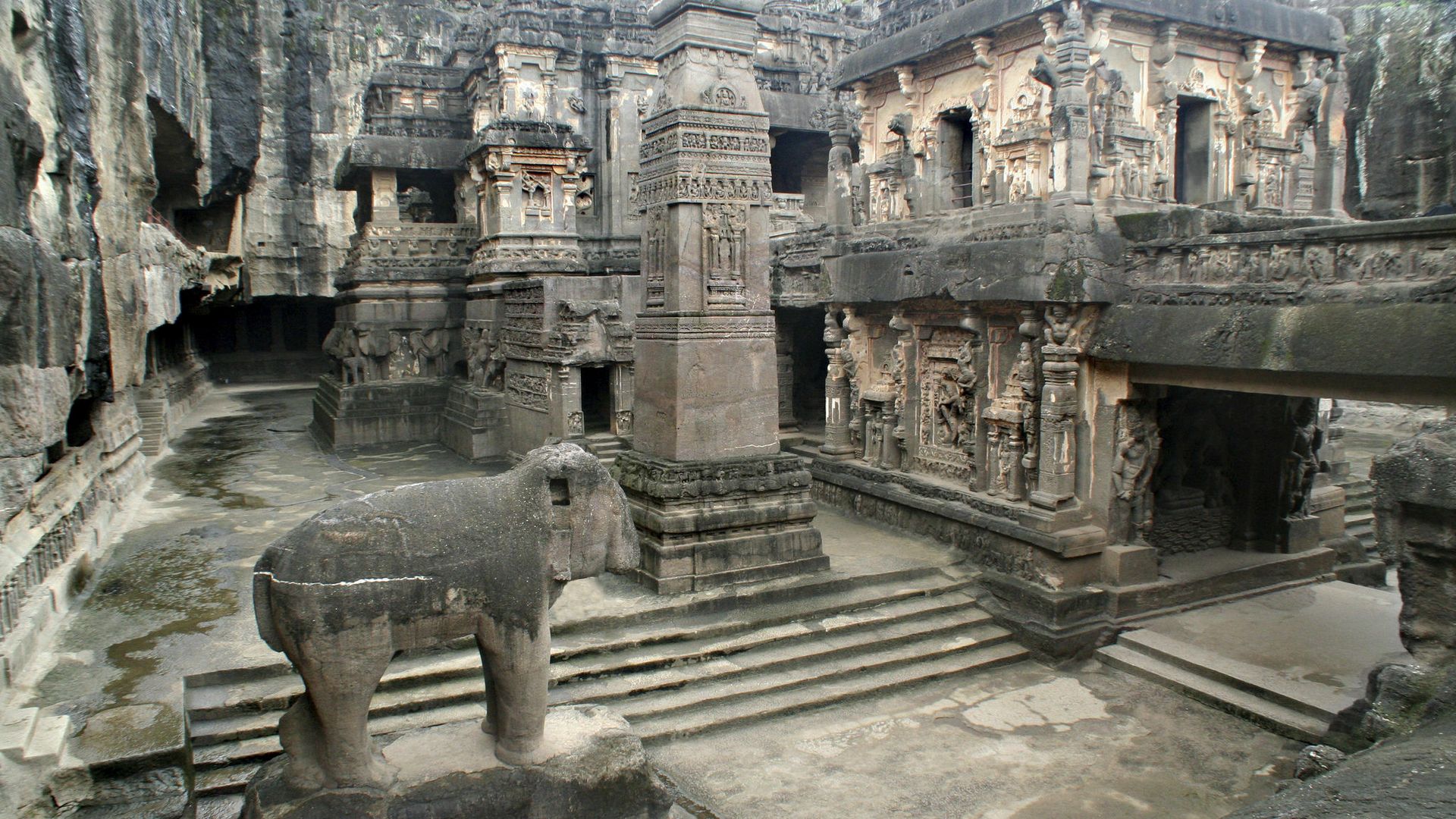
UNESCO Sites In India
About UNESCO Sites in India
India boasts a rich tapestry of cultural, historical, and architectural wonders, many of which have earned the prestigious UNESCO World Heritage Site designation. These UNESCO sites in India offer a glimpse into the country’s diverse heritage, showcasing its ancient civilizations, religious traditions, and architectural marvels.
Among the most iconic best UNESCO sites in India are its temples, renowned for their intricate designs and spiritual significance. The Khajuraho Group of Monuments, a cluster of stunning temples in Madhya Pradesh, features intricately carved sculptures depicting various aspects of life. Another notable site is the Sun Temple in Konark, Odisha, celebrated for its impressive chariot-shaped structure dedicated to the sun god.
India’s historical places are well-represented on the UNESCO list. The Taj Mahal in Agra, a symbol of eternal love, stands as a testament to Mughal architecture. The ancient city of Hampi in Karnataka, once the capital of the Vijayanagara Empire, showcases a mesmerizing blend of history and artistry with its ruins and temples.
Heritage tours in India often include a visit to the Qutub Minar in Delhi, an impressive example of Indo-Islamic architecture, and the Jaipur City, known for its vibrant pink buildings and cultural sites like the Hawa Mahal and City Palace.
The UNESCO sites in India contribute not only to the country’s tourism but also to global appreciation for its cultural diversity. These sites serve as windows to India’s past, allowing visitors to connect with the country’s history, spirituality, and artistic achievements. As travelers embark on heritage tours in India, they are treated to an immersive experience that unfolds the layers of a civilization that has thrived for centuries, leaving an indelible mark on the world’s cultural landscape.
Highlights
- Taj Mahal: Iconic marble mausoleum, symbol of eternal love.
- Jaipur City: Pink-hued architecture, vibrant markets, royal heritage.
- Khajuraho Temples: Intricate erotic sculptures, UNESCO's architectural marvel.
- Qutub Minar: Delhi's towering minaret, Indo-Islamic masterpiece, ancient history.
- Hampi Ruins: Vijayanagara Empire remnants, boulders, ancient temples, surreal landscape.
- Red Fort: Mughal fortress, Delhi's historic heart, grand architectural splendor.
- Elephanta Caves: Mumbai's ancient rock-cut caves, Hindu and Buddhist sculptures.
- Sundarbans: Mangrove forest, Bengal's biodiversity haven, Royal Bengal tigers.
- Rani ki Vav: Stepwell in Gujarat, UNESCO underground marvel, intricate sculptures.
- Ajanta and Ellora Caves: Ancient rock-cut caves, Buddhist, Hindu, Jain art.
Top 30 UNESCO Sites In India
1. Ajanta Caves, Maharashtra
The Ajanta Caves, a UNESCO World Heritage Site in Maharashtra, India, showcase exquisite Buddhist cave art dating back to the 2nd century BCE. Carved into a horseshoe-shaped rock, these 30 caves are renowned for their stunning murals and sculptures depicting the life of Buddha. The caves served as monastic retreats for Buddhist monks, combining religious and artistic expression.
Nearby, the Ellora Caves, also a UNESCO site, feature a mix of Buddhist, Hindu, and Jain temples, showcasing India’s rich religious diversity. The region is further enriched by the medieval Daulatabad Fort and the bustling city of Aurangabad, making it a cultural and historical hub.



Best Time To Visit Ajanta Caves
The best time to visit Ajanta Caves is during the winter months, from November to February, when the weather is cool and pleasant. This season ensures comfortable exploration of the intricately carved rock-cut structures without the intense heat of summer.
The post-monsoon period, from September to November, offers lush surroundings and revitalized landscapes. Monsoons, from June to September, bring a burst of greenery but may limit site access due to rain. It’s advisable to avoid the scorching summer months, from March to June, to fully enjoy the historical and artistic marvels of Ajanta in a more favorable and enjoyable climate.
How To Reach Ajanta Caves
Air
Aurangabad Airport, 30 km from Ajanta, connects to major Indian cities. Regular flights facilitate convenient air travel.
Train
Aurangabad Railway Station, 30 km away, is the nearest railhead. Trains from various cities provide access to this historical marvel.
Road
Ajanta Caves are well-connected by road. Aurangabad, approximately 100 km away, is the nearest major city with frequent buses and taxis. The journey offers scenic views of the Deccan landscape.
Nearby Places To Visit
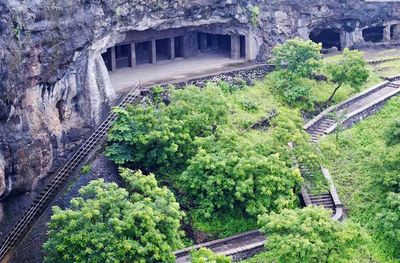
Aurangabad Caves
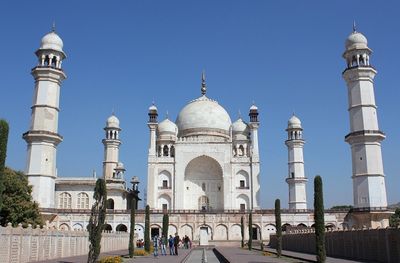
Bibi Ka Maqbara
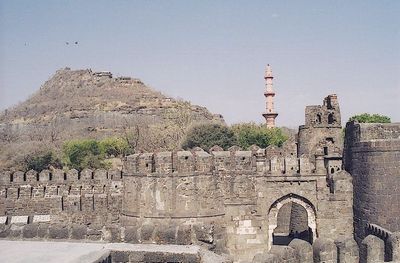
Daulatabad Fort
...and more
2. Ellora Caves, Maharashtra
Ellora Caves, a UNESCO World Heritage Site in Maharashtra, India, showcase a remarkable blend of Hindu, Jain, and Buddhist rock-cut temples and monasteries. Carved between the 6th and 10th centuries, these 34 caves boast intricate sculptures and architectural marvels. The Kailasa Temple, an engineering marvel, stands out with its monolithic structure. Adjacent to Ellora, the historic city of Aurangabad beckons with its Mughal-era charm, housing the iconic Bibi Ka Maqbara, a mausoleum resembling the Taj Mahal. The Daulatabad Fort, once the capital of the Tughlaq dynasty, offers panoramic views. Ellora Caves and its nearby attractions immerse visitors in a rich tapestry of India’s cultural and historical heritage.
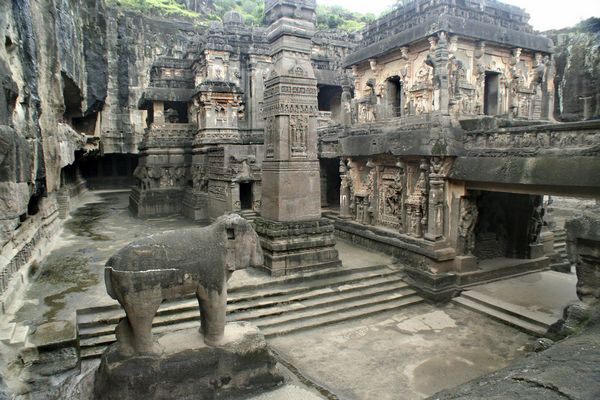
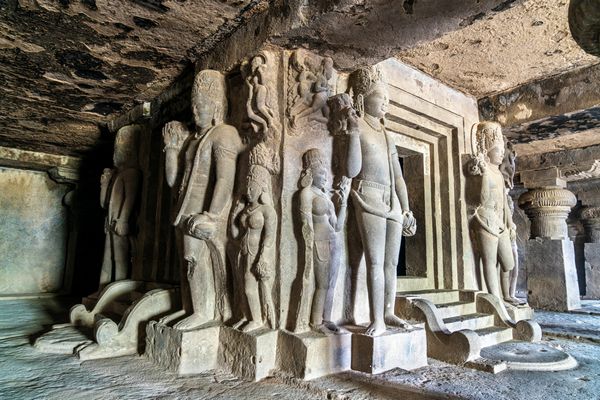
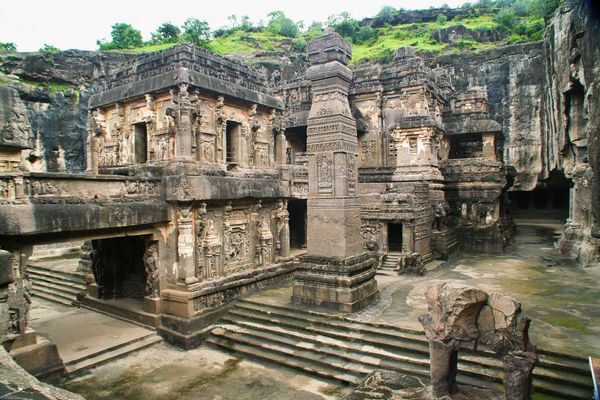
Best Time To Visit Ellora Caves
The best time to visit Ellora Caves is from October to March when the weather is pleasant, ranging from 15 to 30 degrees Celsius. During these months, explore the intricate rock-cut architecture and sculptures comfortably, avoiding the summer heat. Monsoons, from June to September, bring lush greenery but may hinder outdoor activities. Winter, from November to February, offers cool temperatures, enhancing the overall experience. Plan your visit during these months to enjoy the UNESCO World Heritage site’s ancient charm amidst favorable weather conditions, ensuring a delightful exploration of the historical and cultural marvels at Ellora Caves.
How To Reach Ellora Caves
Air
Fly to Aurangabad Airport, just 15 km from Ellora Caves, for a quick and convenient journey with regular flights from major cities.
Train
Board a train to Aurangabad Railway Station, around 30 minutes from Ellora Caves. Trains connect Aurangabad to major cities, providing a comfortable travel option.
Road
Reach Ellora Caves via Aurangabad, well-connected by national highways. The journey offers scenic views and takes approximately 30 minutes.
Nearby Places To Visit

Aurangabad Caves

Daulatabad Fort

Bibi Ka Maqbara
...and more
3. Agra Fort
Agra Fort, a UNESCO World Heritage Site, stands as a testament to India’s rich history. Commissioned by Emperor Akbar in 1565, this formidable fortress served as the main residence of the Mughal emperors until 1638. Its red sandstone walls, interspersed with majestic gates and palaces, narrate tales of Mughal grandeur and power. Over time, successive rulers, including Shah Jahan, added embellishments like the iconic Diwan-i-Khas and the Musamman Burj. Agra Fort’s strategic location on the Yamuna River offers breathtaking views of the Taj Mahal, a neighboring masterpiece. Together, these landmarks encapsulate the opulence and architectural brilliance of Mughal India.
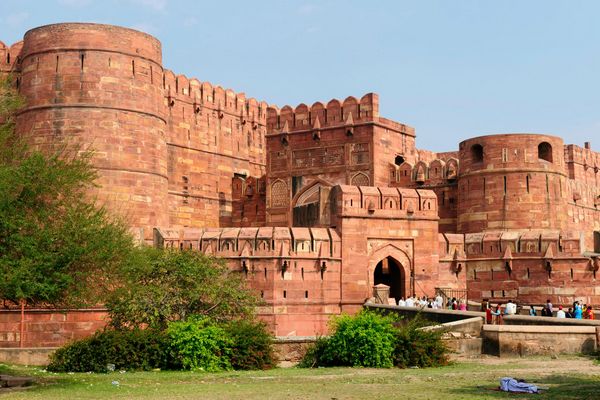
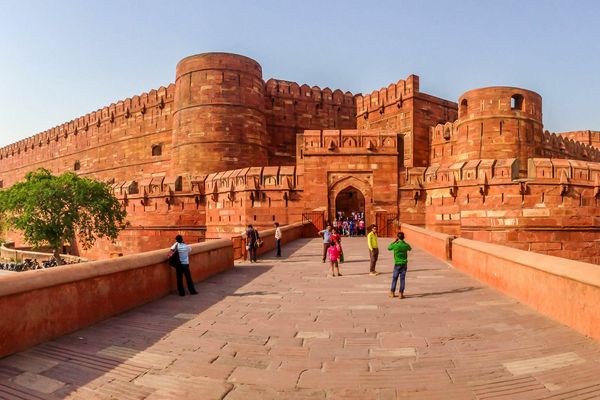
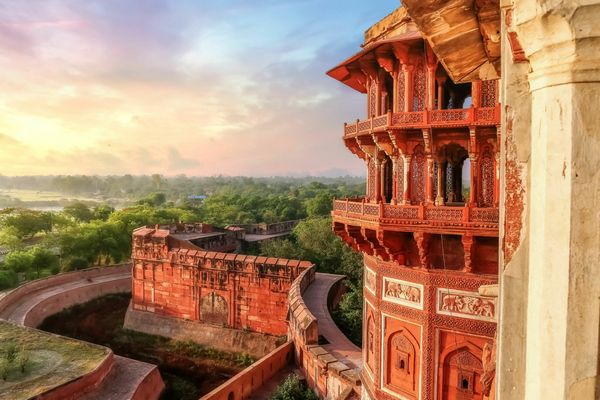
Best Time To Visit Agra Fort
The best time to visit Agra Fort is during the winter months, from October to March, when the weather is pleasantly cool and comfortable. Avoiding the scorching summer temperatures, this period allows you to explore the UNESCO World Heritage site without the discomfort of extreme heat. The winter months provide an ideal atmosphere for sightseeing, ensuring a more enjoyable experience as you wander through the historical marvels of Agra Fort. Additionally, the clear skies during this time offer stunning views of the iconic Taj Mahal from various vantage points within the fort, enhancing your overall visit to this architectural gem.
How To Reach Khajuraho Temple
Air
Fly from Indira Gandhi International Airport (DEL) to Agra Airport (AGR). From Agra Airport, reach the fort via a 15-minute taxi drive.
Train
Board a train from New Delhi Railway Station to Agra Cantonment. The journey takes around 2 hours. Agra Fort is a short taxi ride from the station.
Road
Take NH19 from Delhi to Agra, approximately a 3.5-hour drive. Follow road signs to Agra Fort.
Nearby Places To Visit
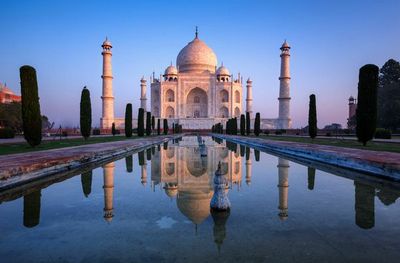
Taj Mahal
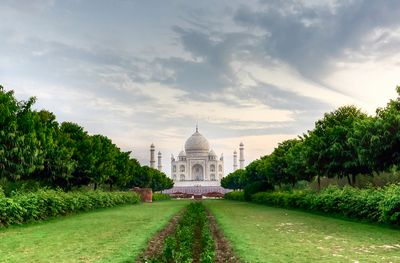
Mehtab Bagh
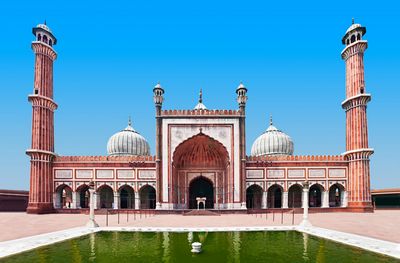
Jama Masjid
...and more
4. Taj Mahal
The Taj Mahal, an iconic symbol of love, was built by Mughal Emperor Shah Jahan in memory of his wife Mumtaz Mahal, and completed in 1653. This architectural marvel in Agra, India, is renowned for its stunning white marble façade, intricate carvings, and symmetrical gardens. The nearby Agra Fort, a UNESCO World Heritage site, served as the main residence of the Mughal emperors. Another nearby attraction is Fatehpur Sikri, a historic city founded by Emperor Akbar, displaying impressive Mughal architecture. The Yamuna River flowing beside the Taj Mahal adds to the scenic beauty, creating a mesmerizing ensemble of historical and cultural significance.
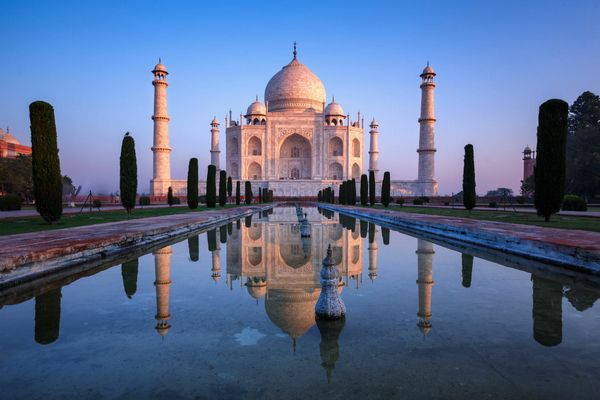
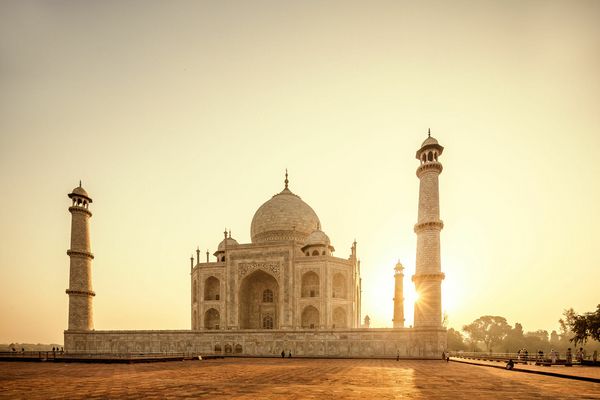
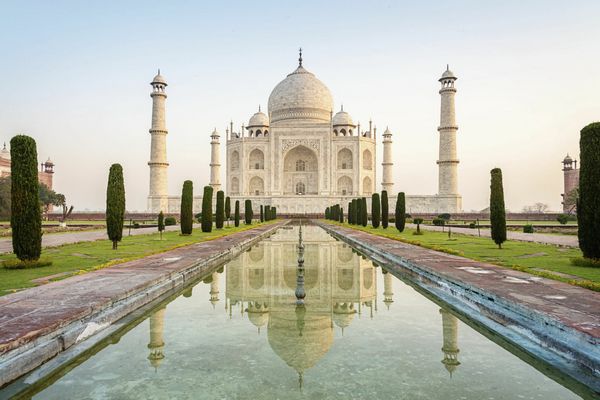
Best Time To Visit Taj Mahal
The best time to visit the Taj Mahal is during the winter months, from October to March. The weather is pleasant, with cooler temperatures and clear skies, enhancing the beauty of the iconic monument. Avoid the scorching summer heat and the heavy monsoon rains. Winter provides an ideal atmosphere for a comfortable and enjoyable experience, allowing you to explore the mesmerizing architecture and intricate details of the Taj Mahal without the extremes of weather. Early morning or late afternoon visits also offer a magical view as the changing light adds a golden glow to the marble masterpiece, creating a truly unforgettable experience.
How To Reach Taj Mahal
Air
Reach Agra via the Yamuna Expressway from Delhi (approx. 3-4 hours). Follow signs to the Taj Mahal.
Train
Board a train from Delhi to Agra (approx. 2-3 hours). Alight at Agra Cantt station, hire a taxi or use local transport to reach the Taj Mahal.
Road
Reach Agra via the Yamuna Expressway from Delhi (approx. 3-4 hours). Follow signs to the Taj Mahal.
Nearby Places To Visit
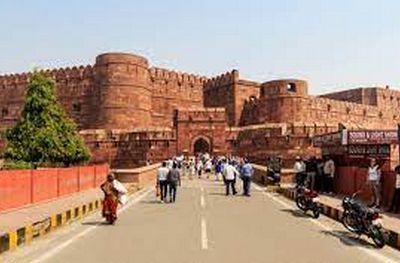
Agra Fort (Lal Qila)
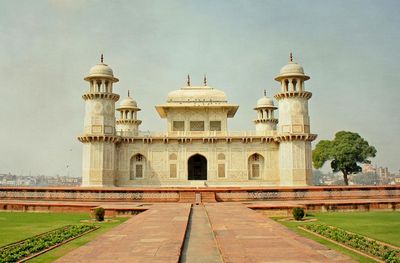
Tomb of Itimad-ud-Daulah (Baby Taj)

Mehtab Bagh
...and more
5. Sun Temple
The Sun Temple, a UNESCO World Heritage Site in Konark, Odisha, India, stands as a marvel of ancient architecture and Hindu craftsmanship. Built in the 13th century by King Narasimhadeva I of the Eastern Ganga Dynasty, the temple is dedicated to the sun god, Surya. Known for its intricate carvings depicting life, mythology, and celestial events, the temple exemplifies the grandeur of Kalinga architecture. Surrounding the Sun Temple, visitors can explore the Chandrabhaga Beach, known for its serene shores and annual Magha Saptami fair. The Konark Dance Festival, held in December, attracts art enthusiasts to witness classical performances against the backdrop of this historical masterpiece.
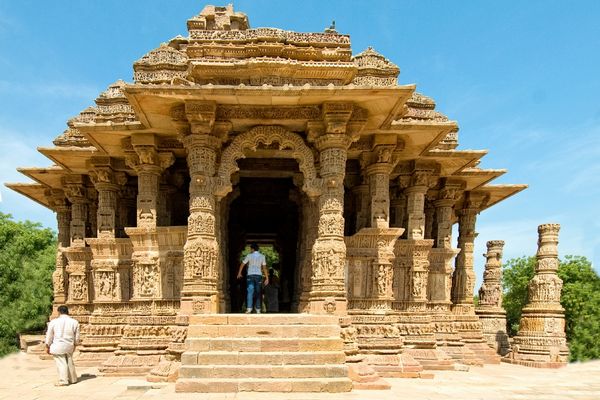
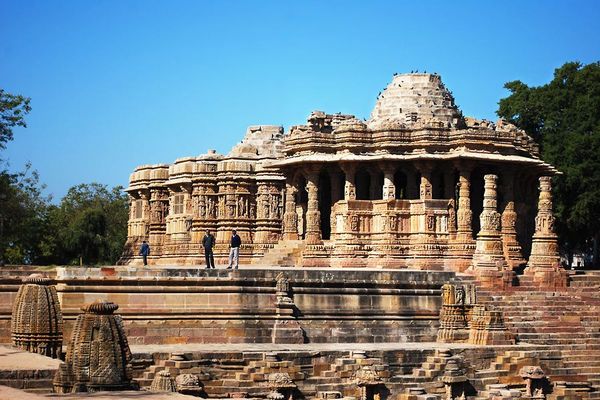
Best Time To Visit Sun Temple
The Sun Temple, Konark, shines brightest during the winter months from October to March, offering the optimal time to visit. The weather is pleasant, with temperatures ranging from 15 to 25 degrees Celsius, allowing for comfortable exploration of the architectural marvel. Winter ensures clear skies and ample sunlight, enhancing the temple’s intricate carvings and sculptures. Avoiding the scorching summer and monsoon seasons, this period promises a delightful experience, providing a perfect backdrop for appreciating the Sun Temple’s grandeur. Embrace this window for a captivating journey through history and art at one of India’s most iconic cultural landmarks.
How To Reach Sun Temple
Air
The nearest airport is Biju Patnaik International Airport in Bhubaneswar, about 64 km away. From there, take a taxi or bus to Konark.
Train
Take a train to Puri railway station, approximately 35 km away. Taxis and buses from the station can be used for the remaining journey.
Road
Reach Konark via National Highway 16 from Bhubaneswar or Puri. The temple is well-connected by roads, and taxis or buses are available.
Nearby Places To Visit
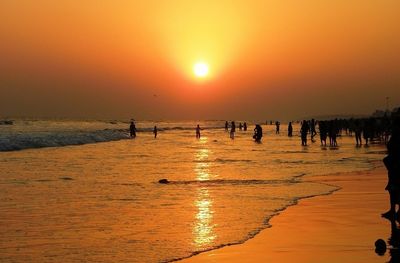
Konark Beach

Chandrabhaga Sea Beach
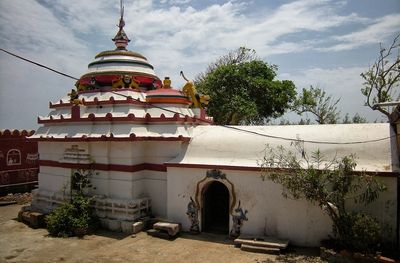
Ramachandi Temple
...and more
6. Mahabalipuram Monuments
Mahabalipuram, a UNESCO World Heritage site in Tamil Nadu, India, boasts a rich history and a cluster of remarkable monuments. Dating back to the 7th and 8th centuries, these Pallava dynasty creations showcase exquisite Dravidian architecture. The iconic Shore Temple, dedicated to Lord Shiva, stands as a testament to the region’s cultural and artistic prowess. The intricately carved rock-cut monuments, like the famous Arjuna’s Penance and the Five Rathas, narrate Hindu mythology through their detailed sculptures. Beyond these historical gems, Mahabalipuram offers scenic delights with its picturesque beaches and the mysterious Tiger Cave, adding natural allure to the cultural tapestry of this ancient coastal town.
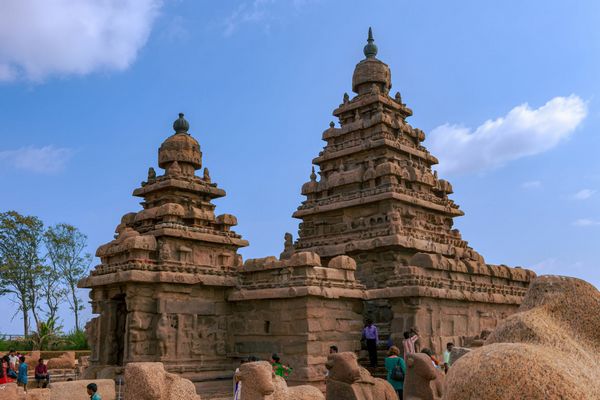
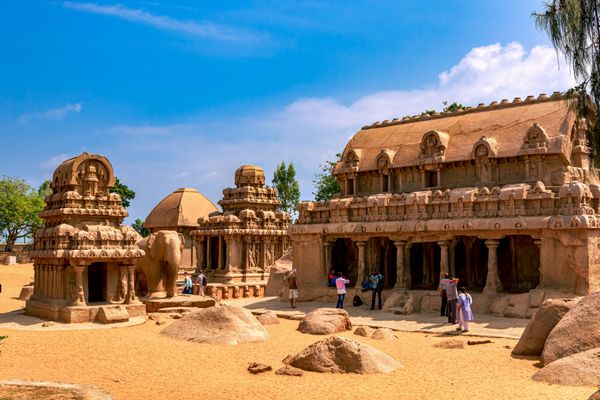
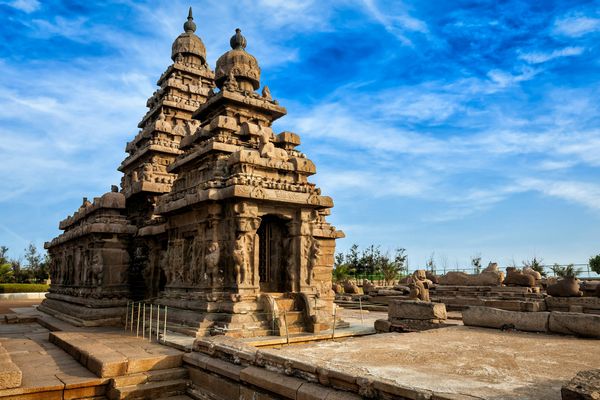
Best Time To Visit Mahabalipuram Monuments
The best time to visit the historic monuments of Mahabalipuram is during the winter months from November to February. With pleasant temperatures ranging from 19 to 25 degrees Celsius, this period ensures comfortable exploration of the UNESCO World Heritage site. The cool weather enhances the experience of admiring the intricately carved temples, rock-cut sculptures, and ancient architectural marvels along the scenic coastline. Monsoons (June-September) bring lush greenery but may limit outdoor activities. Summers (March-May) can be hot. Optimal weather during winter provides an ideal backdrop for delving into the rich cultural heritage of Mahabalipuram’s renowned landmarks.
How To Reach Mahabalipuram Monuments
Air
The nearest airport is Chennai International Airport (58 km). From there, hire a taxi or use public transportation for a 1.5-2 hour journey to Mahabalipuram.
Train
The nearest railway station is Chengalpattu (29 km). From there, take a taxi or bus to Mahabalipuram, which takes about 45 minutes.
Road
Mahabalipuram is well-connected by road. You can reach via Chennai (58 km) using NH32 or hire a taxi from nearby cities. The journey offers scenic views and takes around 1.5-2 hours.
Nearby Places To Visit
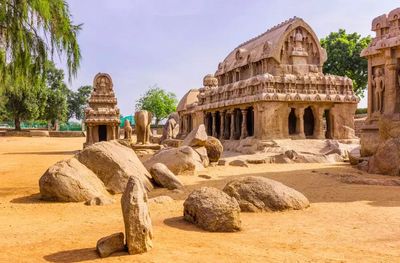
Five Rathas (Pancha Rathas)
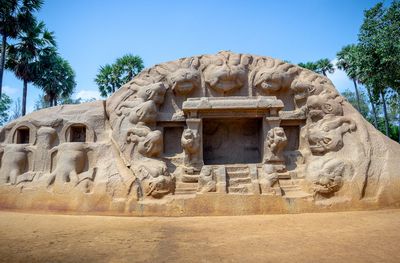
Tiger Cave
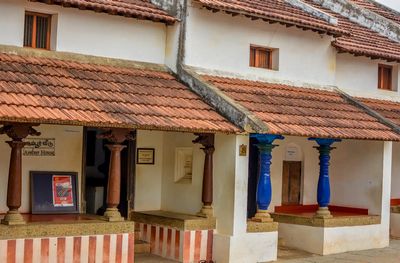
DakshinaChitra
...and more
7. Kaziranga National Park
Kaziranga National Park, located in the Indian state of Assam, boasts a rich history and remarkable biodiversity. Established in 1905 as a reserve to protect the endangered one-horned rhinoceros, it has since expanded to become a UNESCO World Heritage Site. The park’s success in conserving wildlife, including tigers, elephants, and various bird species, underscores its significance. Apart from its natural wonders, visitors can explore nearby attractions such as the ancient Agnigarh Hill, steeped in mythology, and the tea gardens of Assam, providing insight into the region’s cultural and economic tapestry. Kaziranga remains a haven for wildlife enthusiasts and nature lovers alike.
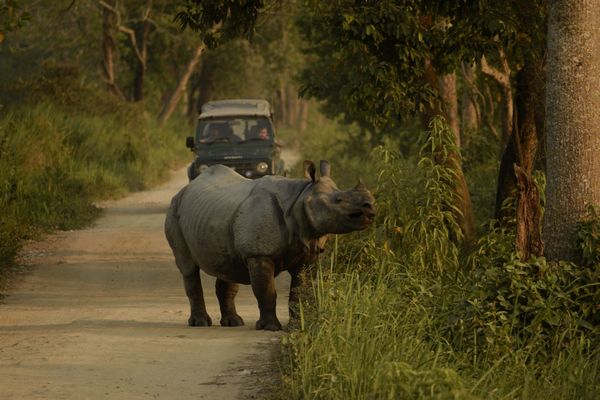
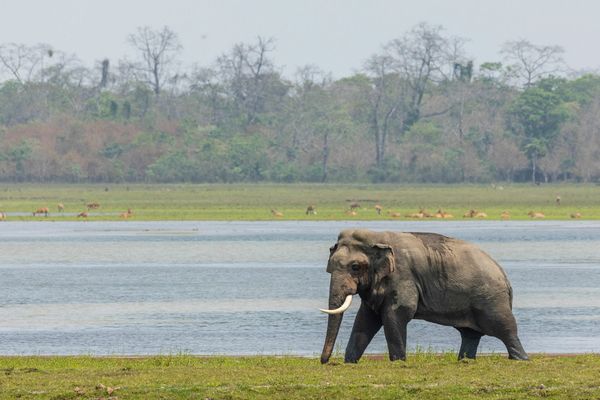
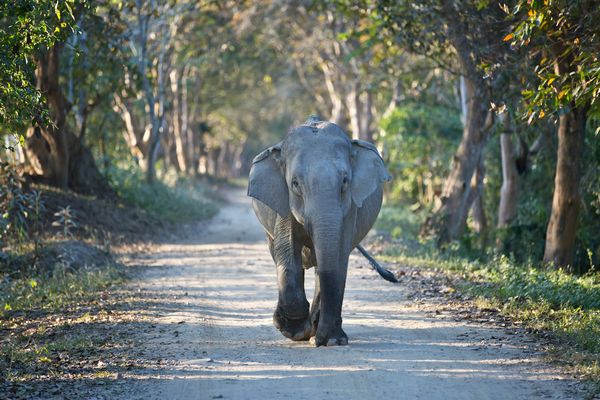
Best Time To Visit Kaziranga National Park
The best time to visit Kaziranga National Park is from November to April. During this period, the weather is pleasant, and the park is open for wildlife safaris. The post-monsoon months of November to February offer optimal wildlife viewing opportunities, with a higher chance of spotting the iconic one-horned rhinoceros. The grass is shorter, making it easier to observe diverse fauna. However, March and April provide a unique experience with lush landscapes and bird watching. Monsoons, from May to October, should be avoided due to heavy rainfall and park closure, impacting accessibility and wildlife visibility.
How To Reach Kaziranga National Park
Air
Fly to Guwahati Airport, then drive 217 km via NH37 to Kaziranga National Park.
Train
Nearest railway station is Furkating (75 km). Major stations like Guwahati and Jorhat also connect.
Road
Reach Kaziranga National Park via NH37 from Guwahati (217 km) or Jorhat (97 km) by car or bus.
Nearby Places To Visit
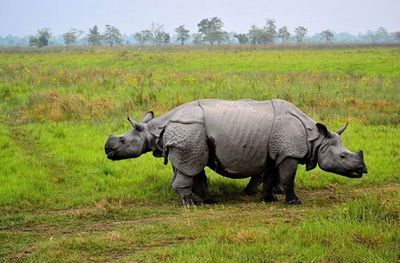
Manas National Park
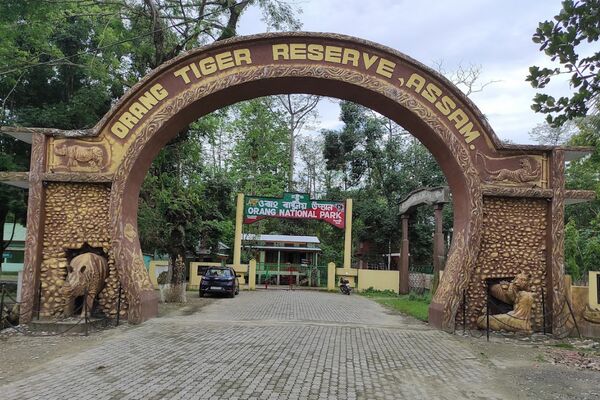
Orang National Park
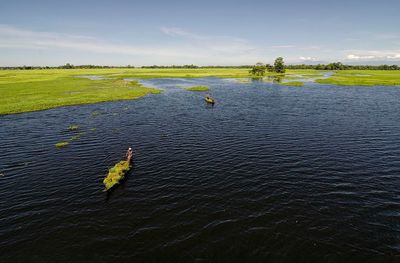
Majuli Island
...and more
8. Keoladeo National Park
Keoladeo National Park, formerly known as Bharatpur Bird Sanctuary, is a UNESCO World Heritage Site located in Bharatpur, Rajasthan, India. Established in 1982, the park spans over 29 square kilometers and is renowned for its diverse avian population, attracting migratory birds from as far as Siberia and Central Asia. Named after the Keoladeo Temple within its boundaries, the park’s history dates back to the 18th century when it was created by the Maharaja of Bharatpur. Apart from its ornithological significance, the park also boasts a rich historical background, serving as a hunting ground for the royalty. Nearby attractions include the Lohagarh Fort and Deeg Palace, offering visitors a glimpse into Rajasthan’s royal past.
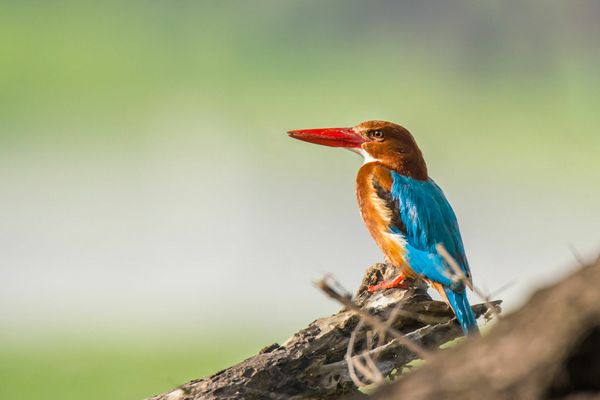
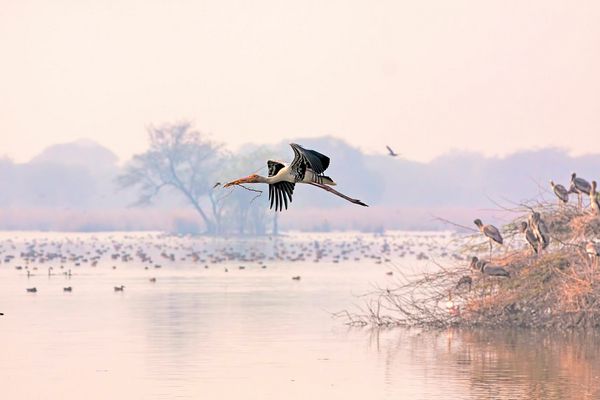
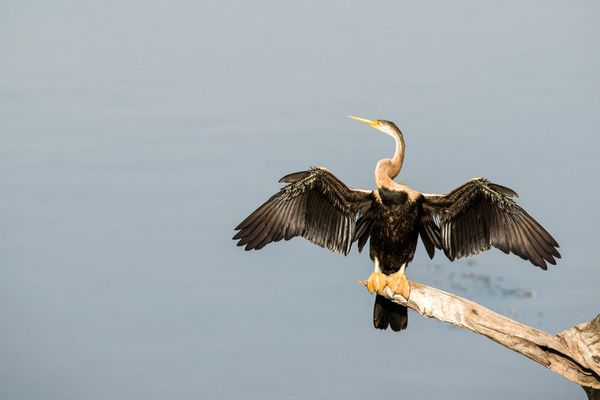
Best Time To Visit Keoladeo National Park
The best time to visit Keoladeo National Park, also known as Bharatpur Bird Sanctuary, is during the winter months, from October to February. This period witnesses a plethora of migratory birds, including Siberian cranes. The weather is pleasant, with temperatures ranging from 7 to 20 degrees Celsius, making it ideal for birdwatching and exploring the park’s diverse flora and fauna. Avoid the scorching summer months, as temperatures soar. The monsoon season, from July to September, brings heavy rainfall, affecting the park’s accessibility. Winter offers a captivating avian spectacle, providing an optimal experience for nature enthusiasts and bird lovers.
How To Reach Keoladeo National Park
Air
The closest airport is Agra’s Kheria Airport, approximately 56 km away. Alternatively, Indira Gandhi International Airport in Delhi is about 180 km from the park. Both airports offer domestic and international flights.
Train
The nearest railway station is Bharatpur Junction, well-connected to major cities. From there, it’s a short drive to the park.
Road
Keoladeo National Park is easily accessible by road from major cities like Delhi, Jaipur, and Agra. National Highway 21 connects the park to these cities.
Nearby Places To Visit
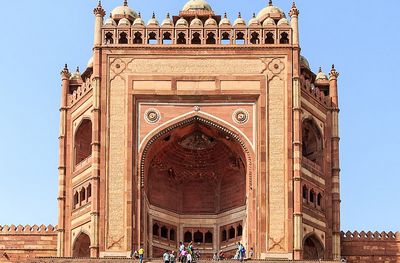
Fatehpur Sikri
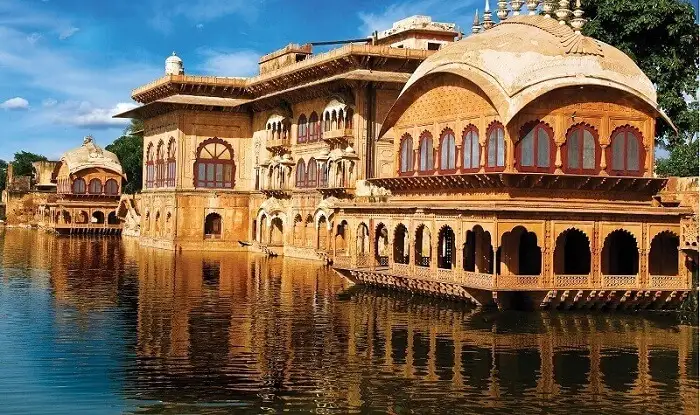
Deeg Palace
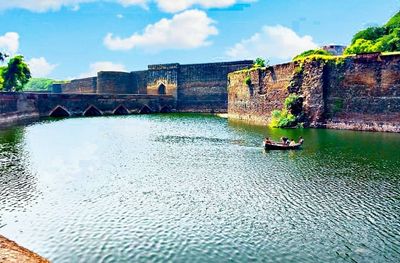
Lohagarh Fort
...and more
9. Manas Wildlife Sanctuary
Manas Wildlife Sanctuary, located in the northeastern Indian state of Assam, has a rich history dating back to its declaration as a wildlife sanctuary in 1928. Initially, it was primarily established to protect the Bengal tiger and the Indian rhinoceros. Over time, its significance expanded, leading to its designation as a UNESCO World Heritage Site in 1985. Manas is renowned for its diverse ecosystem, encompassing grasslands, forests, and riverine habitats. Besides its wildlife, the sanctuary is surrounded by captivating attractions like the ancient Kamakhya Temple, known for its mystical aura, and the charming village of Barpeta with its historical Barpeta Satra, a Vaishnavite monastery.
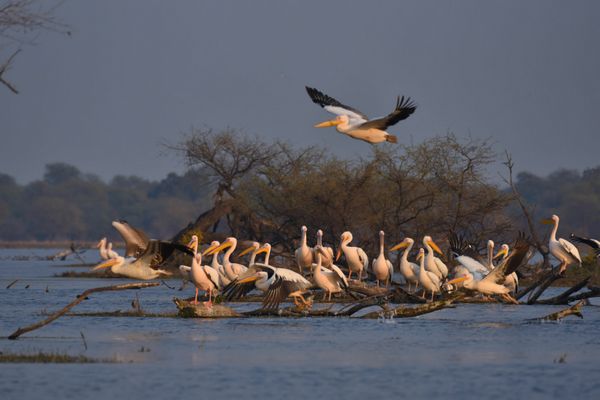

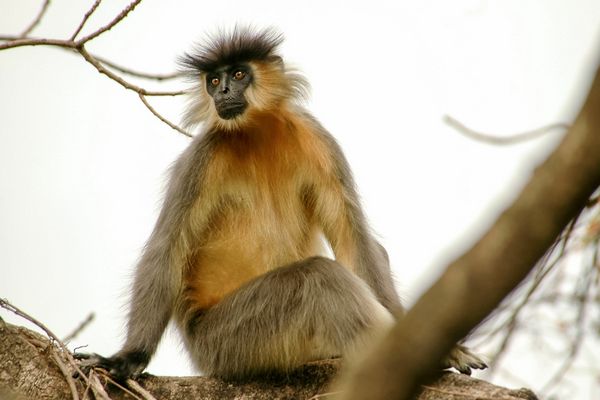
Best Time To Visit Manas Wildlife Sanctuary
The best time to visit Manas Wildlife Sanctuary is during the winter months from November to April. This period offers a pleasant climate, with temperatures ranging from 5 to 25 degrees Celsius. The dry season ensures better visibility for wildlife sightings, as the foliage is less dense. November to February is particularly ideal, as the park is lush from recent rains, and migratory birds flock to the region. This time provides optimal conditions for exploring the diverse flora and fauna, including the endangered Bengal tiger and pygmy hog. Avoid the monsoon season (June to September) due to heavy rainfall and flooding.
How To Reach Manas Wildlife Sanctuary
Air
Lokpriya Gopinath Bordoloi International Airport in Guwahati is the nearest airport, about 176 km away. Direct flights from major cities provide convenient air travel options.
Train
The nearest railway station is Barpeta Road Railway Station, approximately 20 km away. Regular trains connect Barpeta Road to major cities.
Road
Manas Wildlife Sanctuary is accessible by road via National Highway 31. Guwahati, Assam, is the nearest major city with well-connected roads.
Nearby Places To Visit
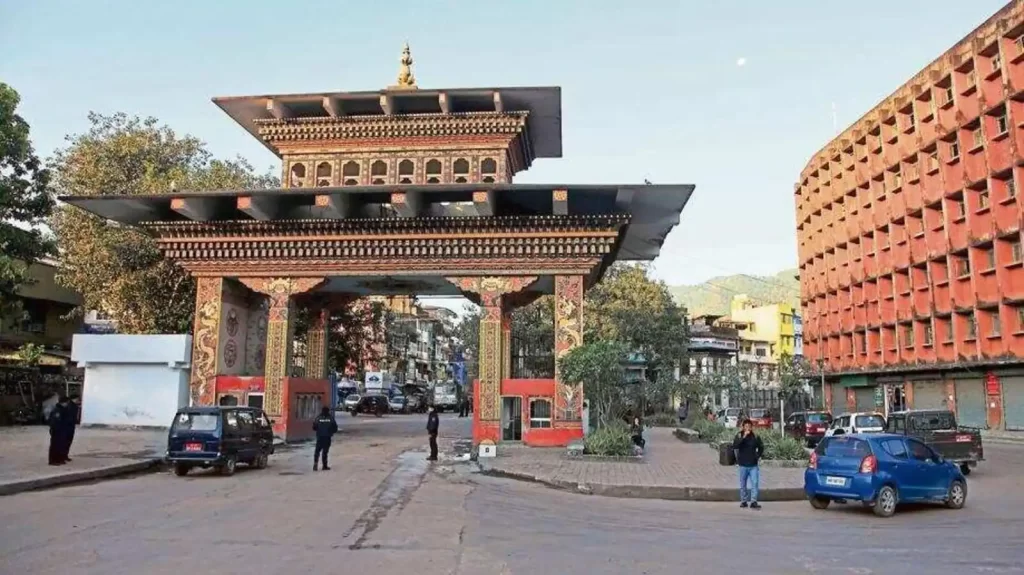
Bhutan Border
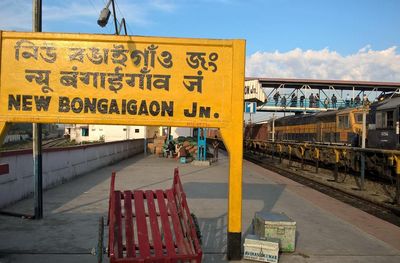
Bongaigaon
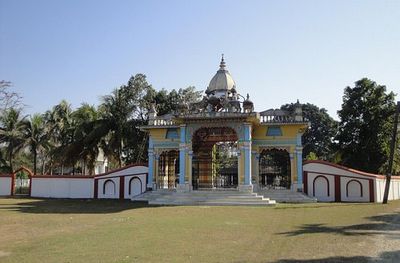
Barpeta
...and more
10. Churches and Convents of Goa
The Churches and Convents of Goa bear witness to the rich history of this Indian state. Dating back to the 16th century, these architectural marvels reflect the Portuguese influence during their colonial rule. Among the notable structures is the Basilica of Bom Jesus, a UNESCO World Heritage Site housing the mortal remains of St. Francis Xavier. The Se Cathedral, dedicated to St. Catherine, is another iconic landmark, boasting impressive architecture. Nearby attractions include the Church of St. Cajetan, inspired by St. Peter’s Basilica in Rome, and the Convent and Church of St. Monica. Together, they form a captivating tapestry of Goa’s cultural and religious heritage.
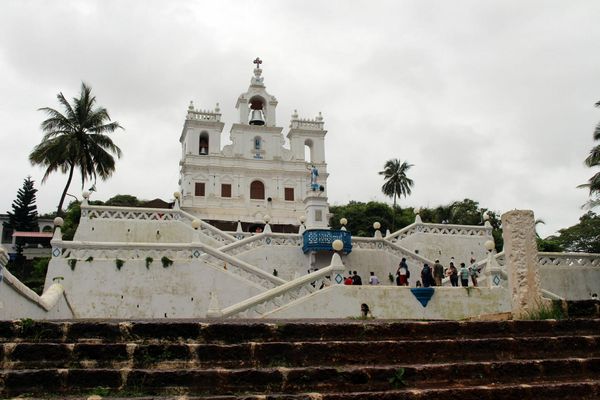
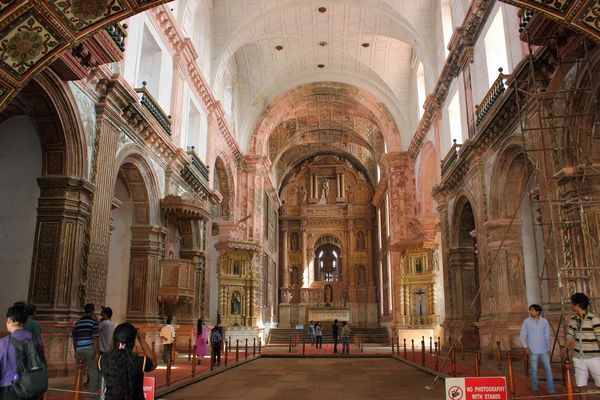
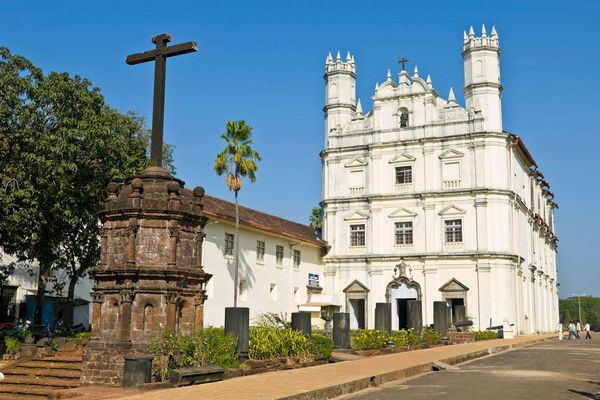
Best Time To Visit Churches and Convents of Goa
The Churches and Convents of Goa, a UNESCO World Heritage site, are best visited from October to March. During these months, Goa experiences a mild and pleasant climate, with temperatures ranging from 20-30°C. This period allows for comfortable exploration of the historic sites, including the Basilica of Bom Jesus and Se Cathedral, without the intense heat of the summer. Attend the vibrant Christmas and New Year celebrations, adding a festive charm to the visit. Avoid the monsoon season (June to September) when heavy rains can disrupt travel plans. Embrace Goa’s cultural and architectural legacy during these temperate months.
How To Reach Churches and Convents of Goa
Air
Fly to Goa’s Dabolim Airport from major cities. It’s well-connected, making air travel a swift and efficient option for visiting the Churches and Convents of Goa.
Train
Opt for Indian Railways to reach Goa. The state has multiple railway stations, including Margao and Vasco da Gama, offering a convenient rail connection.
Road
Explore Goa’s Churches and Convents via well-connected roads. Rent a car or use local buses for a scenic journey. Major highways like NH66 provide access.
Nearby Places To Visit
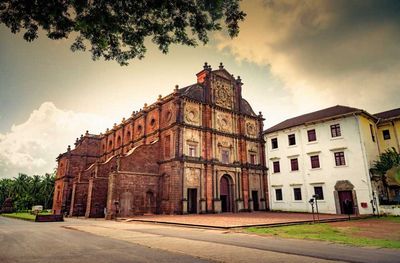
Basilica of Bom Jesus
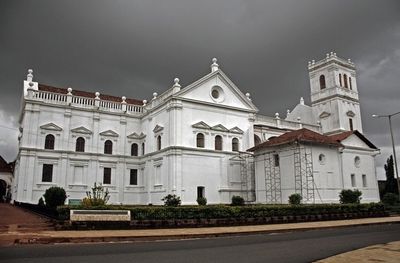
Se Cathedral
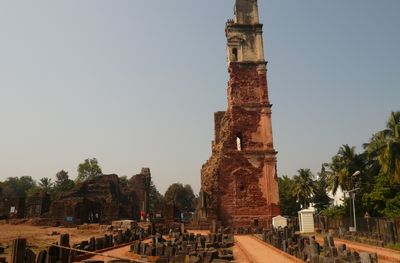
Narlai Village
...and more
11. Monuments of Khajuraho
The Khajuraho Group of Monuments, located in the Indian state of Madhya Pradesh, is a stunning testament to medieval art and architecture. Constructed between the 9th and 11th centuries by the Chandela dynasty, these temples are renowned for their intricately carved sculptures, depicting various aspects of life. The Khajuraho temples were declared UNESCO World Heritage Sites in India in 1986, recognizing their cultural and historical significance. Beyond the monuments, visitors can explore nearby attractions like the Western Ghats, Panna National Park, and the ancient town of Orchha. These sites collectively offer a captivating journey through India’s rich heritage and natural beauty.
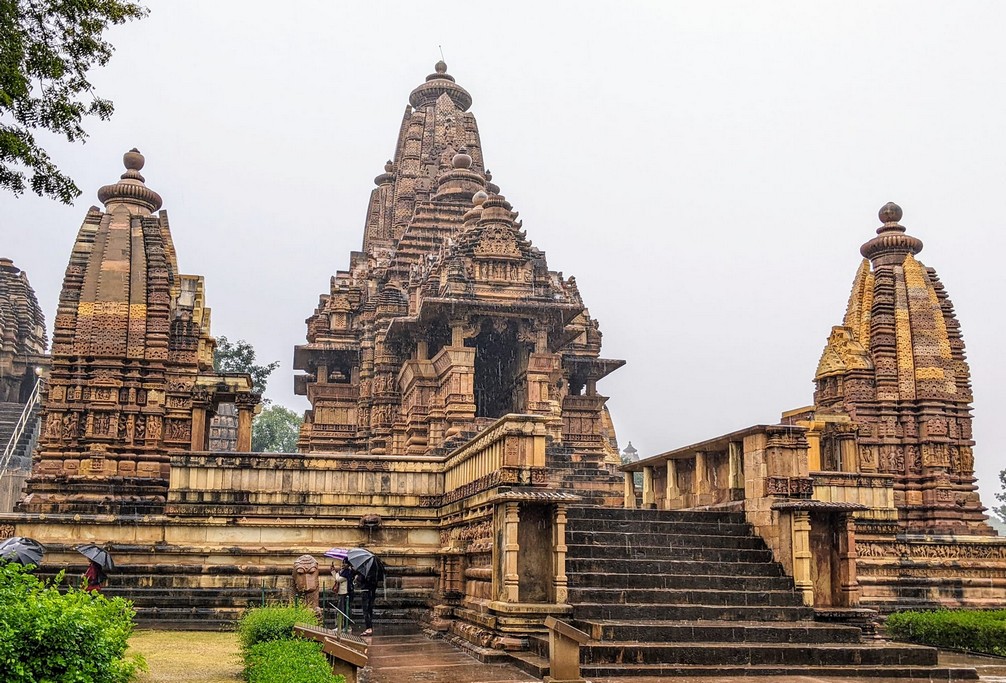
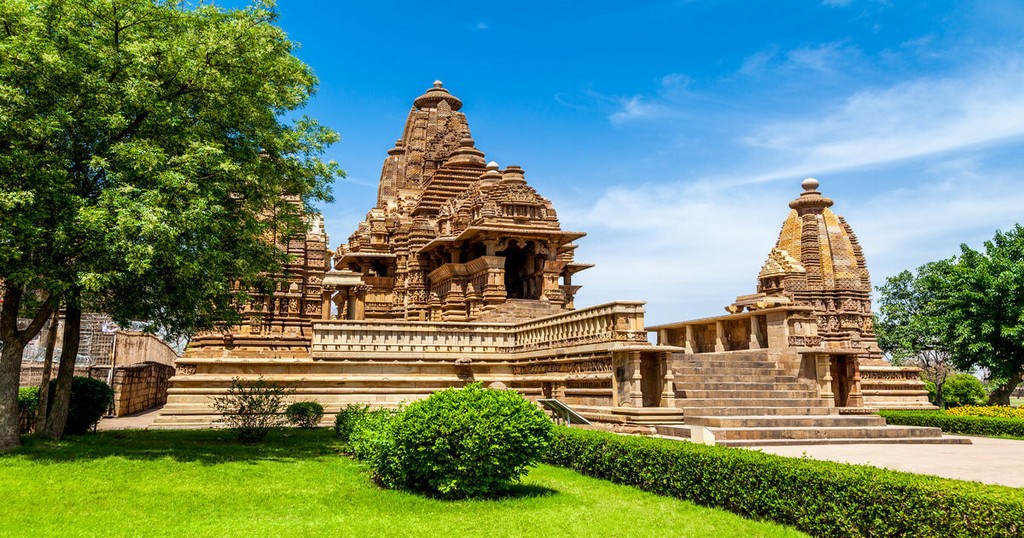
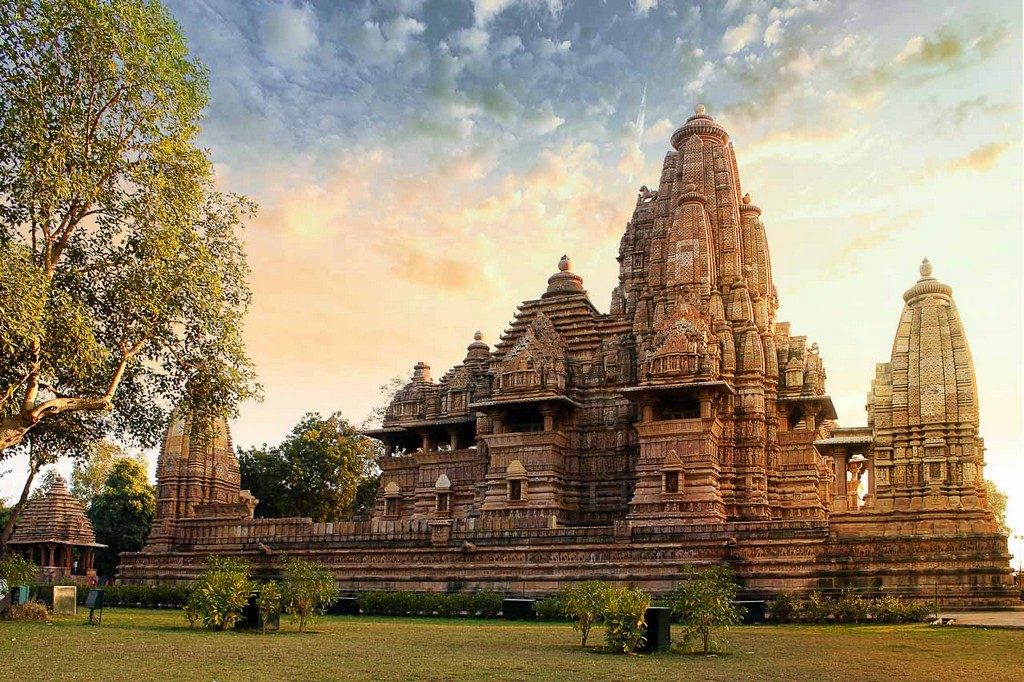
Best Time To Visit Monuments of Khajuraho
The best time to visit the mesmerizing monuments of Khajuraho is during the winter months, from October to March. The weather during this period is pleasant and comfortable, with temperatures ranging from 10 to 27 degrees Celsius. The cool and dry climate allows visitors to explore the intricately carved temples and sculptures without the discomfort of extreme heat. Additionally, the winter months coincide with the Khajuraho Dance Festival held in February, offering a unique cultural experience. Avoiding the scorching summer temperatures and monsoon rains, this period ensures an ideal setting for immersing oneself in the architectural marvels and rich history of Khajuraho.
How To Reach Monuments of Khajuraho
Air
Khajuraho Airport is well-connected to major cities. Regular flights operate, providing a convenient and quick way to reach. Taxis or buses are available from the airport.
Train
Khajuraho has a railway station linked to major cities. Trains offer a scenic journey, and local transportation such as rickshaws or taxis can be used upon arrival.
Road
Well-maintained roads connect Khajuraho to nearby cities. Buses and private cabs ply regularly. A road trip offers picturesque views of the Indian countryside.
Nearby Places To Visit

Panna National Park
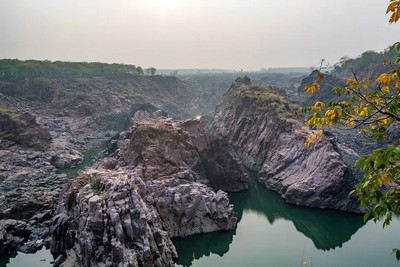
Raneh Falls
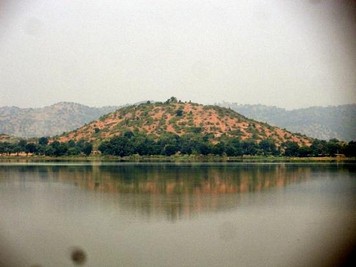
Narlai Village
...and more
12. Monuments of Hampi
Hampi, a UNESCO World Heritage Site in India, boasts a rich history dating back to the 14th century when it served as the capital of the Vijayanagara Empire. The city’s breathtaking monuments, such as the Virupaksha Temple and the Vittala Temple, showcase exquisite Dravidian architecture. The iconic Stone Chariot, part of the Vittala Temple complex, stands as a testament to the empire’s grandeur. The Hampi ruins, spread across a vast landscape, also include the Lotus Mahal, Elephant Stables, and the majestic Hampi Bazaar. Visitors can explore the nearby Tungabhadra River, the Matanga Hill for panoramic views, and the UNESCO site Pattadakal, adding to the cultural tapestry of this historically significant region.
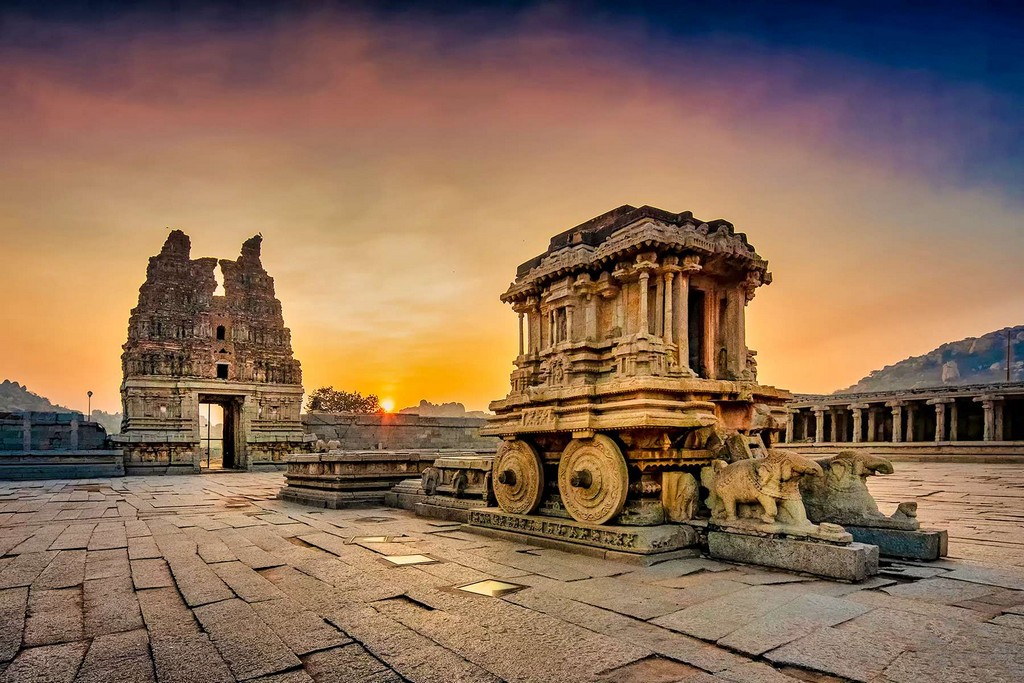
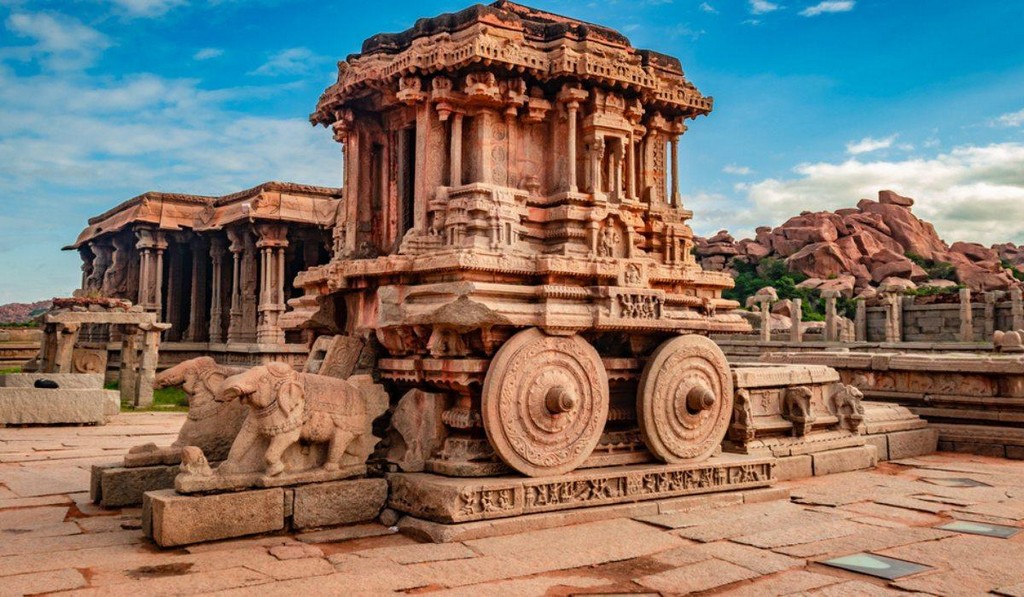
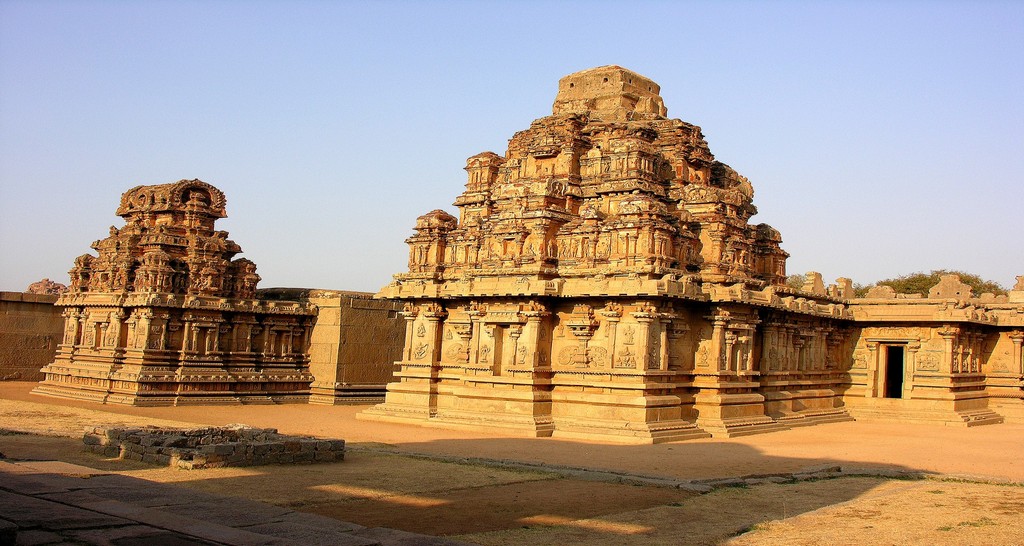
Best Time To Visit Monuments of Hampi
The best time to visit the monuments of Hampi, a UNESCO World Heritage Site in Karnataka, India, is during the winter months of October to March. This period offers pleasant weather with temperatures ranging from 15 to 30 degrees Celsius, making exploration comfortable. The cool and dry climate allows visitors to fully appreciate the intricate architecture and historical significance of the ruins scattered across the mesmerizing landscape. Avoiding the scorching heat of summer and the heavy monsoon rains, this window provides an ideal environment for a fulfilling experience, allowing travelers to delve into the rich history and cultural heritage of this ancient city.
How To Reach Monuments of Hampi
Air
Nearest airport is Vidyanagar Airport (Bellary) with regular flights. From there, hire a taxi or use local transport for a 3-hour drive to Hampi.
Train
Hospet Junction is the nearest railway station. Trains from major cities connect here. A short 13 km taxi or bus ride leads to Hampi.
Road
Hampi is well-connected by road. Regular buses ply from major cities. Private cabs or self-driven vehicles are also convenient options for a road trip.
Nearby Places To Visit
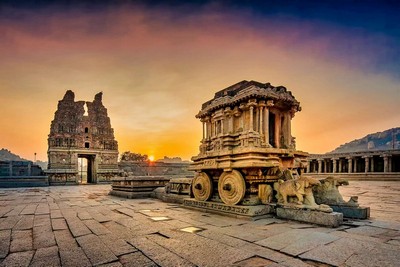
Vittala Temple
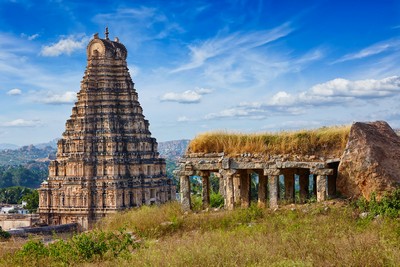
Virupaksha Temple
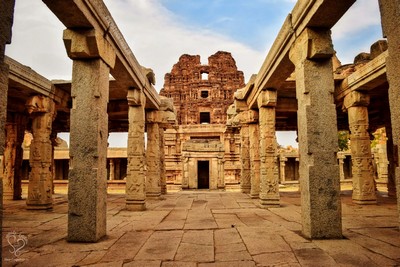
Achyutaraya Temple
...and more
13. Fatehpur Sikri
Fatehpur Sikri, a UNESCO World Heritage Site in India, bears witness to the architectural brilliance of Emperor Akbar’s reign in the late 16th century. Constructed as his capital in 1569, this historic city showcases a harmonious blend of Persian, Timurid, and Indian architectural styles. Despite its short-lived status as the capital, Fatehpur Sikri remains a masterpiece with notable structures like the Buland Darwaza and Jama Masjid. Nearby attractions include the iconic Taj Mahal in Agra, also a UNESCO site, and the abandoned city of Agra Fort, offering a captivating glimpse into the Mughal era. Together, they form a cultural tapestry inviting exploration.
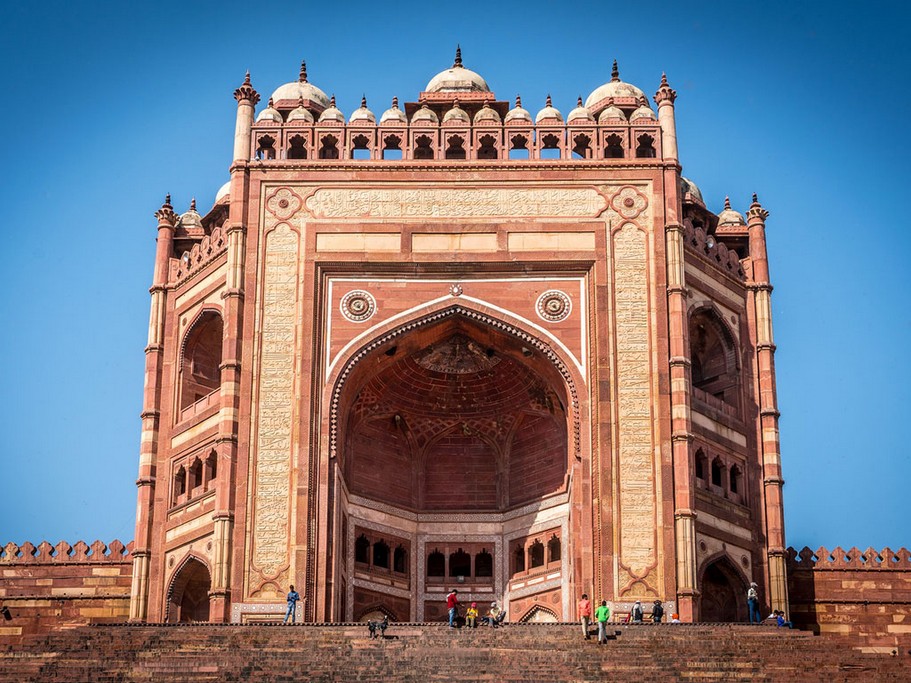
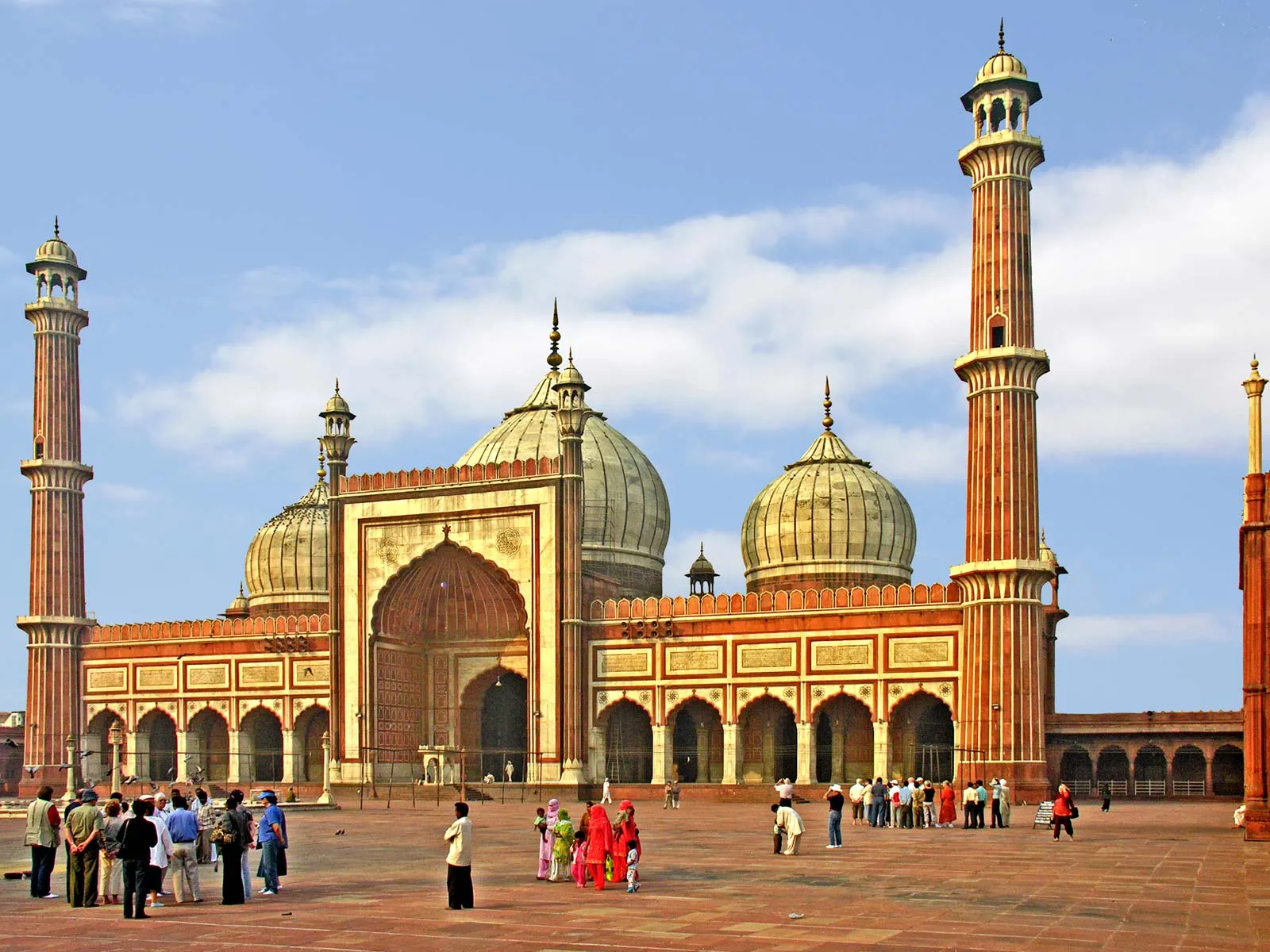
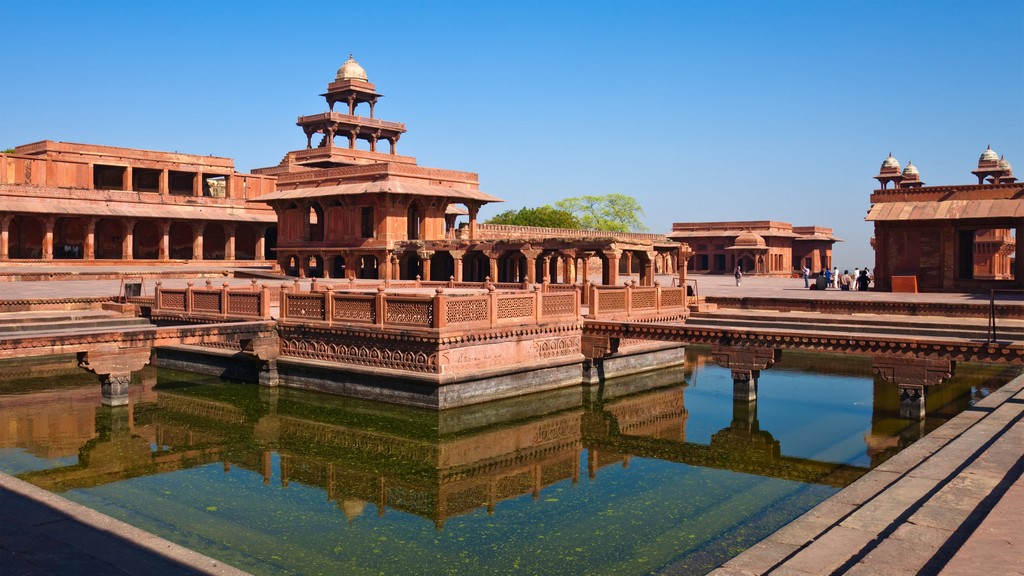
Best Time To Visit Fatehpur Sikri
The best time to visit Fatehpur Sikri is during the winter months, from October to March. This period offers a pleasant climate with temperatures ranging from 10°C to 25°C, making it ideal for exploring the historical site without the scorching heat of summer. The winter months provide a comfortable environment for tourists to wander through the intricate architecture, including the Jama Masjid, Buland Darwaza, and the Panch Mahal. Additionally, the cooler weather enhances the overall experience, allowing visitors to appreciate the UNESCO World Heritage Site’s grandeur and historical significance without the discomfort of extreme temperatures that characterize the summer and monsoon seasons.
How To Reach Fatehpur Sikri
Air
The nearest airport is Agra Airport, approximately 40 km away. From there, one can hire a taxi or take a bus to reach Fatehpur Sikri.
Train
Fatehpur Sikri has its own railway station, well-connected to major cities. Trains from Agra and other regions provide convenient access to the site.
Road
Well-maintained road networks connect Fatehpur Sikri to nearby cities. Buses, taxis, and private vehicles are accessible options for a road trip to this historical destination.
Nearby Places To Visit
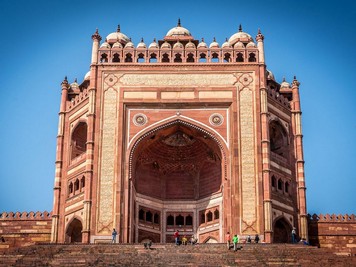
Buland Darwaza
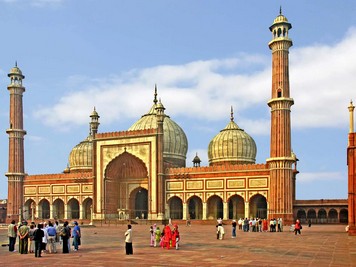
Jama Masjid
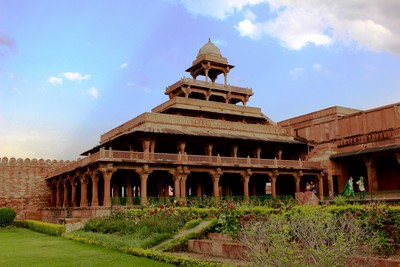
Panch Mahal
...and more
14. Elephanta Caves
Fatehpur Sikri, a UNESCO World Heritage Site in India, bears witness to the architectural brilliance of Emperor Akbar’s reign in the late 16th century. Constructed as his capital in 1569, this historic city showcases a harmonious blend of Persian, Timurid, and Indian architectural styles. Despite its short-lived status as the capital, Fatehpur Sikri remains a masterpiece with notable structures like the Buland Darwaza and Jama Masjid. Nearby attractions include the iconic Taj Mahal in Agra, also a UNESCO site, and the abandoned city of Agra Fort, offering a captivating glimpse into the Mughal era. Together, they form a cultural tapestry inviting exploration.

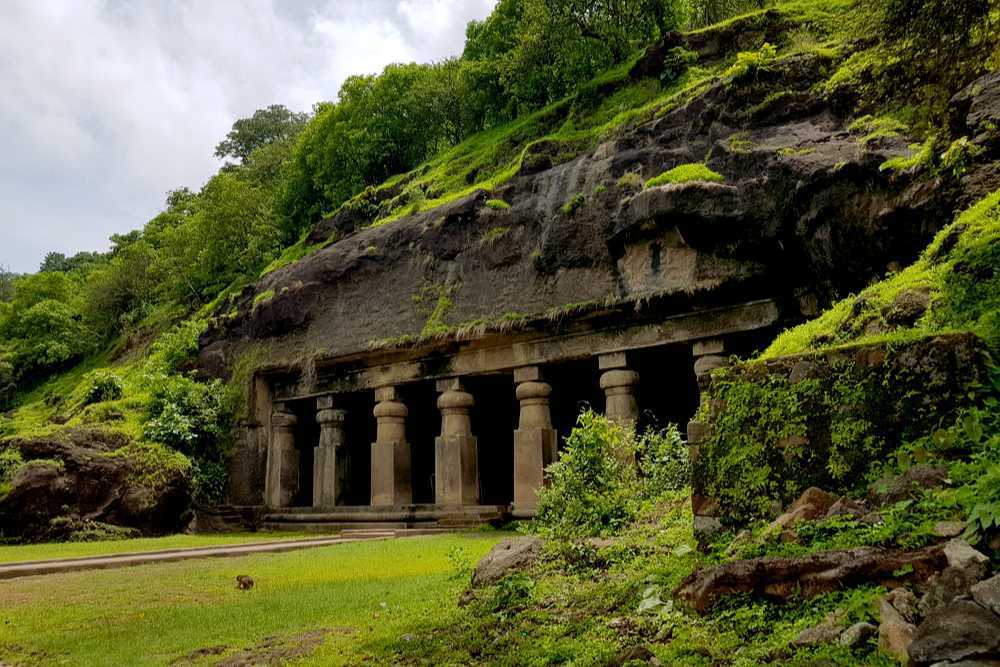
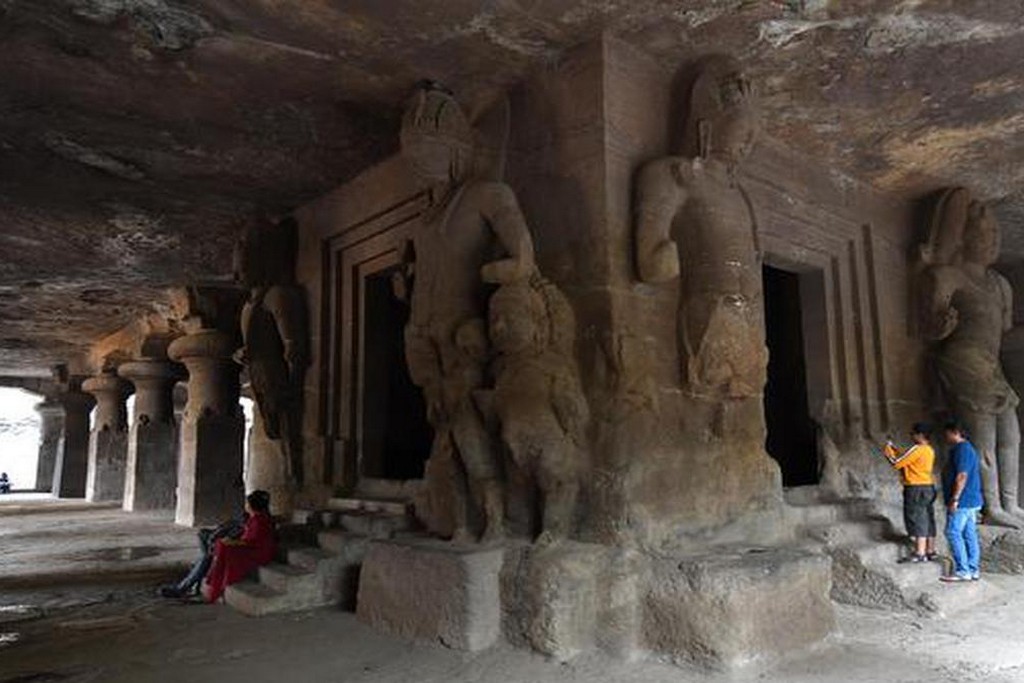
Best Time To Visit Elephanta Caves
The best time to visit Elephanta Caves is during the winter months, from November to February. Located on Elephanta Island in Mumbai, India, this UNESCO World Heritage Site experiences a pleasant climate during this period, with temperatures ranging from 17 to 30 degrees Celsius (63 to 86 degrees Fahrenheit). The cool and dry weather ensures a comfortable exploration of the ancient rock-cut caves, renowned for their intricate sculptures and historical significance. Monsoon season, from June to September, should be avoided due to heavy rainfall, while summers, from March to June, can be hot and humid, making the winter months the ideal time for a memorable visit.
How To Reach Elephanta Caves
Air
Fly to Chhatrapati Shivaji International Airport in Mumbai. Elephanta Caves are accessible by a ferry from the Gateway of India, just a short drive from the airport.
Train
Board a train to Mumbai’s Chhatrapati Shivaji Terminus or Dadar Station. From there, take a taxi or local train to the Gateway of India for the ferry to Elephanta.
Road
Drive or take a bus to Mumbai. Once in Mumbai, reach the Gateway of India by car or taxi. Ferries from there transport visitors to Elephanta Caves.
Nearby Places To Visit
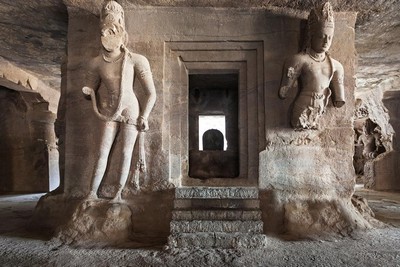
Ancient Sculptures
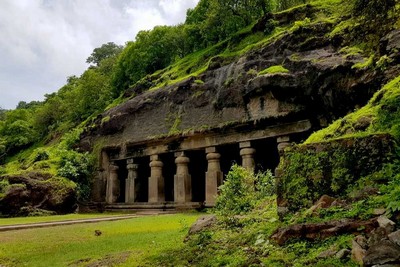
Island Heritage
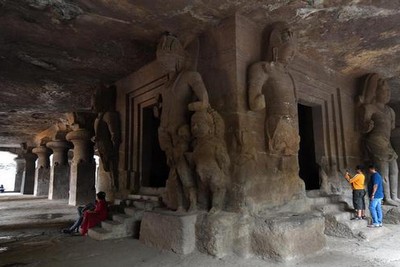
Cave Temples
...and more
15. Great Living Chola Temples
The Great Living Chola Temples, a UNESCO World Heritage site in India, represent a remarkable period in the history of Chola dynasty architecture. Built between the 10th and 12th centuries in Tamil Nadu, these temples showcase the grandeur and artistic excellence of the Chola rulers. The Brihadeshwara Temple in Thanjavur, the Brihadeshwara Temple in Gangaikonda Cholapuram, and the Airavatesvara Temple in Darasuram exemplify Dravidian architecture with intricate sculptures and towering vimanas. These temples are not only architectural marvels but also hubs of cultural and religious significance. Explore nearby attractions like the historic town of Kumbakonam and the Airavatesvara Temple, a testament to Chola craftsmanship.
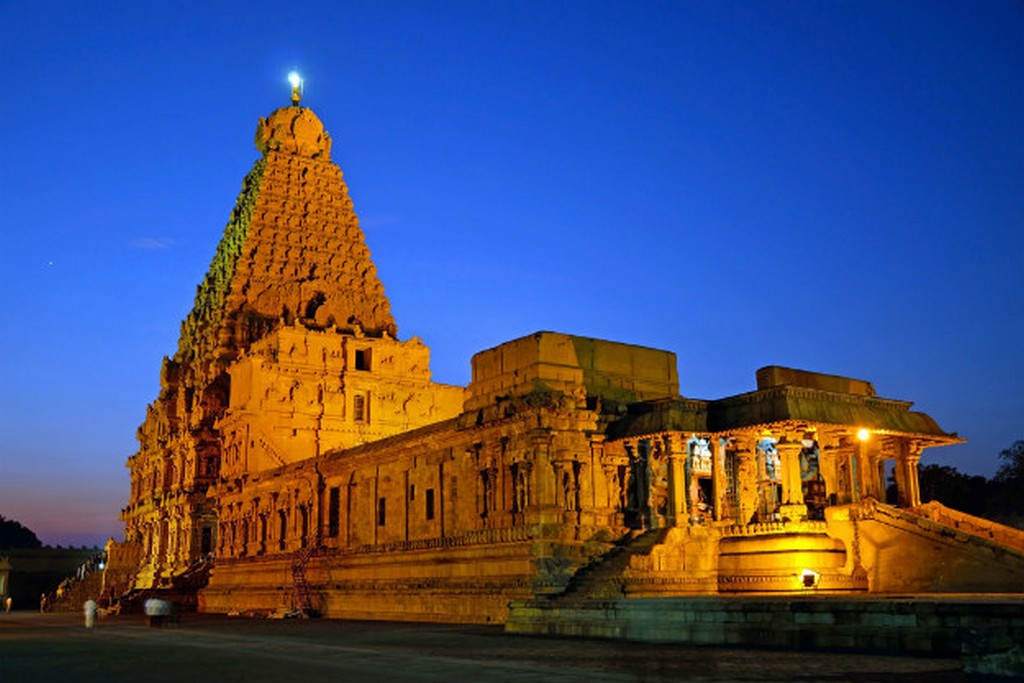
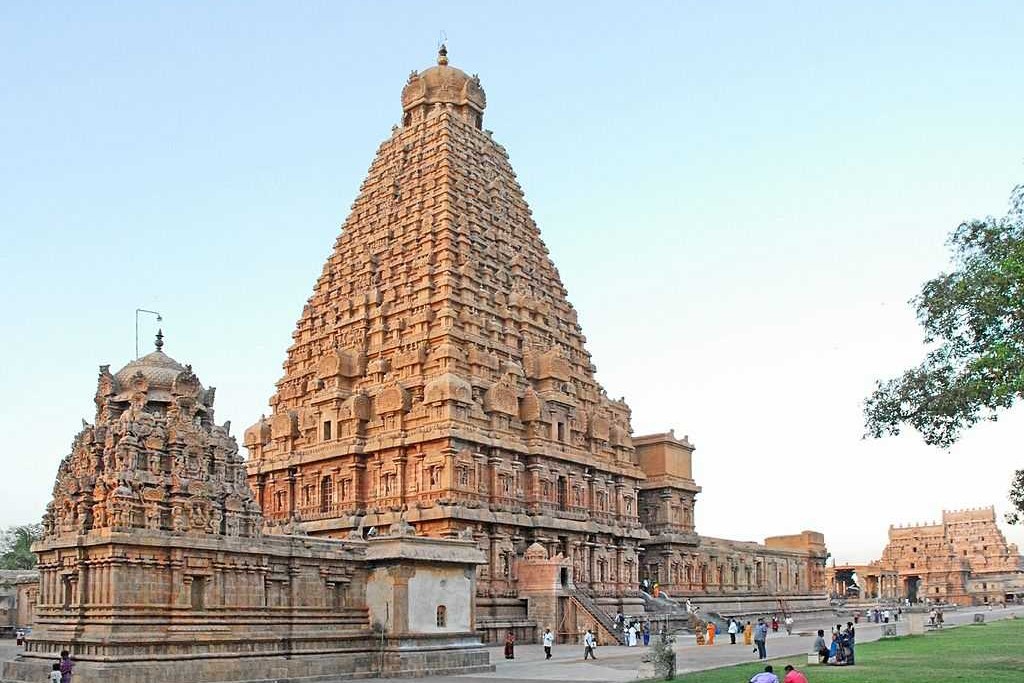
Best Time To Visit Great Living Chola Temples
The best time to visit the Great Living Chola Temples, a UNESCO World Heritage site in Tamil Nadu, India, is during the winter months from November to February. This period offers a pleasant climate with cooler temperatures, making it ideal for exploring the intricate architecture and rich cultural history of the temples. The monsoon season, from June to September, should be avoided due to heavy rainfall that can hinder travel and sightseeing. The temples, including Brihadeeswarar Temple in Thanjavur, Airavatesvara Temple in Darasuram, and Gangaikonda Cholapuram, stand as masterpieces of Chola dynasty art and are best experienced during the dry and comfortable winter season.
How To Reach Great Living Chola Temples
Air
Fly to Trichy International Airport, the nearest airport to the Great Living Chola Temples. From there, hire a taxi or use public transport to reach the temples.
Train
Take a train to Thanjavur Railway Station, the primary railhead near the temples. From the station, use local transportation like taxis or buses to reach your destination.
Road
Drive or take a bus to Thanjavur, well-connected by road. From Thanjavur, travel to the Great Living Chola Temples by taxi, auto-rickshaw, or other local transport options.
Nearby Places To Visit
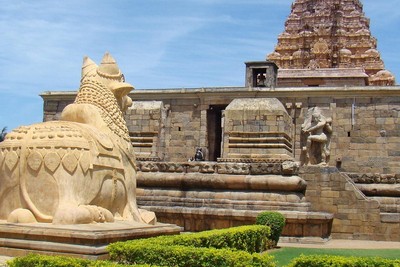
Architectural Marvel
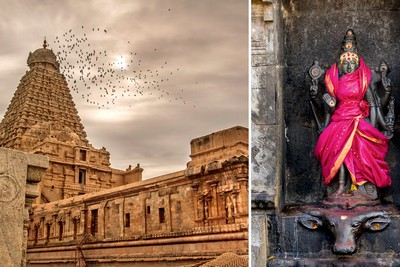
Rich Heritage
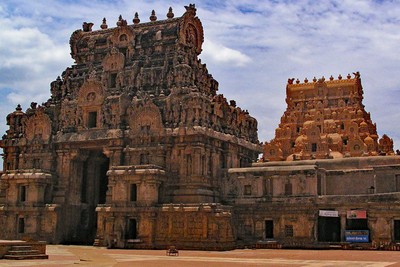
Spiritual Oasis
...and more
16. Pattadakal Monuments
Pattadakal, located in Karnataka, India, boasts a rich history dating back to the 7th and 8th centuries during the Chalukyan dynasty. This UNESCO World Heritage Site is renowned for its stunning group of ten temples that showcase a harmonious blend of North and South Indian architectural styles. The intricate carvings and sculptures narrate tales of Hindu mythology, making it a significant pilgrimage site. Nearby attractions include the Aihole and Badami cave temples, both contributing to the Chalukyan architectural legacy. Pattadakal stands as a testament to India’s cultural diversity and architectural brilliance, attracting visitors from around the world.
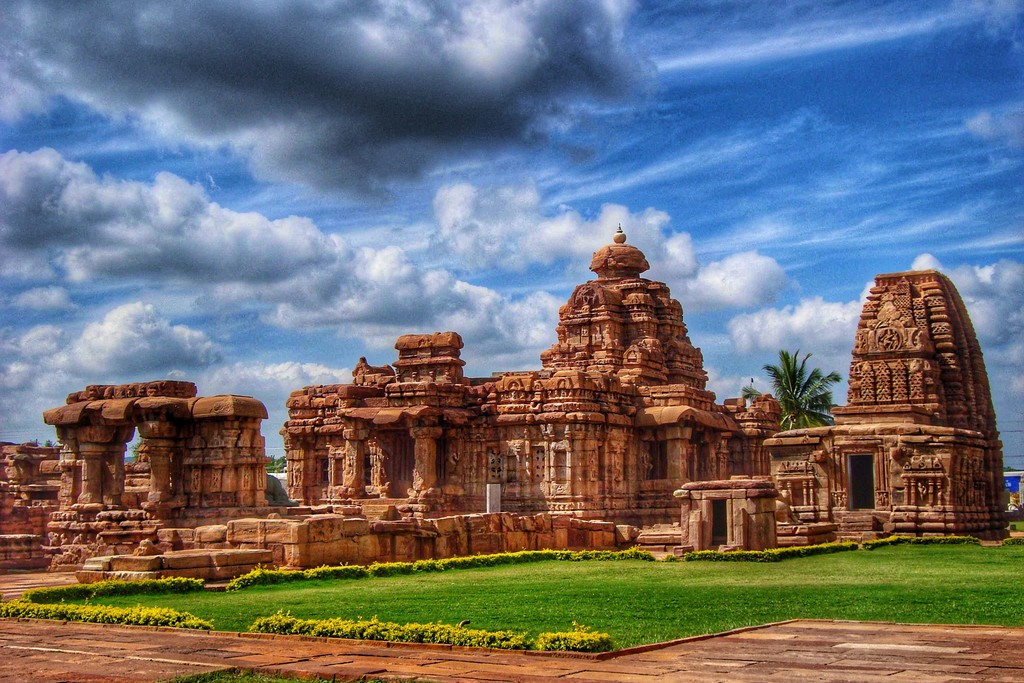
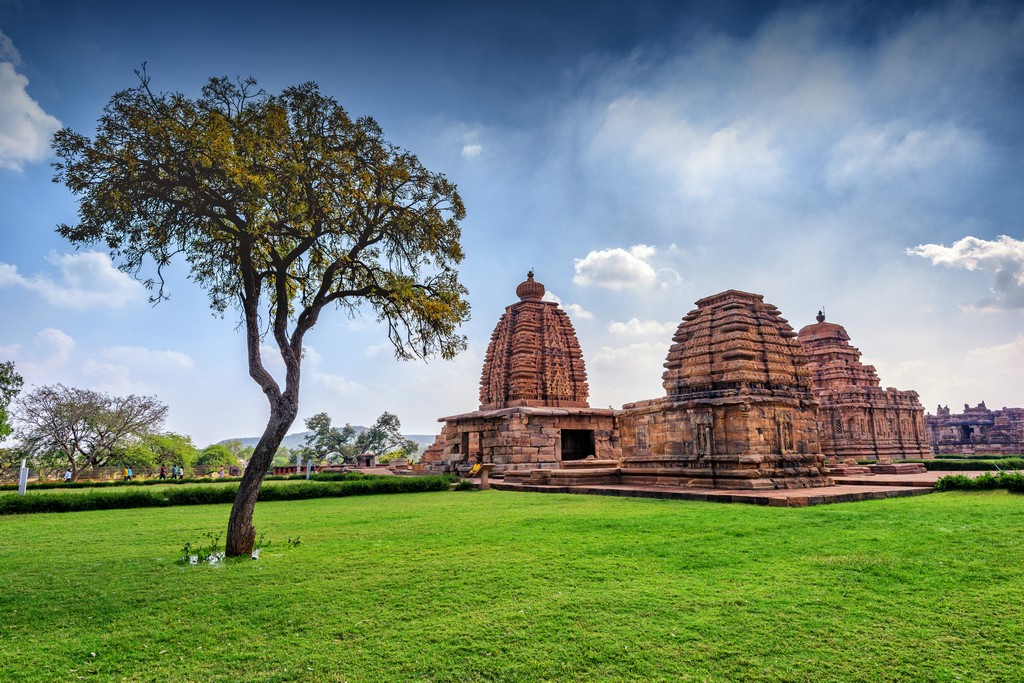
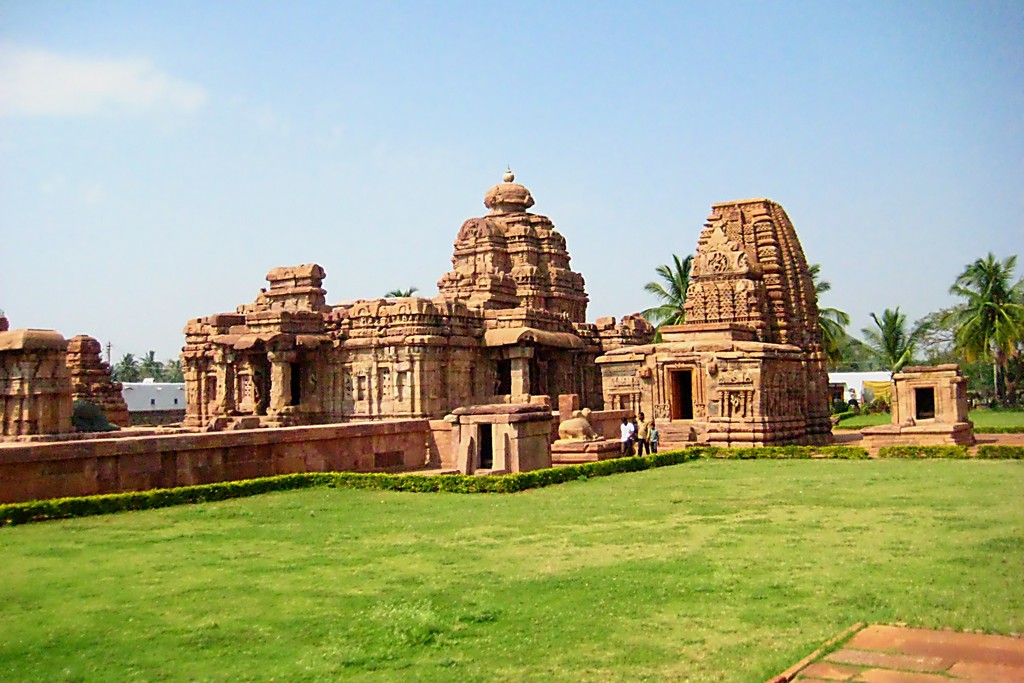
Best Time To Visit Pattadakal Monuments
The best time to visit Pattadakal and its historic monuments is during the winter months, from October to March. This period offers pleasant weather with temperatures ranging from 15°C to 30°C, making outdoor exploration comfortable. The cooler climate allows visitors to fully appreciate the intricate details of the Chalukyan architecture showcased in the UNESCO World Heritage Site. During this time, the region experiences minimal rainfall, ensuring clear skies and enhancing the overall travel experience. Additionally, cultural events and festivals often take place during the winter, providing a vibrant atmosphere and a deeper insight into the rich heritage of Pattadakal.
How To Reach Pattadakal Monuments
Air
The nearest airport to Pattadakal is Belgaum Airport, approximately 205 km away. From there, one can hire a taxi or take a bus.
Train
The closest railway station is Badami, about 22 km away. Regular trains connect Badami to major cities. Taxis and buses are available for the onward journey.
Road
Pattadakal is well-connected by road. Regular bus services operate from nearby towns and cities. One can also hire a taxi or drive from places like Bangalore or
Nearby Places To Visit

UNESCO Heritage Site
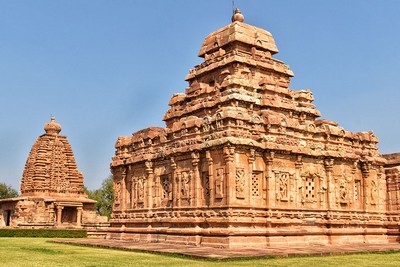
Chalukya Temples
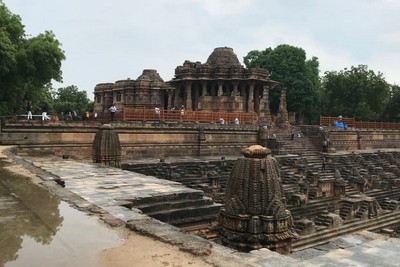
Architectural Marvels
...and more
17. Sundarbans National Park
The Sundarbans National Park, located in the delta region of the Padma, Meghna, and Brahmaputra river basins, is a UNESCO World Heritage Site in India. Established in 1984, this unique mangrove forest spans both India and Bangladesh, covering approximately 10,000 square kilometers. Home to the Bengal tiger, saltwater crocodile, and diverse bird species, it is renowned for its rich biodiversity. The park also features the Sundarbans Reserve Forest, offering boat safaris to explore its intricate waterways. Nearby attractions include the Sajnekhali Wildlife Sanctuary and the Netidhopani watchtower, providing panoramic views of the delta. The Sundarbans remain a vital ecological treasure, vital for global conservation efforts.
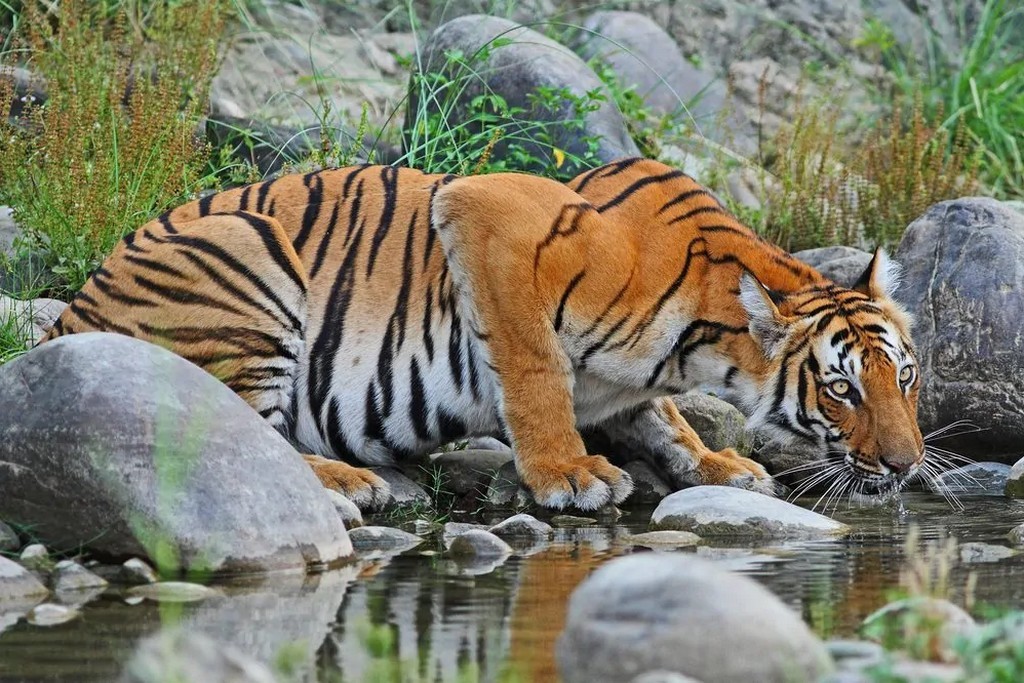
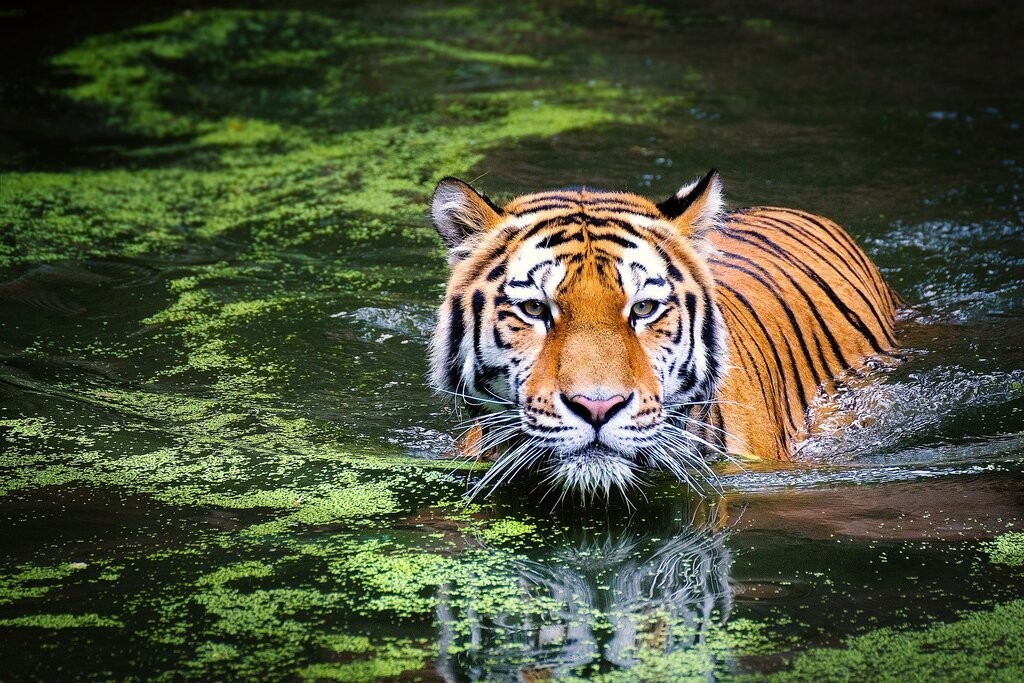
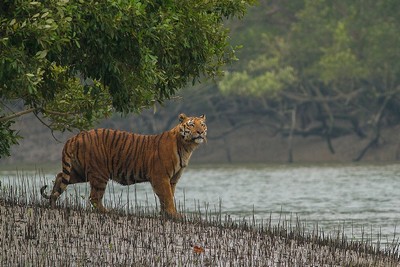
Best Time To Visit Sundarbans National Park
The best time to visit Sundarbans National Park is during the winter months of November to February. This period offers pleasant weather with temperatures ranging from 10 to 30 degrees Celsius, creating a comfortable environment for exploration. Winter also marks the dry season when the water levels recede, revealing the intricate network of rivers and mangrove forests. This facilitates better wildlife spotting, including the elusive Bengal tiger, various species of deer, and diverse birdlife. The reduced humidity minimizes discomfort, making it an ideal time for boat safaris and nature walks. However, planning ahead is crucial due to the park’s popularity during this season.
How To Reach Sundarbans National Park
Air
Fly to Netaji Subhas Chandra Bose International Airport in Kolkata. From there, take a connecting flight to Canning Airport. Sundarbans is accessible via boat from Canning.
Train
Board a train to Canning Railway Station from Sealdah Junction in Kolkata. From Canning, take a local transport or taxi to Godkhali, the gateway to Sundarbans.
Road
Drive from Kolkata to Godkhali, a journey of approximately 3-4 hours. From Godkhali, board a boat to navigate through the intricate waterways leading to Sundarbans National Park.
Nearby Places To Visit
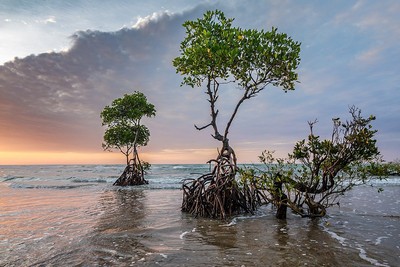
Mangrove Forests
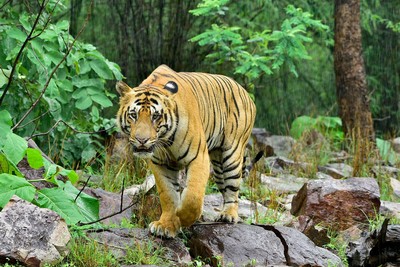
Bengal Tigers
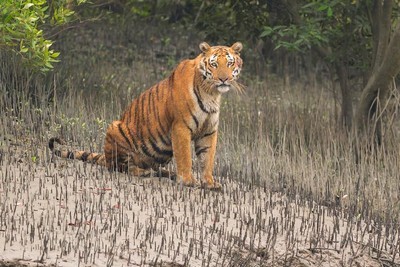
Wildlife Sanctuaries
...and more
18. Humayun’s Tomb
Humayun’s Tomb, located in Delhi, India, is a masterpiece of Mughal architecture and a UNESCO World Heritage Site. Built in 1570, it is the tomb of the second Mughal Emperor, Humayun. The tomb’s grandeur and symmetry, with its charbagh garden layout, influenced later Mughal architectural marvels, including the Taj Mahal. Adjacent to Humayun’s Tomb is the enchanting Isa Khan’s Garden Tomb, an exquisite example of Lodi dynasty architecture. Furthermore, the Nizamuddin Dargah, a Sufi shrine, and the historic Purana Qila fort are nearby attractions, creating a cultural and historical enclave that showcases India’s rich heritage, boasting multiple UNESCO sites.
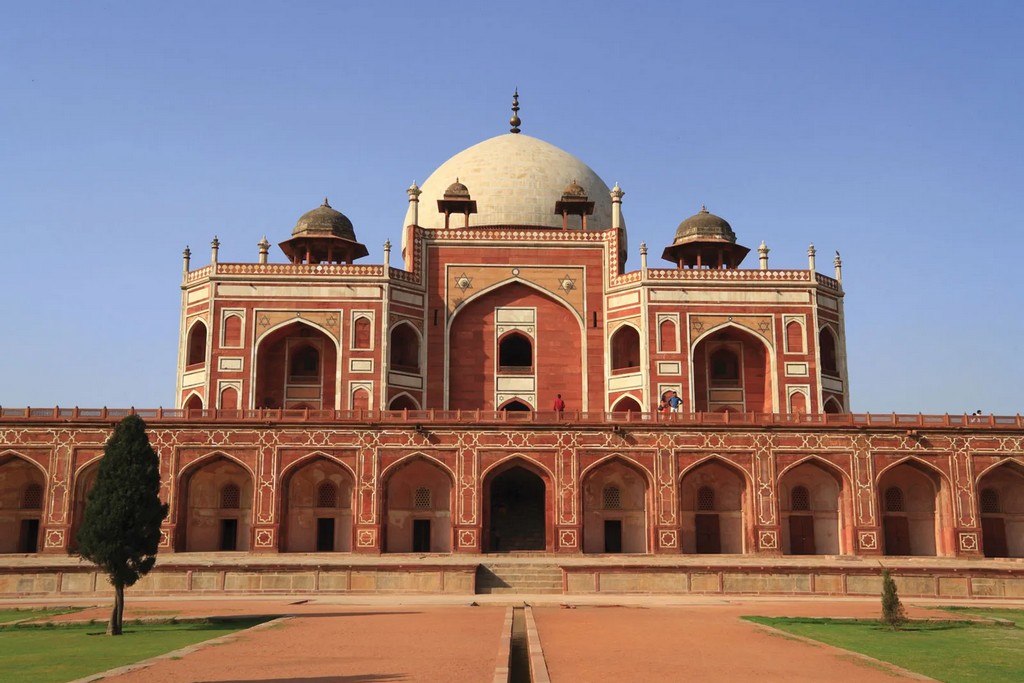
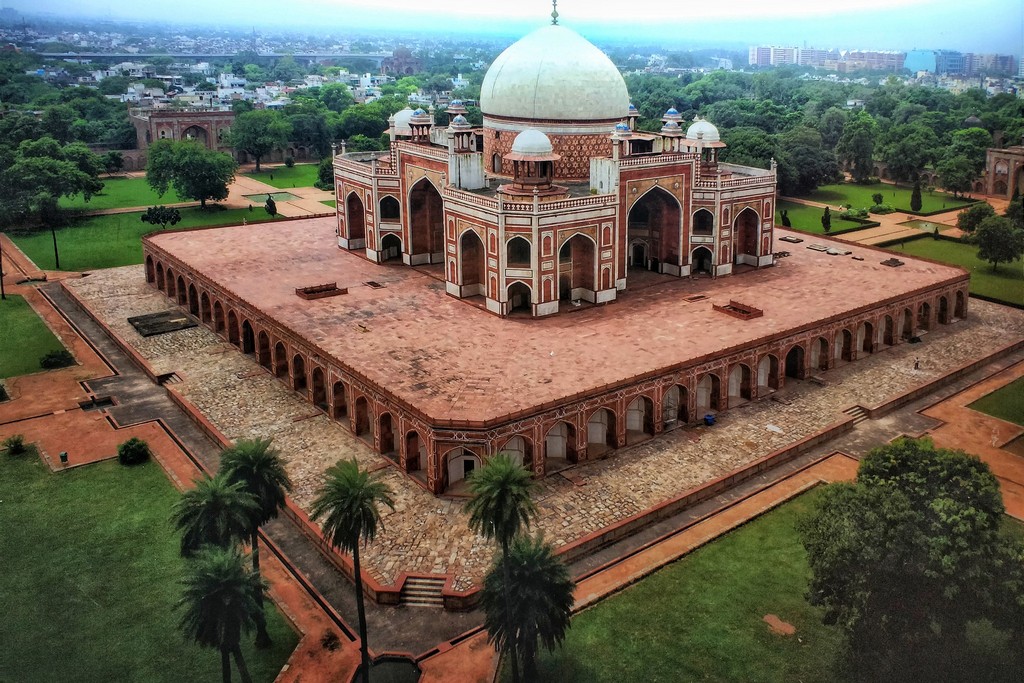
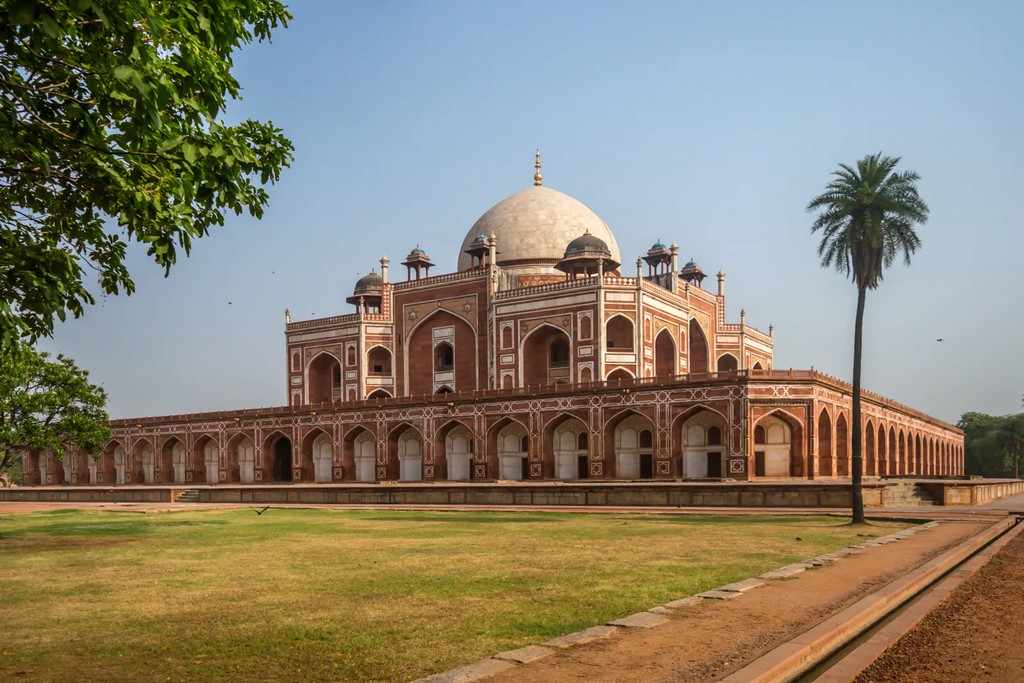
Best Time To Visit Humayun’s Tomb
The best time to visit Humayun’s Tomb in Delhi, India, is during the winter months, from October to March. This period offers a more comfortable climate with milder temperatures ranging from 5 to 25 degrees Celsius (41 to 77 degrees Fahrenheit). The cooler weather enhances the overall experience of exploring the beautifully landscaped gardens and intricate Mughal architecture of the tomb. Additionally, the winter months coincide with the peak tourist season, ensuring clearer skies and better photo opportunities. Avoiding the scorching heat of summer and the monsoon rains, this time frame provides an ideal atmosphere for an enriching visit to this UNESCO World Heritage Site.
How To Reach Humayun’s Tomb
Air
Nearest airport is Indira Gandhi International Airport, New Delhi. From there, take a taxi or hire a car to reach Humayun’s Tomb Park, approximately 20 km away.
Train
Board a train to New Delhi Railway Station. From there, hire a taxi or take a local bus to reach Humayun’s Tomb Park, around 10 km away.
Road
If traveling by road, use local transportation or hire a cab to reach Humayun’s Tomb Park. It is well-connected by roads, with parking facilities available.
Nearby Places To Visit
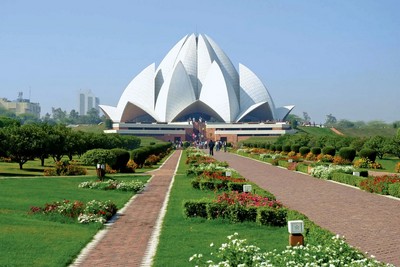
Lotus Temple

India Gate
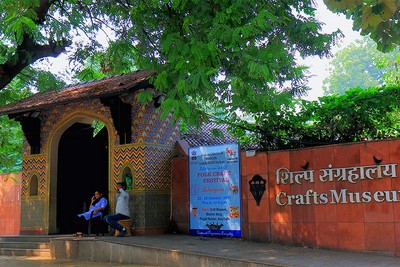
National Crafts Museum
...and more
19. Qutub Minar
Qutub Minar, a UNESCO World Heritage Site in Delhi, India, stands as a testament to the city’s rich history. Built in the 12th century by Qutub-ud-din Aibak, the towering minaret is a masterpiece of Indo-Islamic architecture. Originally constructed to celebrate Muslim dominance, subsequent rulers added to its height. The complex surrounding the minar is adorned with exquisite structures like the Quwwat-ul-Islam Mosque and Alai Darwaza. Another UNESCO site nearby is Humayun’s Tomb, an exemplary Mughal garden tomb. Together, these landmarks create a captivating historical journey through India’s diverse cultural influences, drawing visitors to explore the nation’s architectural marvels.
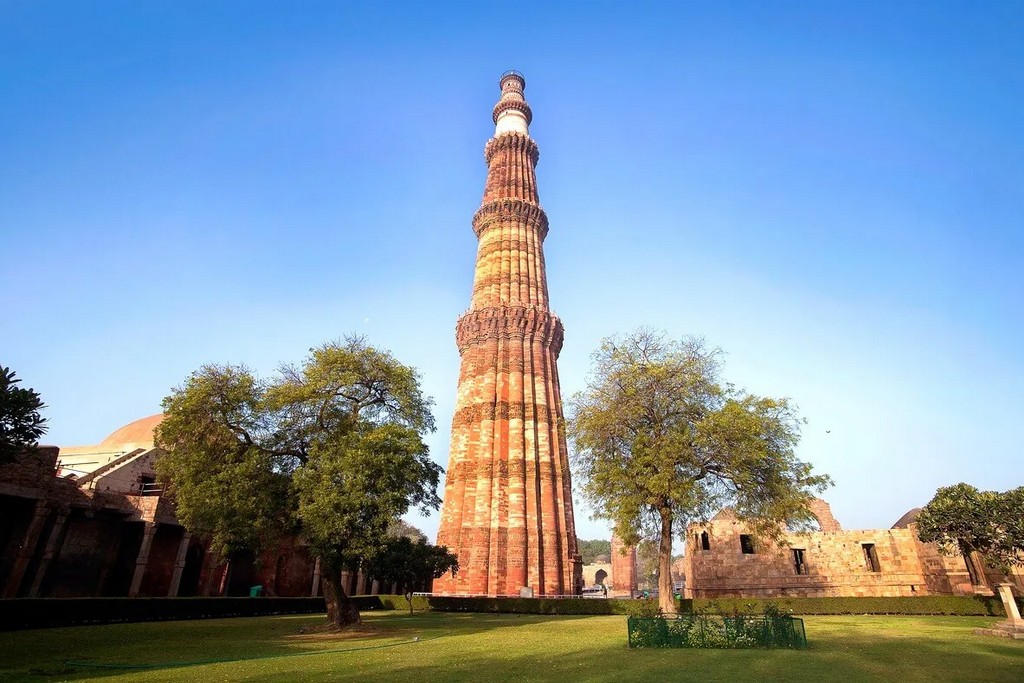
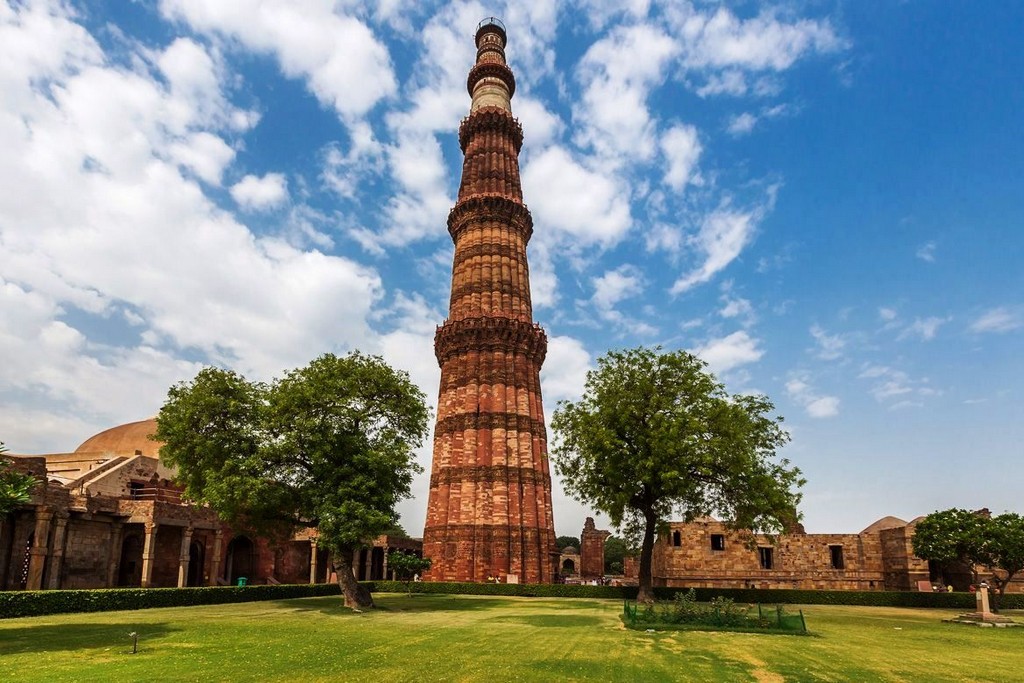
Best Time To Visit Qutub Minar
The best time to visit Qutub Minar is during the winter months, from October to March. The weather during this period is pleasant, with temperatures ranging from 10 to 25 degrees Celsius, making it ideal for exploring the historical site. The cooler temperatures ensure a more comfortable and enjoyable experience as you wander through the intricate architecture and ancient ruins. Additionally, the winter months coincide with the festival season in Delhi, adding a vibrant cultural atmosphere to your visit. Summer months, from April to June, can be scorching, while the monsoon season, from July to September, brings heavy rainfall and is best avoided for sightseeing.
How To Reach Qutub Minar
Air
Fly to Indira Gandhi International Airport (DEL) in Delhi. Qutub Minar is about 15 km away. Hire a taxi or take the Delhi Metro for a convenient journey.
Train
Arrive at New Delhi Railway Station, approximately 17 km from Qutub Minar. Use local transportation like taxis or the Delhi Metro for a swift transfer.
Road
Reach Qutub Minar by road via buses, cabs, or personal vehicles. It is well-connected through major roads. Follow signs or use GPS for precise directions.
Nearby Places To Visit

Lotus Temple

India Gate

National Crafts Museum
...and more
20. Mahabodhi Temple
The Mahabodhi Temple, located in Bodh Gaya, Bihar, India, holds immense historical and spiritual significance. Built in the 3rd century BCE, it marks the spot where Siddhartha Gautama attained enlightenment, becoming the Buddha. Recognized as a UNESCO World Heritage Site, the temple’s architecture reflects Indian, Chinese, and Tibetan influences.
Surrounding the Mahabodhi Temple are numerous attractions, including the Bodhi Tree, believed to be a descendant of the original tree under which Buddha meditated. The Great Buddha Statue and the Archaeological Museum showcase artifacts from the site’s rich history. This sacred complex remains a pilgrimage site, attracting Buddhists and tourists alike, preserving its cultural and religious heritage.

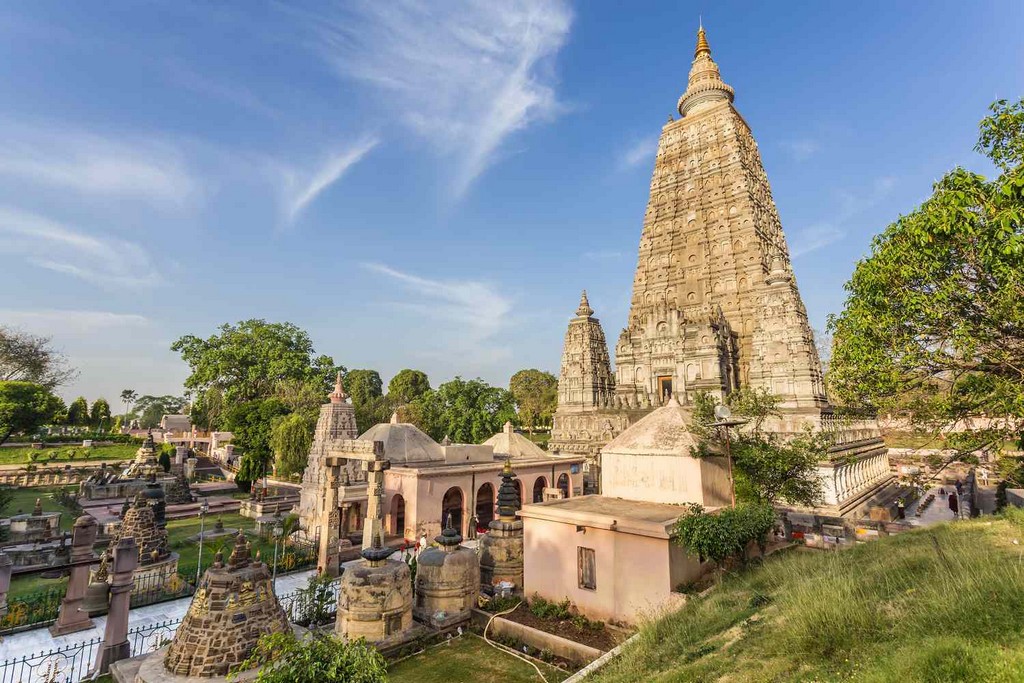
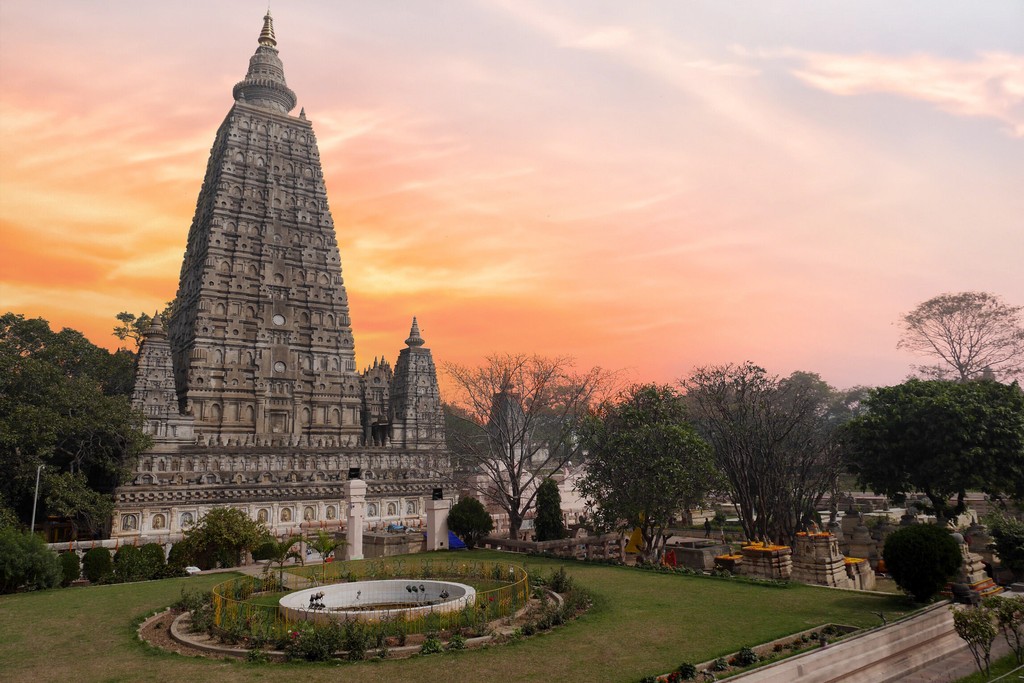
Best Time To Visit Mahabodhi Temple
The best time to visit the Mahabodhi Temple is during the winter months, from October to March, when the weather is cool and pleasant. This UNESCO World Heritage site, located in Bodh Gaya, Bihar, is significant as the place where Siddhartha Gautama attained enlightenment and became the Buddha. During the winter, temperatures are comfortable, ranging from 5 to 25 degrees Celsius, making exploration of the temple and surrounding areas enjoyable. Additionally, this period aligns with various Buddhist festivals and events, creating a spiritually vibrant atmosphere. Avoiding the scorching summer and monsoon seasons ensures a more comfortable and spiritually enriching experience at this sacred site.
How To Reach Mahabodhi Temple
Air
The nearest airport is Gaya Airport (GAY), about 12 km away. Regular flights connect Gaya to major Indian cities.
Train
Gaya Junction (GAYA) is the closest railway station, well-connected to major cities. From there, one can hire a taxi or take a local train.
Road
National Highway 31 connects Bodh Gaya to various cities. Buses, taxis, and private vehicles are available for a convenient road journey.
Nearby Places To Visit
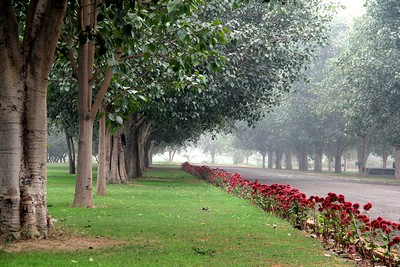
Bodhi Tree Park
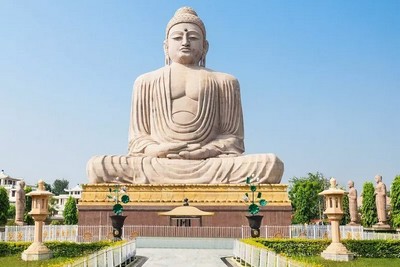
Great Buddha Statue
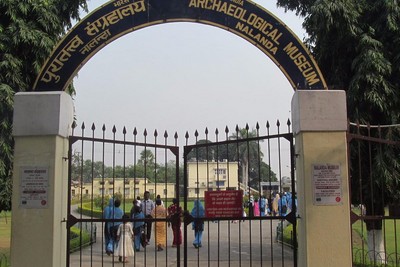
National Crafts Museum
...and more
21. Bhimbetka Rock Shelters
Bhimbetka Rock Shelters, located in the Vindhya Range near Bhopal, India, boast a rich history dating back to the Paleolithic era, with evidence of human habitation spanning over 30,000 years. Designated as a UNESCO World Heritage Site in 2003, these ancient rock shelters showcase over 700 rock paintings depicting the life and times of prehistoric communities. The artistry and cultural significance of Bhimbetka make it a captivating archaeological site. Nearby attractions include the Bhojeshwar Temple, an 11th-century marvel dedicated to Lord Shiva, and Sanchi Stupa, an iconic Buddhist monument also listed as a UNESCO site, providing visitors with a comprehensive journey through India’s diverse history.
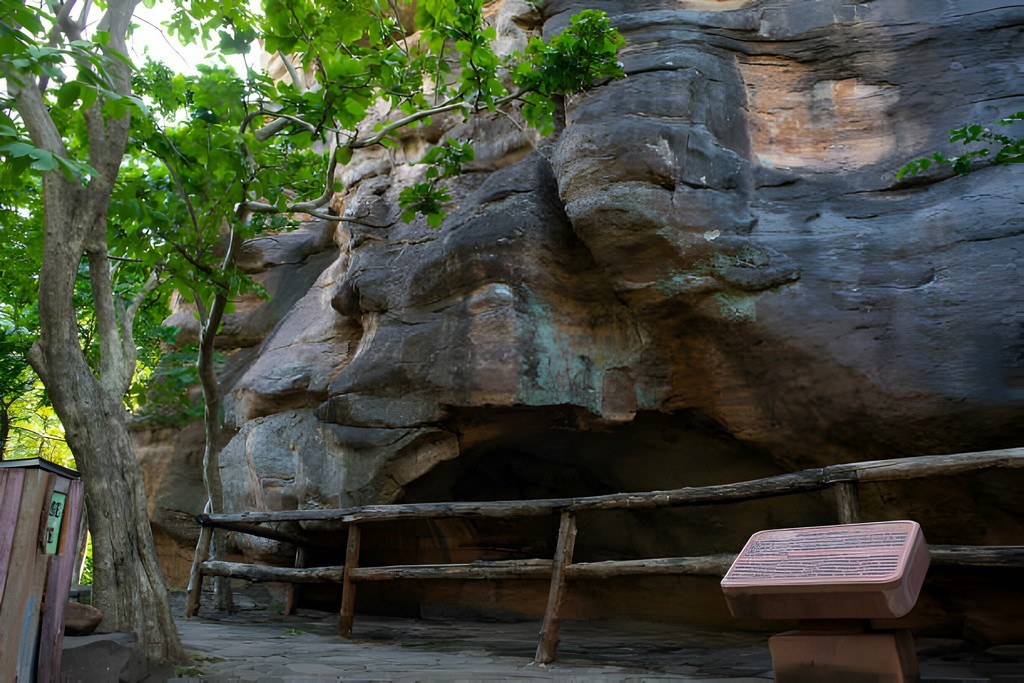
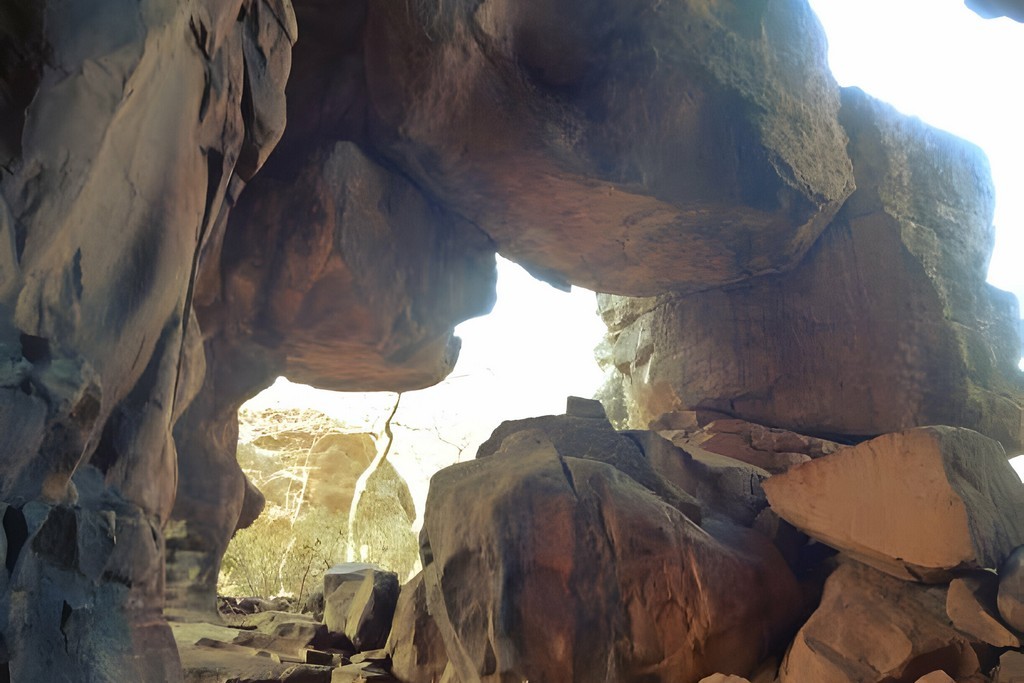
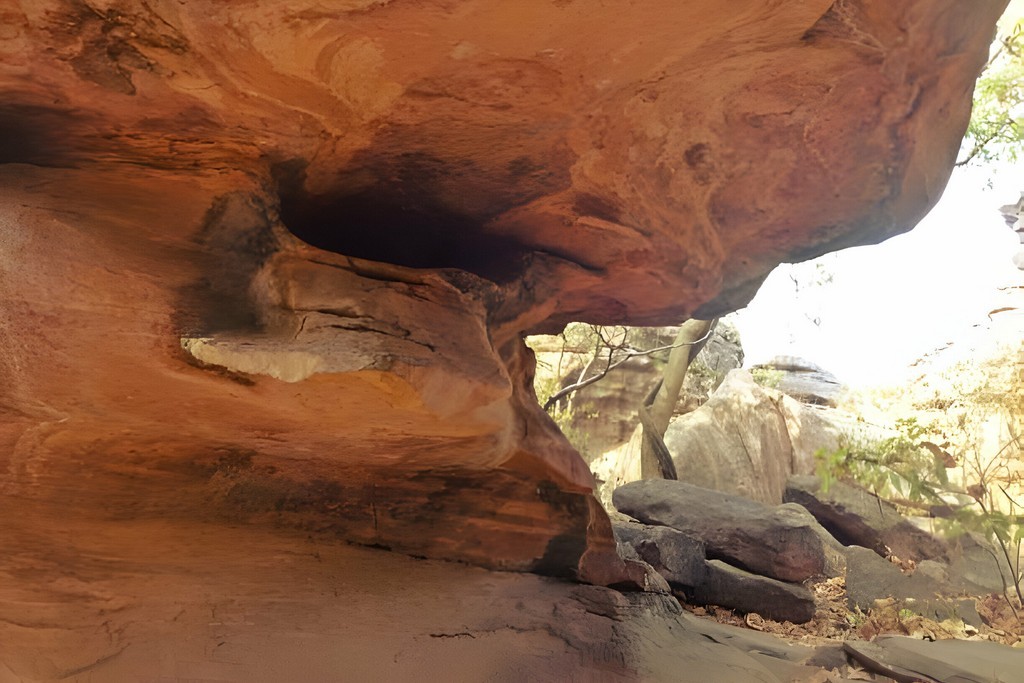
Best Time To Visit Bhimbetka Rock Shelters
The best time to visit Bhimbetka Rock Shelters is during the winter months, from October to March. Located in Madhya Pradesh, India, these ancient rock formations showcase prehistoric cave paintings and archaeological treasures. The weather during this period is pleasant, with temperatures ranging from 10 to 27 degrees Celsius, making exploration comfortable. The monsoon season (June to September) should be avoided due to heavy rainfall, which may hinder travel and site accessibility. The winter season provides an ideal climate for tourists to enjoy the historical significance of Bhimbetka, as well as the surrounding natural beauty, without the discomfort of extreme temperatures.
How To Reach Bhimbetka Rock Shelters
Air
The nearest airport to Bhimbetka Rock Shelters is Bhopal Airport. From there, hire a taxi or take a bus for a 45 km journey.
Train
Bhopal Junction is the closest railway station. After reaching, hire a cab or take a bus for a 45 km ride to Bhimbetka.
Road
Bhimbetka is well-connected by road. Buses and taxis are available from nearby cities like Bhopal. The site is approximately 45 km away.
Nearby Places To Visit
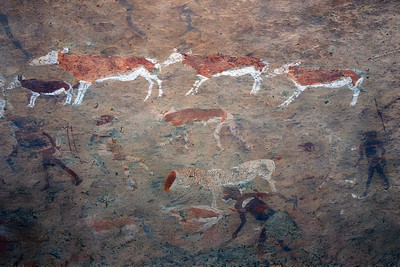
Prehistoric Cave Art
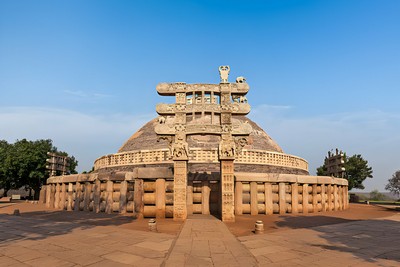
Sanchi Stupas
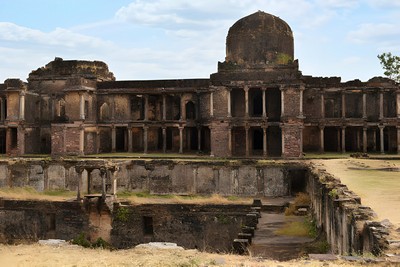
Raisen Fort
...and more
22. Chhatrapati Shivaji Terminus
Chhatrapati Shivaji Terminus (CST), formerly known as Victoria Terminus, is a historic railway station in Mumbai, India. Built in 1888, it reflects Victorian Gothic architecture, blending traditional Indian and British styles. The UNESCO-listed site serves as a symbol of Mumbai’s rich history. Nearby attractions include the iconic Gateway of India, a grand arch overlooking the Arabian Sea, and the Chhatrapati Shivaji Maharaj Vastu Sangrahalaya, showcasing India’s artistic heritage. Additionally, the Elephanta Caves, another UNESCO World Heritage Site, featuring ancient rock-cut temples, can be accessed by a ferry from the nearby Gateway of India, offering a glimpse into India’s cultural and architectural diversity.
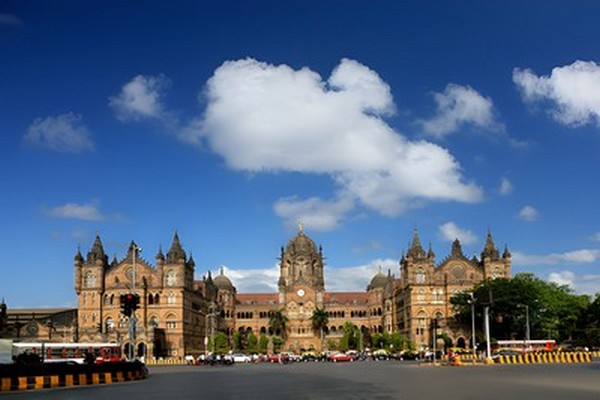
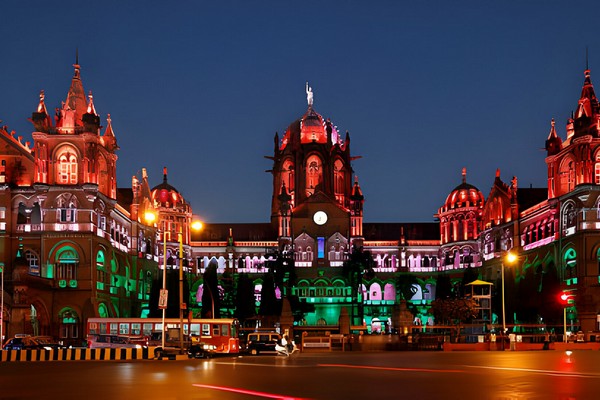
Best Time To Visit Chhatrapati Shivaji Terminus
The best time to visit Chhatrapati Shivaji Terminus (CST) in Mumbai is during the winter months, from November to February. This period offers a pleasant climate, with temperatures ranging from 10 to 25 degrees Celsius, making it ideal for exploring the iconic railway station. The cool weather allows for comfortable sightseeing, and you can fully appreciate the Victorian Gothic and Indo-Saracenic architectural marvel of CST. Additionally, Mumbai’s vibrant cultural scene is at its peak during these months, providing a perfect backdrop for immersing yourself in the city’s rich history and bustling atmosphere around the Chhatrapati Shivaji Terminus.
How To Reach Chhatrapati Shivaji Terminus
Air
Chhatrapati Shivaji Terminus is easily accessible via Chhatrapati Shivaji International Airport. Numerous flights connect major cities, ensuring a convenient and efficient air travel option.
Train
Being a prominent railway hub, Chhatrapati Shivaji Terminus is well-connected by trains from across India. Regular services and various classes cater to diverse travel preferences.
Road
A network of well-maintained roads links Chhatrapati Shivaji Terminus to neighboring cities and states. Buses, taxis, and private vehicles provide reliable and flexible road transportation options.
Nearby Places To Visit
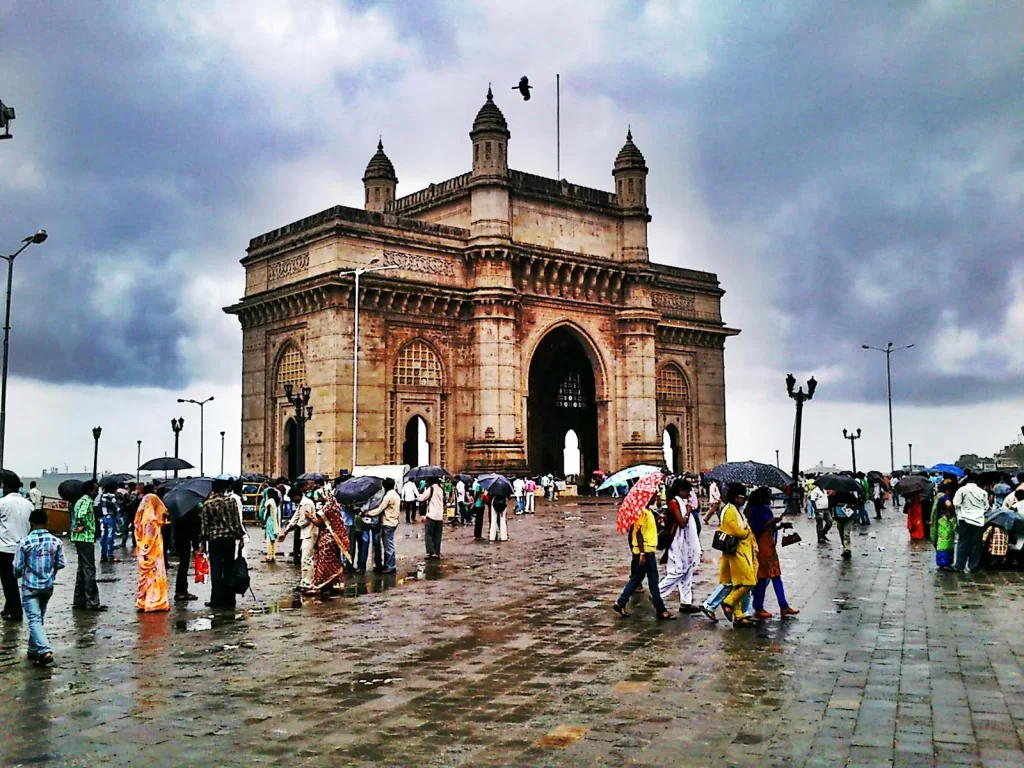
Gateway of India
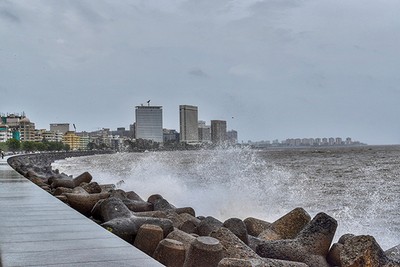
Marine Drive
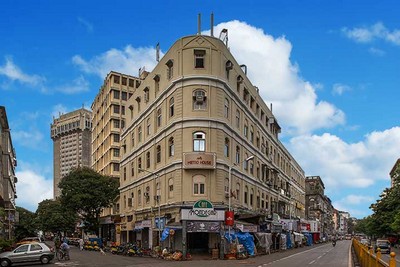
Colaba Causeway
...and more
23. Champaner Pavagadh Archaeological Park
Champaner-Pavagadh Archaeological Park, a UNESCO World Heritage Site in India, boasts a rich history dating back to the 8th century. Nestled at the foothills of Pavagadh, it showcases a harmonious blend of Hindu-Muslim architecture, reflecting the region’s diverse cultural influences. The park features impressive structures, including mosques, temples, and stepwells, showcasing the architectural prowess of its time. Notable landmarks include the Jama Masjid, Sahar ki Masjid, and the intricately carved Kevda Masjid. Beyond the park, explore the picturesque Machi Fort on Pavagadh Hill for panoramic views. This archaeological gem invites visitors to step back in time, marveling at its cultural and historical significance.
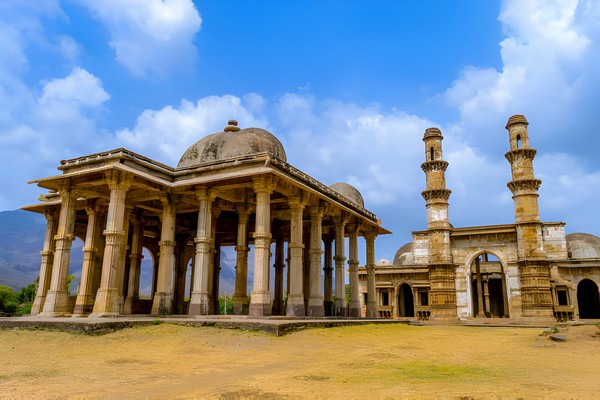

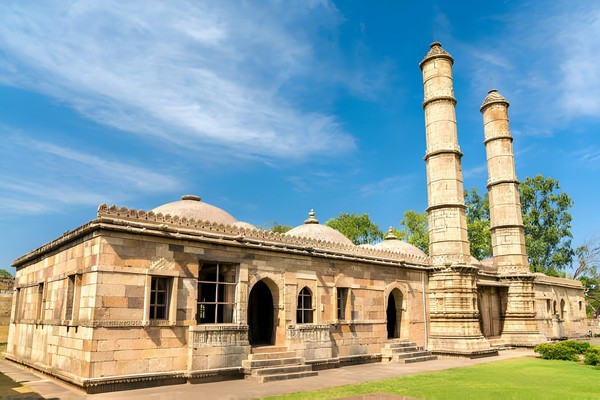
Best Time To Visit ChampanerPavagadh Archaeological Park
The best time to visit Champaner-Pavagadh Archaeological Park is during the winter months, from October to March. The weather is pleasantly cool, with temperatures ranging from 10°C to 25°C, making it ideal for exploring the historical ruins and structures. This UNESCO World Heritage Site, located in Gujarat, India, boasts well-preserved archaeological wonders, including forts, palaces, and religious buildings. During winter, the lush greenery enhances the picturesque landscape, creating a perfect backdrop for sightseeing. Monsoon season, from July to September, should be avoided due to heavy rainfall, while the summer months, April to June, can be scorching, making it less comfortable for outdoor activities.
How To Reach ChampanerPavagadh Archaeological Park
Air
The nearest airport is Vadodara Airport, about 42 km away. From there, taxis and buses are available.
Train
Vadodara Junction is the nearest railway station. From Vadodara, one can hire a taxi or take a bus to reach Champaner-Pavagadh Archaeological Park.
Road
Well-connected by roads, Champaner is accessible via national highways. State buses, private taxis, and car rentals offer convenient transportation options.
Nearby Places To Visit
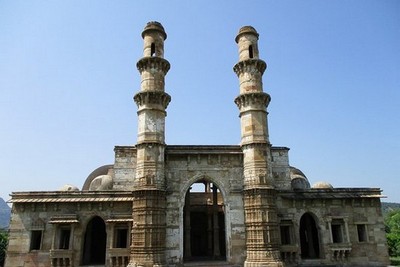
Kevada Masjid
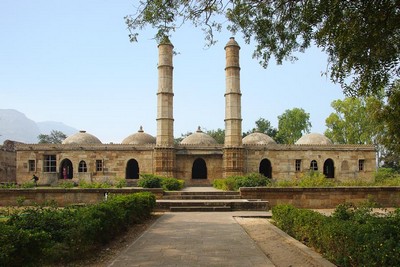
Sahar ki Masjid
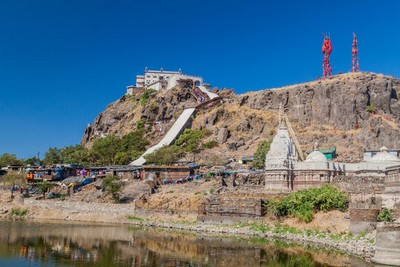
Pavagadh Hill
...and more
24. Red Fort
The Red Fort, a UNESCO World Heritage Site in Delhi, India, holds a rich history spanning centuries. Commissioned by Emperor Shah Jahan in 1638, it served as the main residence of the Mughal emperors for nearly 200 years. Constructed with red sandstone, it showcases exquisite Mughal architecture, featuring intricate carvings and a blend of Persian, Timurid, and Indian styles. Adjacent to the fort lies the iconic Chandni Chowk, a bustling market dating back to the Mughal era, offering a vibrant tapestry of sights and sounds. Another UNESCO gem, the Jama Masjid, the largest mosque in India, stands proudly nearby, completing the historical panorama of Old Delhi.
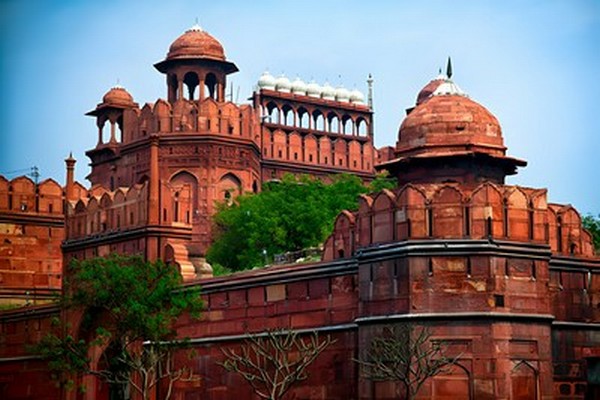

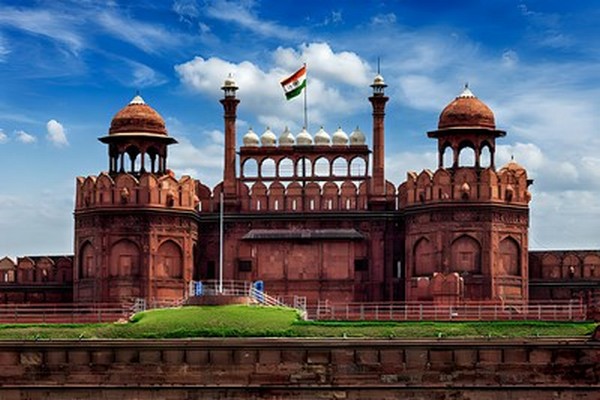
Best Time To Visit Red Fort
The best time to visit the Red Fort in Delhi is during the winter months, from October to March. This period offers a pleasant climate with cooler temperatures, making it more comfortable for exploring the historical site. The winter months also coincide with the festival season in India, adding a vibrant and festive atmosphere to the visit. Additionally, the clear skies during this time enhance the visibility of the intricate architectural details and the stunning red sandstone of the fort. Avoiding the scorching summer heat and the monsoon rains, winter provides an ideal window to fully appreciate the grandeur of the Red Fort.
How To Reach Red Fort
Air
Fly to Indira Gandhi International Airport in Delhi. From the airport, hire a taxi or take the Airport Express Metro to reach Red Fort.
Train
Board a train to New Delhi Railway Station. Red Fort is a short distance away. Use local transport like auto-rickshaws or taxis for convenience.
Road
Drive or hire a cab to reach Red Fort via major roads like Ring Road or Netaji Subhash Marg in Delhi. Public buses and auto-rickshaws are also available.
Nearby Places To Visit
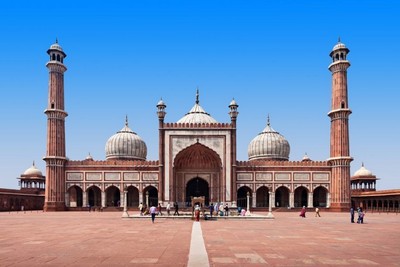
Jama Masjid
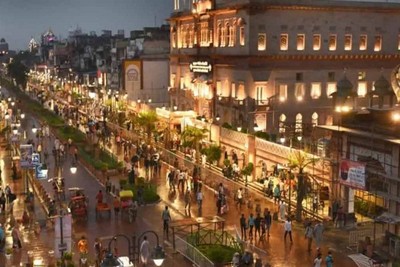
Chandni Chowk
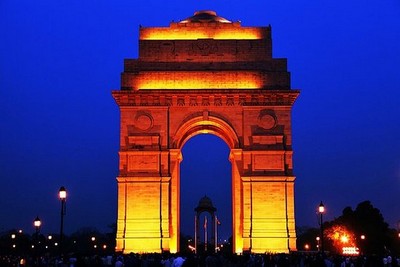
India Gate
...and more
25. Jantar Mantar
Built in the early 18th century by Maharaja Sawai Jai Singh II, Jantar Mantar in Jaipur, India, stands as an astronomical observatory. This architectural marvel comprises 19 instruments designed to measure time, track celestial bodies, and predict eclipses with remarkable precision. Recognized for its scientific and cultural significance, Jantar Mantar is a UNESCO World Heritage Site, showcasing the fusion of astronomy and artistry in Indian heritage.
Adjacent to Jantar Mantar lies the City Palace, a majestic blend of Rajput and Mughal architecture. Hawa Mahal, the Palace of the Winds, is another nearby gem, featuring intricate windows for royal ladies to observe street festivities. Together, these sites offer a captivating glimpse into India’s rich cultural tapestry.
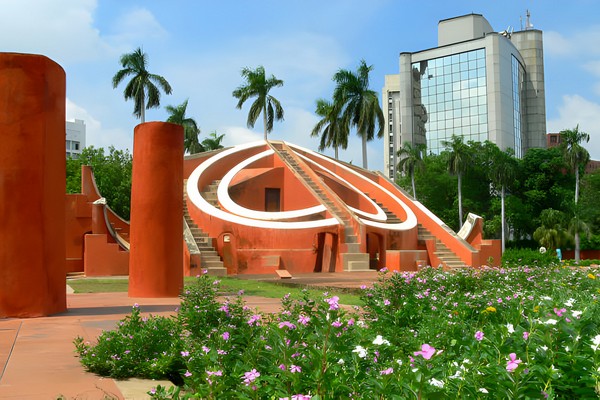
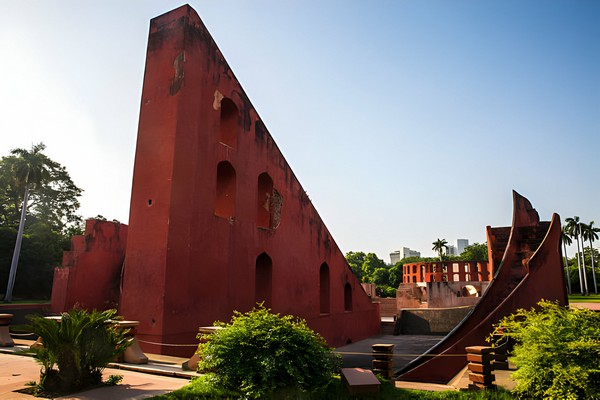
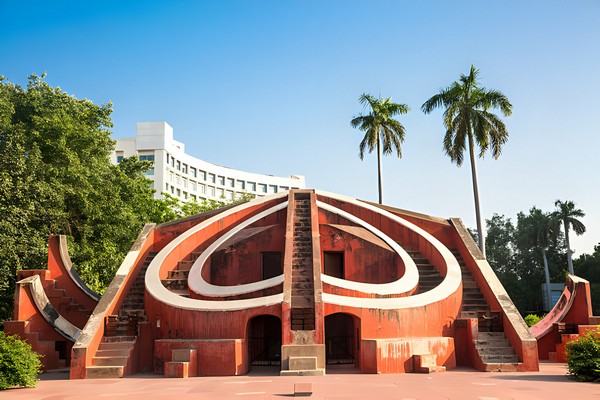
Best Time To Visit Jantar Mantar
The best time to visit Jantar Mantar, the historic astronomical observatory in Jaipur, India, is during the winter months of October to March. During this period, the weather is pleasant and comfortable, with temperatures ranging from 10 to 27 degrees Celsius (50 to 80 degrees Fahrenheit). The clear skies and mild temperatures make exploring the outdoor structures and intricate astronomical instruments a delightful experience. The winter months also coincide with various cultural events and festivals in Jaipur, adding an extra layer of charm to your visit. Avoiding the scorching heat of summer ensures a more enjoyable and leisurely exploration of this UNESCO World Heritage Site.
How To Reach Jantar Mantar
Air
Fly to Indira Gandhi International Airport in Delhi. Jantar Mantar is approximately 15 km away. Hire a taxi or use public transportation for a convenient journey.
Train
Reach New Delhi Railway Station. Jantar Mantar is around 6 km away. Take a taxi, auto-rickshaw, or use the metro for a quick commute.
Road
Drive to Jantar Mantar via Connaught Place or Parliament Street in central Delhi. Public buses, taxis, and auto-rickshaws are readily available for a smooth road journey.
Nearby Places To Visit

Jama Masjid

Chandni Chowk

India Gate
...and more
26. Great Himalayan National Park
The Great Himalayan National Park, located in the Indian state of Himachal Pradesh, was established in 1984 and declared a UNESCO World Heritage Site in 2014. Encompassing an area of 1,171 square kilometers, the park is renowned for its rich biodiversity, including rare species like the snow leopard and the Himalayan blue sheep. The park’s pristine landscapes feature alpine meadows, dense forests, and glacial rivers, providing a habitat for diverse flora and fauna. Nearby attractions include the picturesque Tirthan Valley, a haven for nature lovers, and the Serolsar Lake, known for its tranquil surroundings. The Great Himalayan National Park offers a gateway to the wonders of the Himalayas and stands as a testament to India’s commitment to preserving its natural heritage.
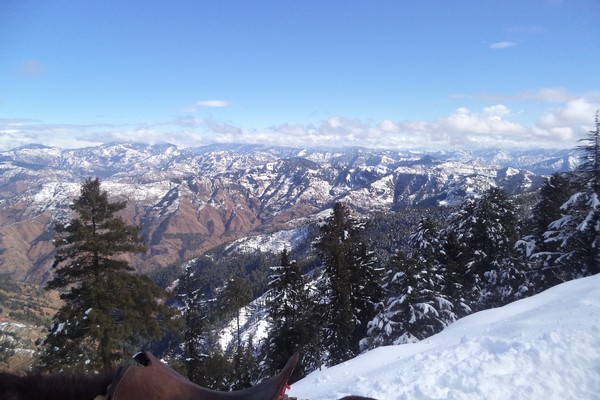
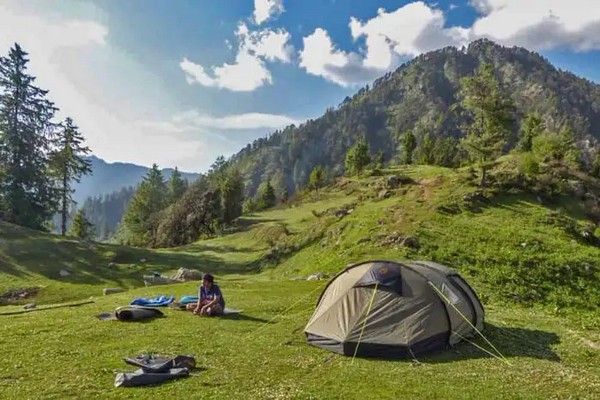
Best Time To Visit Great Himalayan National Park
The best time to visit the Great Himalayan National Park is during the months of May to June and September to November. During these periods, the weather is relatively mild, and the lush landscapes come alive with vibrant flora and fauna. In May and June, the park experiences pleasant temperatures, and the rhododendron blooms add a burst of color to the surroundings. September to November offers clear skies, making it ideal for trekking and wildlife spotting. Winter months, from December to February, bring heavy snowfall, making the park inaccessible to most visitors. Overall, the recommended times ensure an enchanting experience in this pristine Himalayan wilderness.
How To Reach Great Himalayan National Park
Air
The nearest airport is Bhuntar Airport in Kullu. From there, hire a taxi or take a bus to reach the park, approximately 50 km away.
Train
The nearest railway station is Joginder Nagar. From the station, hire a taxi or take a bus to cover the remaining distance of around 150 km.
Road
The park is well-connected by road. Regular buses and taxis operate from major nearby towns like Kullu and Manali. The journey offers picturesque views of the Himalayas.
Nearby Places To Visit
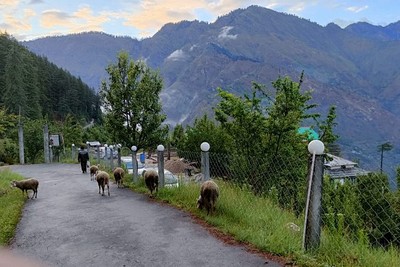
Serene Tirthan Valley
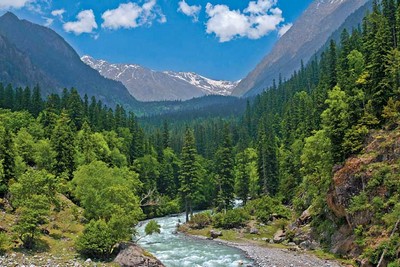
Majestic Rupi Bhaba
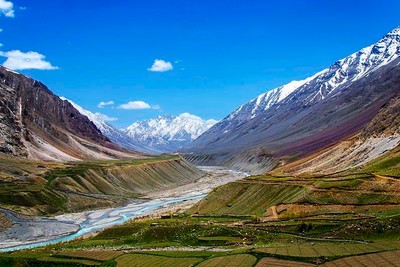
Pristine Pin Valley
...and more
27. Nalanda
Nalanda, an ancient center of learning in Bihar, India, traces its roots to the 5th century. Established during the Gupta dynasty, Nalanda University became a renowned seat of education and Buddhist philosophy, attracting scholars from across Asia. Flourishing until the 12th century, it housed thousands of students and revered teachers like Aryabhata. The site, rediscovered in the 19th century, now stands as a UNESCO World Heritage Site. Nearby attractions include Rajgir, famous for its hot springs and ancient ruins, and Bodh Gaya, where Buddha attained enlightenment. These sites collectively showcase India’s rich cultural and historical heritage, preserving its UNESCO treasures.
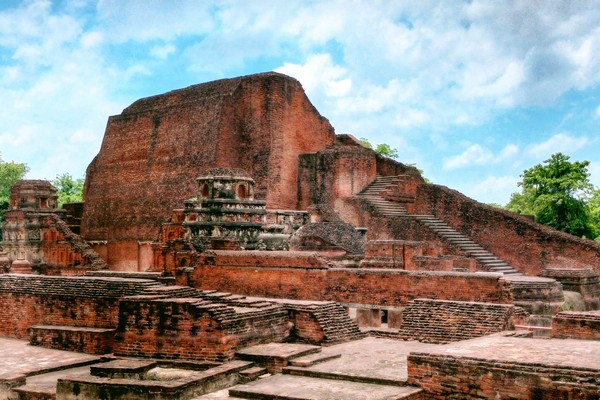
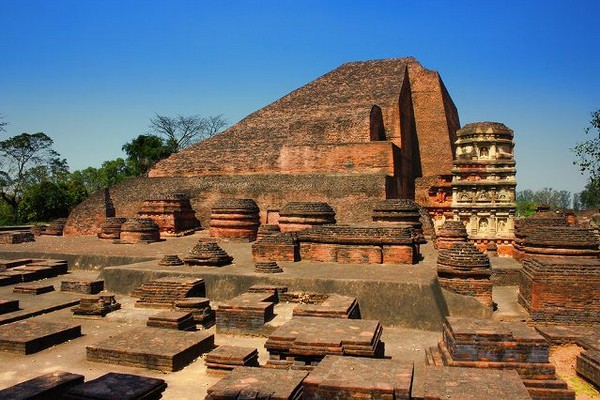
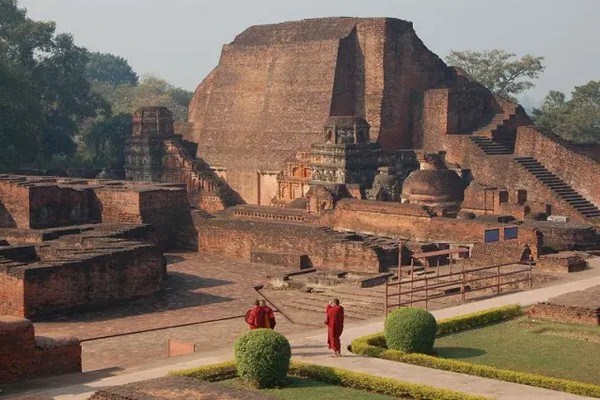
Best Time To Visit Nalanda
The best time to visit Nalanda, a renowned archaeological site in India, is during the winter months, from October to March. During this period, the weather is pleasant and comfortable, with temperatures ranging from 5°C to 25°C (41°F to 77°F). The winter season provides a favorable climate for exploring the ancient ruins of Nalanda University, a UNESCO World Heritage Site. The clear skies and mild temperatures enhance the overall experience, allowing visitors to appreciate the historical significance of the site without the discomfort of extreme weather conditions. It is advisable to avoid the scorching summer heat and the monsoon rains for a more enjoyable visit.
How To Reach Nalanda
Air
The nearest airport to Nalanda is in Patna, approximately 89 km away. Regular flights connect Patna to major cities. From the airport, one can hire taxis.
Train
Nalanda has a railway station well-connected to major cities like Delhi, Kolkata, and Patna. Trains offer a convenient and scenic journey, with options for various classes.
Road
Nalanda is accessible by road through well-maintained highways. Regular bus services connect it to nearby towns and cities. Taxis and private vehicles are also viable options.
Nearby Places To Visit
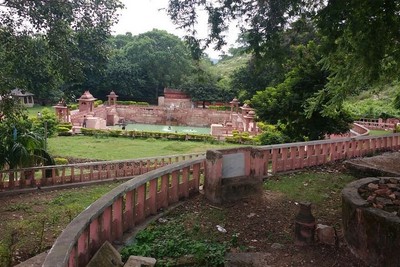
Rajgir Hot Springs
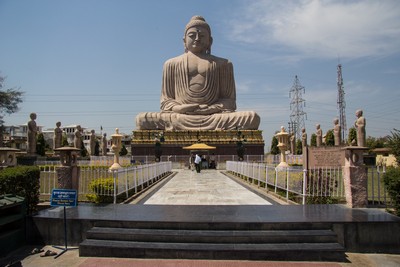
Bodh Gaya Pilgrimage
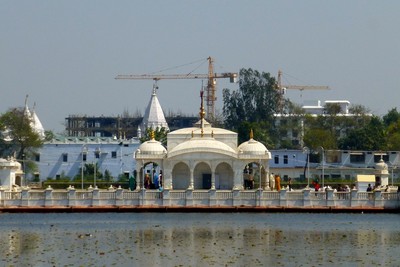
Pawapuri Jain Temple
...and more
28. Khangchendzonga National Park
Khangchendzonga National Park, nestled in the eastern Himalayas, was established in 1977 as India’s first “Mixed Heritage” site by UNESCO. Named after the majestic Mount Khangchendzonga, the third-highest peak globally, the park spans diverse ecosystems, harboring unique flora and fauna. Home to red panda, snow leopard, and numerous bird species, it’s a biodiversity hotspot. The park preserves Sikkim’s cultural heritage, featuring sacred monasteries and traditional villages. Nearby attractions include the sacred Gurudongmar Lake, the serene Yumthang Valley, and Pelling, offering breathtaking views of Khangchendzonga. Trekkers explore the mesmerizing landscapes and pristine alpine meadows, immersing themselves in the natural and cultural wonders.

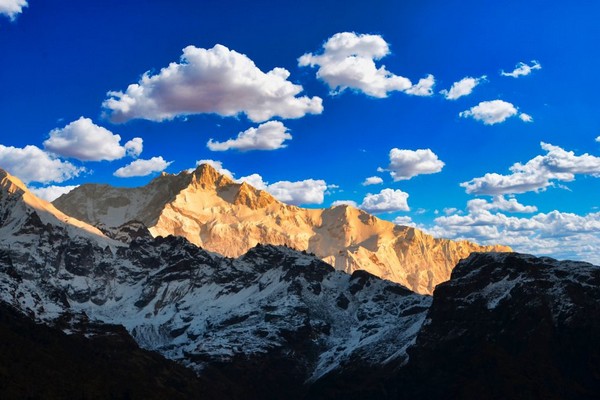
Best Time To Visit Khangchendzonga National Park
The best time to visit Khangchendzonga National Park is during the months of April to June and September to November. During these periods, the weather is relatively mild and stable, offering clear views of the stunning landscapes and the majestic Khangchendzonga mountain. Spring (April to June) showcases vibrant rhododendron blooms, while autumn (September to November) provides crisp air and breathtaking panoramas. Wildlife enthusiasts can witness diverse flora and fauna, including the elusive red panda and snow leopard. However, it’s essential to avoid the monsoon season (July to August) due to heavy rainfall, challenging trekking conditions, and limited visibility.
How To Reach Khangchendzonga National Park
Air
The nearest airport to Khangchendzonga National Park is Bagdogra Airport in West Bengal, India. From there, one can take a helicopter or drive to Gangtok, the capital of Sikkim.
Train
The nearest major railway station is New Jalpaiguri (NJP) in West Bengal. From NJP, one can hire a cab or take a scenic train journey to reach Gangtok, the gateway to Khangchendzonga National Park.
Road
Khangchendzonga National Park is well-connected by road. Visitors can drive from Siliguri or take a shared taxi to Gangtok. The park can be accessed by various road routes, offering breathtaking views of the Eastern Himalayas.
Nearby Places To Visit
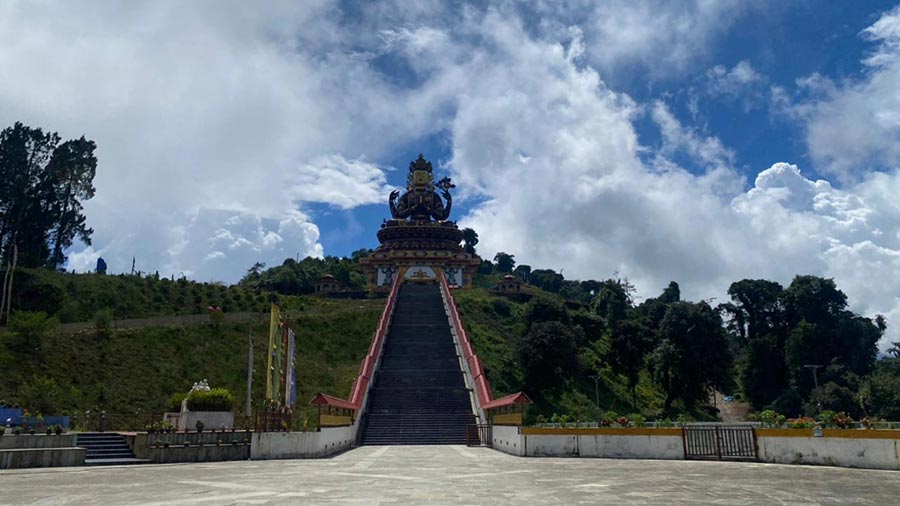
Pelling Monasteries
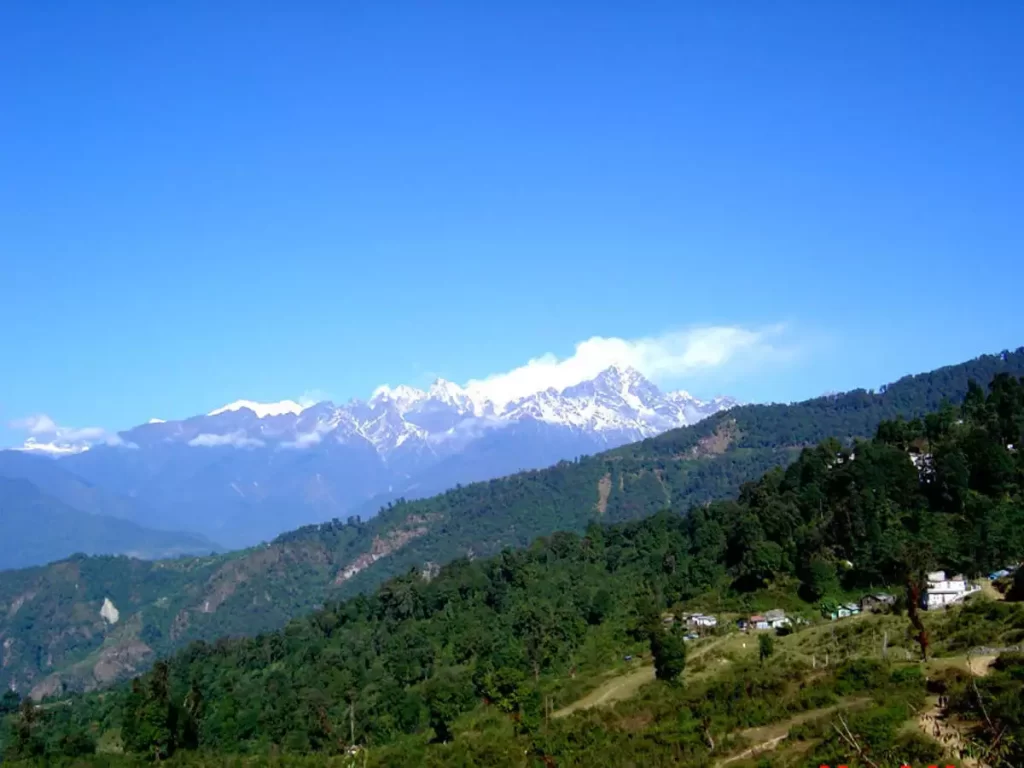
Yuksom Valley
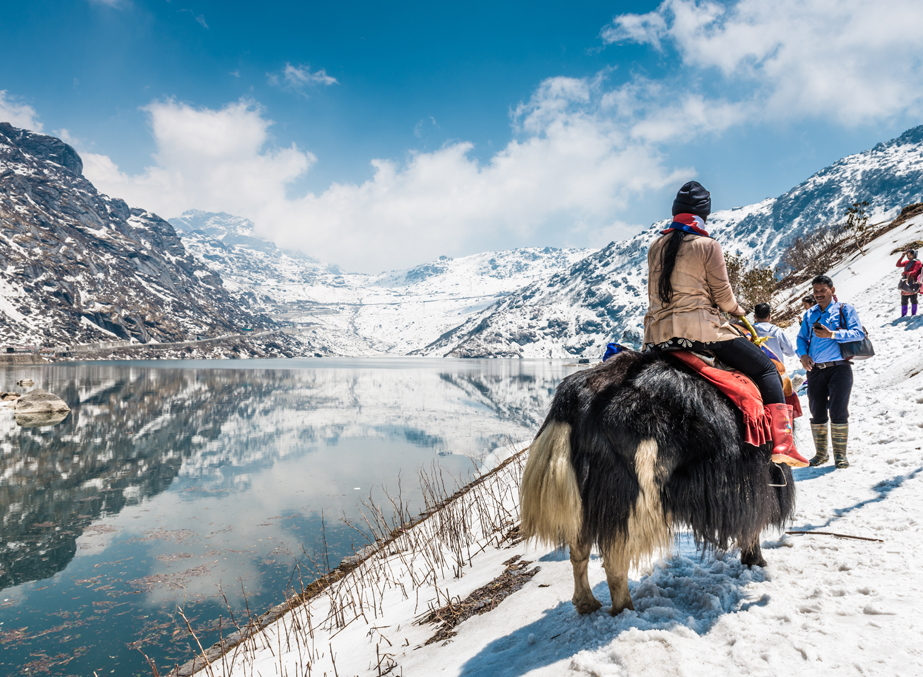
Tsomgo Lake
...and more
29. The Pink City
The Pink City, officially known as Jaipur, is a historic city in the Indian state of Rajasthan. Founded in 1727 by Maharaja Sawai Jai Singh II, the city is renowned for its unique architecture, characterized by pink-hued buildings that symbolize hospitality. This color scheme was adopted to welcome Prince Albert in 1876. Jaipur is home to iconic landmarks such as Hawa Mahal, City Palace, and Jantar Mantar, a UNESCO World Heritage site. The vibrant markets of Johari Bazaar and Bapu Bazaar offer a delightful shopping experience. Nearby attractions include the majestic Amer Fort, Nahargarh Fort, and the serene Jal Mahal, providing visitors with a rich cultural and historical experience.

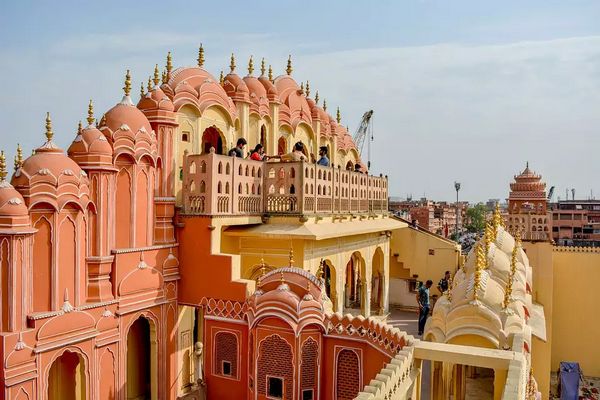
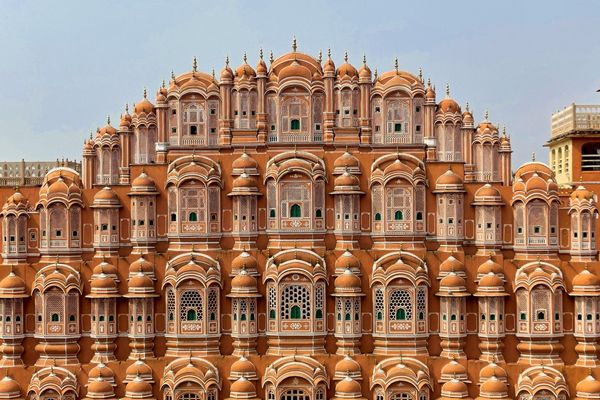
Best Time To Visit The Pink City
The Pink City, Jaipur, is a captivating destination with a rich history and vibrant culture. The best time to visit is during the winter months, from October to March, when the weather is pleasant and mild. During this period, temperatures range from 10 to 25 degrees Celsius, creating an ideal environment for exploring the city’s iconic palaces, forts, and bustling markets. The days are sunny, and the evenings are cool, enhancing the overall experience of the city’s architectural marvels, including the Hawa Mahal and Amer Fort. This time also coincides with various cultural festivals, adding to the charm of Jaipur’s allure.
How To Reach The Pink City
Air
Jaipur International Airport connects the Pink City globally. Located 13 km from the city, it offers regular flights.
Train
Jaipur Junction, a major rail hub, links the city efficiently. Trains from various destinations arrive here, making rail travel convenient.
Road
Well-connected by roads, Jaipur is accessible via highways. Buses and private vehicles connect the Pink City to neighboring towns and cities seamlessly.
Nearby Places To Visit
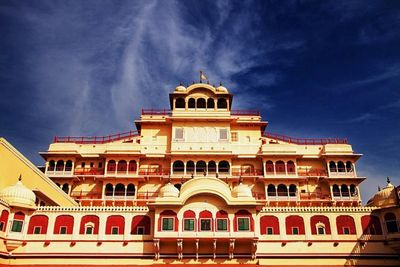
City Palace
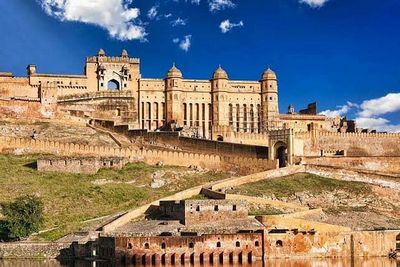
Amer Fort
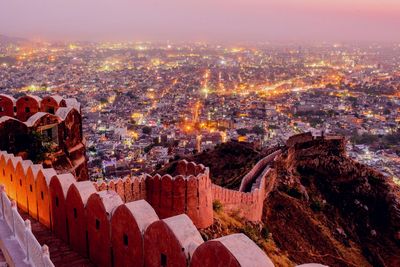
Nahargarh Fort
...and more
30. Kakatiya Rudreshwara (Ramappa) Temple
The Kakatiya Rudreshwara Temple, commonly known as the Ramappa Temple, is a marvel of medieval Indian architecture located in Palampet, Telangana. Constructed during the 13th century under the rule of the Kakatiya dynasty, it stands as a testament to their artistic and engineering prowess. The temple is dedicated to Lord Shiva and is renowned for its intricate carvings, intricate sculptures, and unique floating bricks technique. Nearby, the Ramappa Lake adds to the serene ambiance, offering a picturesque backdrop. Exploring the historic Warangal Fort and Thousand Pillar Temple in Warangal, along with the scenic Pakhal Lake, provides a comprehensive journey through Kakatiya heritage.
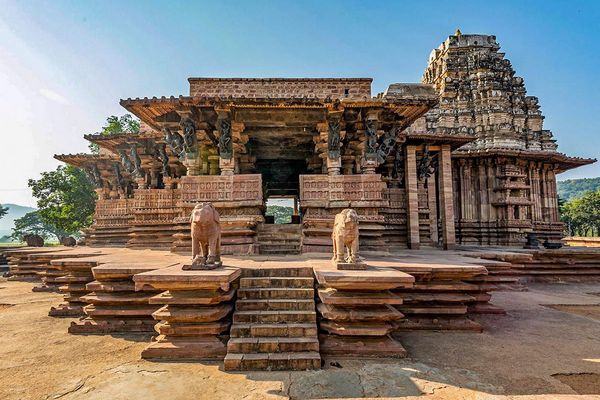
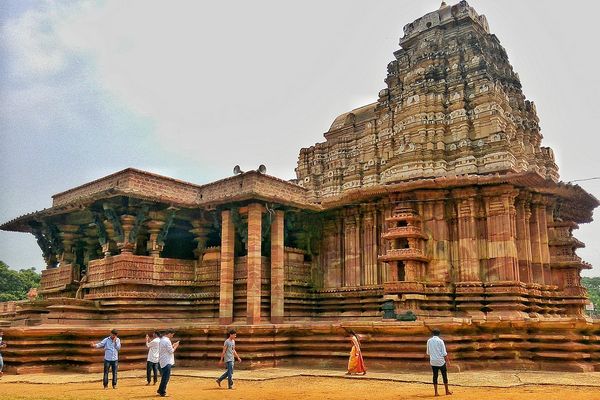
Best Time To Visit Kakatiya Rudreshwara (Ramappa) Temple
The best time to visit the Kakatiya Rudreshwara (Ramappa) Temple is during the winter months of October to March. Located in Palampet, Telangana, India, this 13th-century architectural marvel boasts intricate carvings and a unique floating brick technology. The winter season offers pleasant weather with temperatures ranging from 15 to 30 degrees Celsius, making it comfortable for exploration. During this period, visitors can enjoy the temple’s grandeur without the scorching heat of summer. Additionally, cultural and religious festivals, such as Shivaratri, add vibrancy to the atmosphere, providing a more enriching experience for those seeking both historical and spiritual encounters.
How To Reach Kakatiya Rudreshwara (Ramappa) Temple
Air
Nearest airport is Warangal Airport, well-connected to major cities. From there, hire a taxi or use public transportation to reach Ramappa Temple.
Train
Warangal Railway Station is the main hub. Take a taxi or bus to cover the 70km distance to Ramappa Temple.
Road
Well-maintained roads connect Kakatiya Rudreshwara Temple to Warangal and nearby cities. Hire a taxi, use buses, or drive to reach the exquisite Ramappa Temple.
Nearby Places To Visit
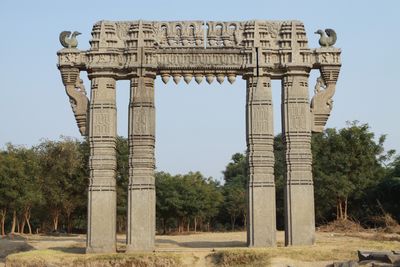
Kakatiya Dynasty
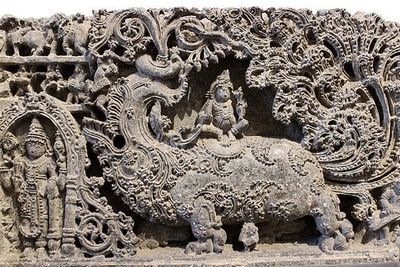
Intricate Sculptures
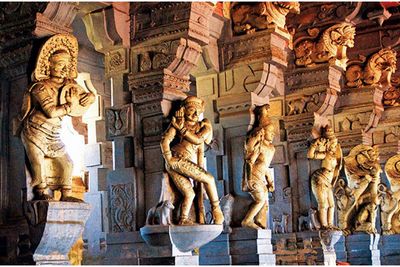
Spiritual Oasis
...and more
GET A FREE QUOTE
Feel free to get in touch with our team of wildlife experts and receive a free quote for your next tiger safari holiday! You could also use this channel to request for a custom wildlife holiday package in India!
Frequently Asked Questions
ome of the must-visit cultural destinations in India during your cultural and wildlife tour include the Taj Mahal in Agra, Jaipur’s palaces and forts, Varanasi’s spiritual sites, and the cultural heritage of cities like Delhi and Udaipur. For wildlife enthusiasts, national parks like Ranthambore, Kaziranga, and Jim Corbett offer incredible biodiversity.
The ideal time for a cultural and wildlife tour in India depends on your preferences and the regions you plan to explore. Generally, the winter months (October to March) offer pleasant weather for most parts of India. However, wildlife enthusiasts may prefer visiting national parks during the cooler months, while cultural tours can be enjoyed year-round.
India boasts incredible wildlife diversity. During wildlife tours, you can spot iconic species like Bengal tigers, Indian elephants, Indian rhinoceroses, leopards, and various bird species. Each national park and region has its unique fauna and flora, making India a wildlife enthusiast’s paradise.
Yes, cultural and wildlife tours in India can be family-friendly. Many tour operators offer family-oriented itineraries that include educational activities and interactions with local communities. However, it’s essential to consider the age and interests of your children and choose destinations and activities accordingly.
Packing essentials for a cultural and wildlife tour in India include comfortable clothing suitable for the season and region you’re visiting, sturdy walking shoes, insect repellent, sunscreen, a hat, a reusable water bottle, a camera with extra batteries, any necessary medications, and a power bank for charging electronic devices. Additionally, it’s wise to check specific packing recommendations with your tour operator based on your itinerary.

